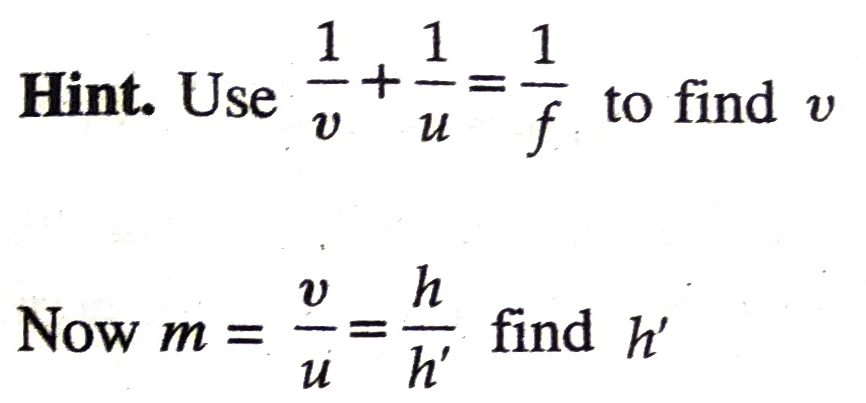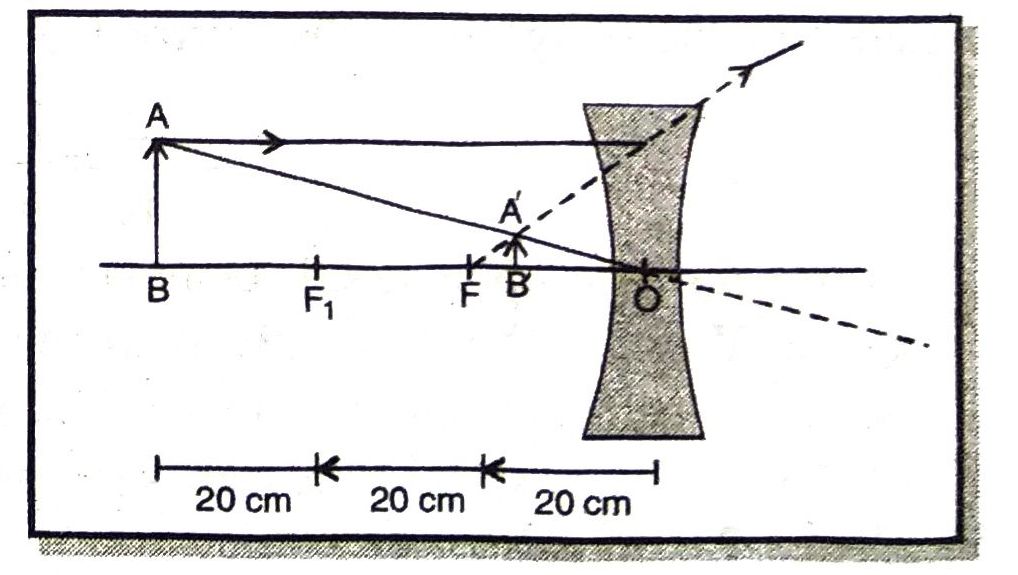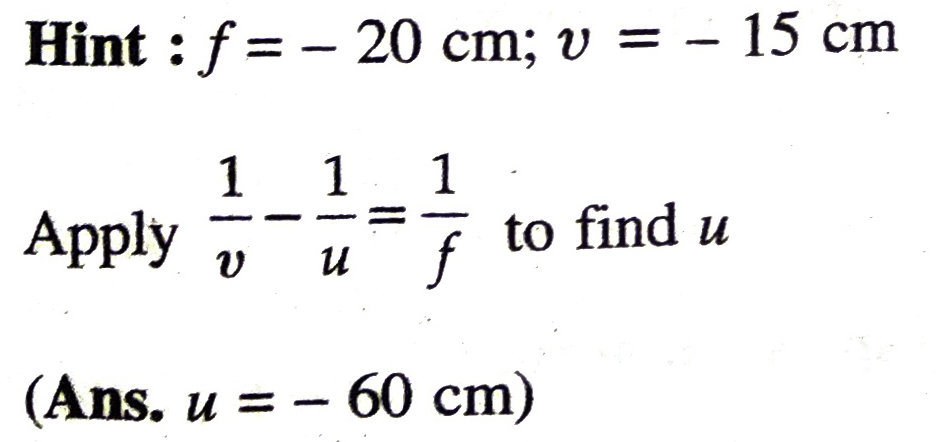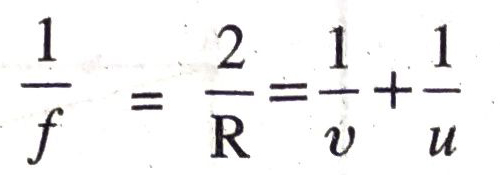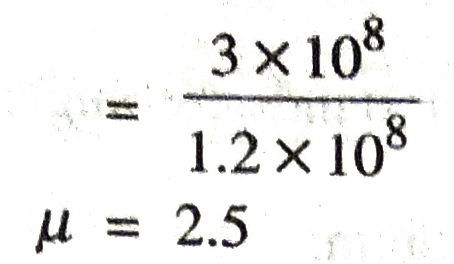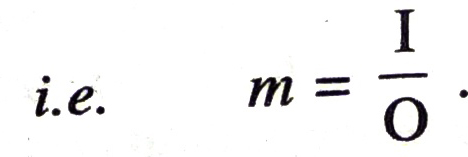JKBOSE 10th Class Science Solutions Chapter 1 Light : Reflection And Refraction
JKBOSE 10th Class Science Solutions Chapter 1 Light : Reflection And Refraction
Jammu & Kashmir State Board JKBOSE 10th Class Science Solutions
J&K class 10th Science Light : Reflection And Refraction Textbook Questions and Answers
BASIS AND BASICS
◆ Light is an external physical agent which produces in us the sensation of sight.
◆ When light travelling in one medium falls on the surface of another medium, the following three effects are observed :
(i) A part of incident light is turned back (or reflected) into the first medium.
(ii) Another part travels through the second medium along a changed path (i.e., the light is refracted).
(iii) The remaining part is absorbed by the second medium.
◆ Objects are always placed in front of mirror to its left, so u (object distance) is always negative.
◆ Focal length of convex mirror is taken as positive (+) and that of concave mirror as negative (-).
◆ Magnification of a concave mirror forming real image is m =v/u and that of convex mirror and also a concave mirror forming virtual image is m=–v/u.
◆ All distances measured in the direction of incident light are taken as positive and distances measured in a direction opposite to incident ray are taken as negative.
◆ Refraction of light. When light travels from one transparent medium into another medium of different optical density, the ray of light changes its path at the surface of separation of the two media. This phenomenon of bending of light ray when it travels from one medium to another medium of different optical density, is called refraction of light.
◆ When ray of light travels from an optically rarer to an optically denser medium, it bends towards normal.
◆ When ray of light travels from an optically denser to an optically rarer medium, it bends away from normal.
◆ The higher the refractive index the more is the denser medium.
◆ The ratio of sine of angle of incidence (sin i) to the sine of angle of refraction (sin r) is constant, called refractive index of the medium.
◆ Refractive index of a medium is the ratio of velocity of light in vacuum to the velocity of light in a medium.
◆ Lens is a portion of transparent and refracting medium.
◆ The relation between the object distance (u), the image distance (v) and the focal length (ƒ) of a lens is called lens formula i.e.
1/f = 1/v – 1/u
◆ The power of a lens is the reciprocal of its focal length. Its unit is dioptre.
◆ Power of plane glass is zero since its focal length is infinity.
◆ The magnification produced by the plane mirror is + 1.
IMPORTANT TERMS AND FACTS TO MEMORISE
♦ For a mirror
2/R = 1/v + 1/u and 1/f = 1/v + 1/u
Magnification produced by mirror
m = v/u (for concave mirror forming real image.)
m = – v/u (for concave mirror when forming virtual image and for convex mirror.)
♦ Laws of refraction are:
(i) Incident ray, normal and refracted ray all lie in the same plane.
(ii) Ratio of sine of angle of incidence to the sine of the angle of refraction is constant i.e., sin i / sin r = n, where n is a constant called refractive index of second medium with respect to first medium.
♦ Optical denser medium is one which has refractive index more and optically rarer medium has lesser refractive index.
TEXT BOOK QUESTIONS (SOLVED)
Q. 1. Define the principal focus of concave mirror. (Jammu Winter Zone 2011, 2013)
Ans. Principal focus. It is a point on the principal axis of a concave mirror where the rays parallel to principal axis meet after reflection from the mirror. [Point F in Fig.]
Q. 2. The radius of curvature of a spherical mirror is 20 cm. What is its focal length ?
Sol. Spherical mirror may be either convex mirror or a concave mirror.
For convex mirror,
Radius of curvature (R) = + 20 cm
Focal length (ƒ) = ?
We know, ƒ=R/2
∴ ƒ=20/2=10 cm Ans.
For concave mirror,
Radius of curvature (R) = – 20 cm
Focal length ƒ = ?
We know, ƒ = R/2
ƒ = – 20/2 = – 10 cm Ans.
Q. 3. Name a mirror which can give an erect and enlarged image of an object. (Jammu 2013) (Kashmir 2015)
Ans. Concave mirror produces an erect and enlarged image when the object is placed between its pole and principal focus.
Q. 4. Why do we prefer a convex mirror as back view mirror in vehicles ? (Jammu 2013)
Ans. Preference of convex mirror as rear view mirror in vehicles. We prefer to have convex mirror as a rear view mirror in vehicles because of the following reasons :
(i) It produces an erect image of the object (traffic behind).
(ii) The size of the image formed is much smaller than the size of the object.
(iii) It has a wider field of view.
Fig. (a) Small field view (AB) (b) Very large field of view (A’B’).
For the same size of the plane and convex mirror, the field of view is from A to B [Fig. (a) for plane mirror], from A’ to B’ [Fig. (b) for convex mirror].
PAGE 11
Q. 1. Find the focal length of convex mirror whose radius of curvature is 32 cm.
Sol. Radius of curvature (R) = + 32 cm (for convex mirror, R is +ve);
Focal length (ƒ) = ?
We know, ƒ = R/2
∴ ƒ = 32/2 = 16 cm Ans.
Q. 2. A concave mirror produces three times magnified (enlarged) real image of an object placed at 10 cm in front of it. Where is the image located ?
Sol. Here, Magnification (m) = – 3 [for real image m is taken as negative]; [u is always negative]
u = – 10 cm
v = ? ;
We know, m = – v/u
– 3 = – v/(-10)
∴ v = – 30 cm Ans.
Since the value of v is negative, therefore, the image is formed at 30 cm on the same side of the mirror as that of the object.
PAGE 15
Q. 1. A ray of light travelling in air enters obliquely into water. Does the light ray bend towards normal or away from normal? Why?
Sol.
anw = sin i / sin r
Since anw > 1,
sin i > sin r
or i > r
or r < i
Hence, a ray of light travelling from optically rarer medium (air) to an optically denser medium (water), bends towards normal.
Q. 2. Light enters from air to glass having refractive index 1.50. What is speed of light in glass ? Speed of light in vacuum is 3 × 108 m s-1.
Sol. Refractive index of glass (μg) = 1.50
Speed of light in vacuum (c) = 3 × 108 m s-1
We know, Refractive index = Speed of light in vacuum (c) / Speed of light in glass (υg)
1.50 = 3 x 108 /υg
or υg = 3 x 10 /1.50
∴ υg = 2 x 108 m s-1 Ans.
Q. 3. Find out from table, the medium having highest optical density. Also find the medium with lowest optical density.
| Material |
Refractive Index with respect to vacuum |
Material |
Refractive Index with respect to vacuum |
| Air |
1.0003 |
Canada Balsam |
1.53 |
| Ice |
1.31 |
Rock Salt |
1.54 |
| Water |
1.33 |
Carbon disulphide |
1.63 |
| Alcohol |
1.36 |
Dense flint glass |
1.65 |
| Kerosene oil |
1.44 |
Ruby |
1.71 |
| Fused quartz |
1.46 |
Sapphire |
1.77 |
| Turpentine oil |
1.47 |
Diamond |
2.42 |
| Benzene |
1.50 |
Crown glass |
1.52 |
Ans. Optical density of a medium depends upon its refractive index. The higher the refractive index, higher is the optical density and vice versa.
From the data available in the table it is apparent that diamond is having highest optical density (n = 2.42) and air is having lowest optical density (n = 1.0003).
Q. 4. Refractive indices of kerosene, turpentine and water are 1.44, 1.47 and and 1.33 respectively. In which material does the light travel fastest and why ?
Ans. Refractive indices of kerosene, turpentine and water are 1.44, 1.47 and 1.33 respectively. We know that velocity of light in a medium is inversely proportional to refractive index of the medium. Therefore, light will travel fastest in water (having least refractive index i.e. n = 1.33) and slowest in turpentine oil having maximum refractive index i.e., n = 1.47.
Q. 5. The refractive index of diamond is 2.42. What is the meaning of this statement ?
Ans. We know, Refractive index of diamond = Velocity of light in vacuum / Velocity of light in diamond
or Velocity of light in diamond = Velocity of light in vacuum / Refractive index of diamond
The statement means that velocity of light in diamond is 1/2.42 times the velocity of light in vacuum.
i.e., υD = 3×108 / 2.42 m s-1
= 1.24 × 108 m s-1
In other words, light travels 2.42 times faster in vacuum than in diamond.
PAGE 22
Q. 1. Define one (1) dioptre of power of a lens.
Or
What is power of lens? Give the commercial unit of power.
Or
Define power of lens. Give its unit.
Ans. Power of Lens. It is defined as the ability of a lens to bend incident light rays. It is measured by taking reciprocal of focal length measured in metres. S.I. unit of power of lens is Dioptre (D).
Q. 2. A convex lens forms a real and inverted image of a needle at a distance of 50 cm from it. Where is the needle be placed in front of the convex lens if the image is equal to size of the object? Also, find the power of the lens.
Sol. Here u = ?, ƒ= ?, P = ?,
υ = + 50 cm, (for real image v is taken as positive);
m = – 1 (Real image is always inverted)
m = h’/h = υ/u
But, h’/h = – 1
Inverted image is of the size of the object
∴ m = υ/u
or – 1 = 50/u
or u = – 50 cm
1/ƒ =1/υ-1/u
= 1/50 – 1 (-50)
= 1/50 + 1/ 50
1/ƒ = 2/50
= 1/25
f = 25 cm
= 0.25 m
But, Power of the Lens, P = 1/ƒ
= 1/0.25
P = 4 D Ans.
Q. 3. Find the power of a concave lens of focal length 2 m.
Sol. Here ƒ = -2 m (for concave lens f is taken as negative.)
P = ?
We know, Power of lens P = 1/ƒ
= 1/(-2)
or P = 0.5 D Ans.
TBE
TEXT BOOK EXERCISES (SOLVED)
Q. 1. Which of the following materials cannot be used to make a lens ?
(a) Water, (b) Glass, (c) Plastic, (d) Clay.
Ans. (d) Clay, which is opaque.
Q. 2. The image formed by a concave mirror is observed to be virtual, erect and larger than object. Where should be the position of the object ?
(a) between principal focus and the centre of curvature.
(b) at centre of curvature.
(c) beyond centre of curvature.
(d) between the pole of the mirror and its principal focus.
Ans. (d) between the pole of the mirror and its principal focus.
Q. 3. Where should an object be placed in front of a convex lens to get a real image of the size of the object?
(a) at principal focus of the lens.
(b) at twice the focal length of lens.
(c) at infinity.
(d) between optical al centre of the lens and its principal focus.
Ans. (b) at twice the focal length of the lens.
Q. 4. A spherical mirror and a thin spherical lens have each a focal length of -15 The mirror and lens are likely to be :
(a) both are concave.
(b) both are convex.
(c) mirror is concave and lens is convex.
(d) mirror is convex but lens is concave.
Ans. (a) both are concave.
Q. 5. No matter how far you stand from a mirror, your image appears erect. The mirror is likely to be :
(a) plane only.
(b) concave only.
(c) convex only.
(d) either plane or convex.
Ans. (d) Either plane or convex.
Q. 6. Which of the following lenses would you prefer to use while reading small letters in a dictionary ?
(a) A convex lens of focal length 50 cm.
(b) A concave lens of focal length 50 cm.
(c) A convex lens of focal length 5 cm.
(d) A concave lens of focal length 5 cm.
Ans. (c) A convex lens of focal length 5 cm.
Q. 7. (a) We wish to obtain an erect image of an object, using a concave mirror of focal length 15 cm. What should be the range of distance of the object from the mirror ? What is the nature of the image ? Is the image larger or smaller than object ? Draw a ray diagram to show the image formation in this case.
Ans. The image formed in the concave mirror would be erect only when the object is placed between pole and principal focus of the concave mirror. Therefore, range of distance is greater than zero and less than focal length i.e., between 0-15 cm.
This image is erect, enlarged, virtual and is formed behind the mirror.
Q. 7. (b). Name the type of mirror used in the following situations :
(a) Head-light of a car.
(b) Side/rear-view mirror of a vehicle.
(c) Solar furnace.
Support your answer with reason.
Ans. (a) Concave mirrors are used for head-lights of car to give concentrated parallel beam of light.
(b) Side/rear-view mirror of a vehicle is mostly convex mirror because it forms an erect, virtual and diminished image and therefore, gives a wider field of view of the traffic behind. However, for judging the distance and speed of the rear vehicle, a plane mirror fixed inside the car.
(c) Solar furnaces use concave mirror. It is because parallel sun rays (coming from infinity) after reflection from concave mirror are converged at focus to produce much heat.
Q. 8. One half of a convex lens is covered with a black paper. Will this lens produce a complete image of the object ? Explain your observation.
Ans. If lower half of a convex lens is covered with black paper no doubt it will form complete image but intensity (brightness) of image with half lens will be less as that with complete lens exposed. The nature, size and location of the image will be the same since light from all parts of the object reaches the exposed part of the lens.
Q. 9. An object 5 cm in length is held 25 cm away from a converging lens of focal length 10 cm. Draw the ray diagram and find the position, size and the nature of image formed.
Sol.
Here, Length of the object (h) = 5 cm,
Image distance (υ) = ?,
Object distance form the lens (u) = – 25 cm
h’=?; f= + 10 cm
Using lens formula, 1/f=1/v-1/u
or 1/v=1/u+1/f
1/v=1/-25+1/10
1/v=-2+5/50
= 3/50
∴ v=16.7 cm
Now magnification, (m) = h’/h=v/u
or h’=hxv/u
h’=5x(50/3)/-25
= -250/75
= -3.3 cm
h’= -3.3 cm Ans.
Negative sign shows that the image is inverted, real and diminished (3.3 cm) which is formed at 16.7 cm distance on the right side of lens.
Q. 10. A concave lens of focal length 15 cm forms an image 10 cm from the lens. How far is the object placed from the lens ? Draw ray diagram as well.
Sol. Distance of the image from the lens (v) = -10 cm [Real image]
Focal length of concave lens (f)=-15 cm [Focal length of concave lens is taken negative] Distance of the object from the lens (u) = ?
Using lens formula 1/f=1/v-1/u
or 1/u=1/v-1/f
1/u=1/-10-1(-15)
= – 14/10+1/15
= – 3+2/30
= – 1/30
u = – 30 cm
Negative sign of u shows that the object is placed to the left side of lens at a distance of 30 cm from the lens.
Q. 11. An object is placed at a distance of 10 cm from a convex mirror of focal length 15 cm. Find the position and nature of the image.
Sol. Distance of the object from the lens (u) = – 10 cm
Focal length of the lens (f) = + 15 cm
Distance of the image from the lens. (v) = ?
Using Mirror formula, 1/f=1/v+1/u
we have 1/15=1/v+1(-10)
or 1/v=1/15-1/10
= 2-3/30
= -1/30
∴ v = -30 cm
Negative sign shows that the image is virtual and erect and is formed towards left of the mirror.
Q. 12. The magnification produced by a plane mirror is + 1. What does this signify (mean) ?
Ans. It means that image produced by plane mirror is virtual, erect and of the same size as that of the object.
Q. 13. An object 5.0 cm of length is placed at a distance of 20 cm in front of a convex mirror of radius of curvature 30 cm. Find the position of the image, its nature and size.
Sol. Here, h = 5.0 cm; u = – 20 cm
Radius of curvature (r) = + 30 cm
But f = r/2
= 30/2
∴ f = + 15 cm
v = ? ;
h’ = ?
Using Mirror formula, 1/f=1/v+1/u
or 1/v=1/f-1/u
1/v=1/15-1(-20)
=1/15+1/20
= 4+3/60
= 7/60
Image distance from the mirror v = 60/7=8.56 cm
Thus, the image is formed behind the mirror or to the right of the mirror.
Magnification (m) = h’/h = – v/u
or h’ = -hx v/u
-5.0(60/7)/-20
= 60/7×7
= 15/7
∴ h’ = 2.14 cm Ans.
Positive sign (+) indicates that the image is erect and formed above the principal axis.
Q. 14. An object of size 7.0 cm is placed at 27 cm in front of a concave mirror of focal length 18 cm. At what distance from the mirror should the screen be placed, so that a sharp focussed image can be obtained ? Find the size and the nature of the image.
Sol. Here, Height of the object h = 7.0 cm ;
u = – 27 cm
f = – 18 cm
v = ? ; h’ = ?
Using mirror formula ;
1/f = 1/v + 1/u
or 1/v = 1/f – 1/u
1/v = 1/(-18) – 1/(-27)
= – 1/18 + 1/27
1/v = -3+2/54 = – 1/54
Image distance from the mirror v = – 54 cm
i.e., at 54 cm on the same side of the mirror as that of the object.
Now, Magnification (m) = h’/h = – v/u
h’/7.0 = (-54)/(-27)
or h’ = -2×7
∴ h’ = – 14 cm Ans.
Image is of size 14 cm i.e. magnified. Negative sign (-) shows that the image is real and inverted and is formed below the principal axis of the mirror.
Q. 15. Find the focal length of a lens of power – 2.0 D. What type of lens is this?
Sol. Here, Power of lens (P) = 2.0 D
Focal length of lens (f) = ?
We know f = 1/P
= 1/-2
= -0.5 m
∴ f = – 50 cm Ans.
Negative sign indicates that the lens is concave. Therefore, it is a divergent lens.
Q. 16. A doctor has prescribed a corrective lens of power + 1.5 D. Find the focal length of lens. Is prescribed lens diverging or converging?
Sol. Here power of lens (P) = + 1.5 D.
Focal length of lens (f) = ?
We know f = 1/P
= 1/15
= 0.67
∴ f = 0.67 m Ans.
The positive sign (+) shows that the lens is a convex lens which is diverging in nature.
Q. 17. An object 5.0 cm in length is placed at a distance of 20 cm in front of a convex mirror of radius of curvature 30 cm. Find the position of its image, its nature and size.
Sol. Given, Length of the object, 0 = 5.0 cm; I = ?; u = -20 cm; v = ?; R = 30 cm
Using Mirror Formula, 2/R = 1/u + 1/v, we have
2/30 = 1/-20+ 1/v
or 1/v = 2/30 – 1/-20
or 1/v = 1/15 + 1/20
or 1/v = 4+3/60
= 7/60
∴ v = 60/7
= 8.6 cm
we know m = I/O = v/u
I/5 = 60/7x(-20)
I = 60×5/7x(-20)
I = -15/7
∴ I > 1
Image is virtual and formed 8.6 cm behind the mirror. It is magnified image.
ADDITIONAL IMPORTANT QUESTIONS
LONG ANSWER TYPE QUESTIONS
Q. 1 (a). Define reflection. Explain the laws of reflection with suitable diagram.
(b) State characteristics (properties) of the image formed by a plane mirror.
Or
Write down at least five characteristics of images formed by plane mirrors.
Ans.(a) Reflection. When a beam of light strikes a polished surface, the light is sent back in the same medium. This phenomenon of coming back of light in the same medium when it strikes a polished surface, is called reflection of light.
Laws of Reflection. The phenomenon of reflection of light is governed by the following two laws :
1. The incident ray, the normal and the reflected ray all lie in the same plane.
2. Angle of incidence is always equal to the angle of reflection.
i.e. ∠i = ∠r
(b) Characteristics of Images formed by a plane mirror.
Image formed by plane mirror is :
1. erect.
2. as far behind the mirror as the object is in front of it.
3. of the same size as that of object.
4. laterally inverted i.e., left side becomes right and right becomes left as shown in Fig. (b).
5. virtual and hence cannot be obtained on the screen.
Q. 2. What are the rules for formation of images ?
Ans. There are following three rules for formation of images. Any two rays from three rules can be considered to locate the image.
Rule 1. The ray coming parallel to principal axis, after reflection will pass through principal focus of the concave mirror [Fig. (a)].
In convex mirror, parallel rays after reflection appear to diverge from principal focus [Fig. (b)] since convex mirror is divergent.
Rule 2. A ray incident on mirror after passing through principal focus F of a concave mirror will become parallel to principal axis after reflection as is shown in Fig. (c).
In convex mirror, a ray directed towards F after reflection goes parallel to principal axis as is shown in Fig. (d).
Rule 3. A ray incident on mirror after passing through centre of curvature shall be reflected back along the same path as is shown in Fig. (e) because the incident ray falls normal to the reflecting surface of the mirror In convex mirror, a ray directed towards C is reflected back along the same path [Fig. (f)].
Q. 3. (a) Form the image in case an object is moved from infinity to the concave mirror.
(b) Describe with the help of diagram the nature, size and position of the image formed when an object placed at centre of curvature of a concave mirror.
Ans. (a) Images formed by concave mirror when it is moved from infinity to the mirror
1. Object is at Infinity. Two cases arise :
(i) When mirror is in parallel plane to the object. In such a case, rays from infinity come parallel to principal axis. After reflection they pass through principal focus F. Image is extremely small, real, inverted and it is formed at the principal focus [Fig. (a)].
(ii) When the rays strike the mirror obliquely. The ray AB passing through F after reflection goes parallel to principal axis towards BA’. Another ray DE through C striking normally to the mirror at E is reflected back. The two rays form an image at A’. Image is real, inverted, extremely diminished and is formed at F [Fig. (b)].
Fig. (a). Object at infinity, real, extremely diminished image is formed at principal focus.
Fig. (b). Object at infinity, image at F. It is real, inverted, very much diminished.
2. Object beyond C. A ray of light AD from A parallel to principal axis after reflection passes through F. Another ray from A passes through C, and is reflected back along the same path, forming real, diminished, inverted image A’B’, between F and C. [Fig. (c)].
3. Object at centre of curvature, C i.e., at 2f (Jammu 2013). A ray AD from A parallel to principal axis after reflection from mirror passes through F.
Another ray AD’ from A passes through F and goes parallel to principal axis i.e., towards, D’A’ forming real, inverted image of AB at C i.e., at 2f. The image is of the same size as the object [Fig. (d)].
Fig. (d). Object at C. Image is also at C. It is real.
4. Object between F and C between [f and 2f]
A ray AD from object going parallel to principal axis is reflected towards F. Another ray AE as of coming through C is reflected back forming image of A at A’. Similarly image of B is formed at B’. Image is real, inverted, enlarged and formed beyond C (2f) i.e., as shown in Fig. (e).
Fig. (e). Object between F and C. Image is beyond C. It is real, inverted and enlarged.
5. Object at F. A ray AD parallel to principal axis passes through F. Another ray AE strikes the mirror normally at E is reflected back as it appears to pass through C. This reflected ray becomes parallel to reflected ray DY and, therefore, forms an image of object AB at infinity. The image is very much enlarged and is real and inverted [Fig. (ƒ)].
6. Object between F and P (Principles focus and Pole).
A ray AD from A goes parallel to principal axis after reflection passes through F. Another ray AE striking the mirror normally through C is reflected back. These to reflected rays do not actually meet but meet when produced backward, therefore, they form virtual image of the object behind the mirror. The image is erect and enlarged and formed behind the mirror [Fig. (g)].
Fig. (g). Object between F and P. An erect, enlarged, virtual image is formed behind the mirror
(b) Please see Fig. (d) and its description given on previous page.
Summary of Images formed by a Concave Mirror
| Position of Object |
Position of Image |
Size of the Image |
Nature of Image |
|
At infinity
Beyond C
At C
Between F and C
At F
Between P and F
|
At focus F
Between F and C
At C
Beyond C
At infinity
Behind the mirror
|
Highly diminished
Diminished
Same size
Enlarged
Highly Enlarged
Enlarged
|
Real and inverted
Real and inverted
Real and inverted
Real and inverted
Real and inverted
Virtual and erect
|
Q. 4. How are the images formed in convex mirror when object is moved from infinity to the mirror ?
Or
Explain with the help of suitable diagram, how a convex mirror diverge parallel beam of light rays. Mark the focus.
Or
Give the nature, size and position of image formed by a convex mirror.
Ans. Object at Infinity. Consider rays from the object at infinity coming parallel to the principal axis. Ray AB is reflected towards BH and ray EG is reflected towards GJ. These two reflected rays do not actually meet but meet at F when produced backward.
An extremely small, erect, virtual image is formed at F [Fig. (a)].
Object placed anywhere except infinity. A ray AD parallel to principal axis after reflection from the mirror appears to pass through F. Another incident ray AE falling normal to mirror and appearing to pass through C, is reflected back along the same path. They appear to meet at A’ forming image of A. Similarly, image of B is formed at B’. Thus image of AB is formed at A’B’ between P and F behind the mirror. This image is virtual, erect and diminished in size.
Fig. (b). Object anywhere. A virtual, erect, diminished image is formed behind the mirror between F and P.
Q. 5. Define magnification of a spherical mirror. What will be the magnification in case of a plane mirror ?
Ans. Magnification of spherical mirror. It is defined as the ratio of the size of the image formed to the size of the object.
∴ Magnifying power, m = Size of the image (h₂)/Size of the object (h₁)
Since ∠i = ∠r
In similar As ABP and A’B’P,
A’B’/AB = PB’/PB
Now AB = + h₁
A’B’ = – h₂
PB = – u
PB’ = – υ
Substituting these values in equation (i), we have
-h₂ /h₁ = -υ/-u
or -h₂/h₁ = υ/u
∴ m = h₂ /h₁ = -υ/u
Similarly for convex mirror;
m = h₂ /h₁ = -υ/u
Magnification is positive when image is erect and virtual and magnification, m is negative when image is inverted and real.
Magnification of convex mirror as well as plane mirror is positive. Magnification of plane mirror is + 1 since the image is erect and of the same size. glass slab ?
Q. 6. What is lateral displacement through rectangular (Jammu Winter Zone 2012, 2013) (Kashmir 2015)
Ans. Place a glass slab on a plane sheet of paper fixed on a drawing board. Draw its boundary. Fix two pins A and B on one side of the slab. Look through the opposite side of the slab and fix two pins C and D in such a way that all the four pins A, B, C, D appear to be in a straight line. CD is the emergent ray and let it subtend an angle e with normal.
In first refraction from a to b, i is the angle of incidence and r is the angle of refraction.
∴ nba = sin i/sin r
In second refraction taking place at E, the angle of incidence in medium b is r and angle of refraction in medium a is e.
∴ nba = sin r/sin e
From (i) and (ii), we have
nba × nab = sin i/sin r × sin r/sin e
But nba × nab = 1, According to principle of reversibility.
∴ 1 = sin i/sin e
∴ i = e
Hence, angle of emergence is equal to angle of incidence. Therefore, incident ray produce i.e., AOFd parallel to emergent ray ED.
Thus a ray incident on a glass slab, emerges parallel to incident ray, it only suffers a LATERAL DISPLACEMENT equal to EF i.e., incident ray shifted sidewards. Lateral displacement varies directly as the thickness of glass slab.
Fig. Refraction through rectangular slab. Lateral displacement.
Q. 7. What are types of spherical lenses ? Describe the Principal focus, Aperture and optical centre of a spherical lens.
Ans. Types of Spherical Lenses. Spherical lenses are mainly of two types :
(i) Convex lens or Converging lens
(ii) Concave lens or Diverging lens
(i) Convex Lens or Converging Lens. It is thicker at the centre and thin at the edges. It is also called converging lens because it converges parallel beam of light at the focus. Convex lens is further of three types depending upon the nature of the surfaces it has.
Types of Convex Lens.
(a) Double Convex Lens. Both of its surfaces are convex as shown in the figure.
Fig. (a) Double Convex lens.
(b) Plano-convex Lens. It has one surface convex and the other surface plane as shown in the figure.
Fig. (b) Plano-Convex lens.
(c) Concavo-convex lens. In this lens one surface is convex while the other is concave as shown in figure.
Fig. (c) Concavo-Convex lens.
(ii) Concave Lens or Diverging Lens. It is thin at the centre and thick at the edges. It diverges parallel beam of light. It has virtual focus.
Fig. Concave lens.
Types of Concave Lens.
A concave lens is of following three types:
(a) Double Concave Lens. This lens has both concave surfaces as shown in figure.
Fig. (a) Double Concave lens.
(b) Plano-Concave Lens. In this lens one surface is concave while the other is plane surface as shown in figure.
Fig. (b) Plano-concave lens.
(c) Convexo-Concave Lens. In this type of lens one surface is convex while the other is concave as shown in figure.
Fig. (c) Convexo-concave lens.
Principal Focus. It is a point (F) on the principal axis through which a beam of light parallel to the principal axis of the convex lens passes after refraction.
In case of concave lens, a beam of light parallel to the principal axis, appears to diverge from a point F called the principal focus.
Aperture. The diameter of the surface of the lens is called its Aperture. In figure AB is the aperture.
Optical Centre. The centre (O) of the lens or the point through which a light ray passes without deviation, is called optical centre of the lens.
Q. 8. How are the images formed when an object is moved from infinity to the convex lens ?
Or
Draw the ray diagrams and find position, nature and size of image formed by a convex lens, when object is placed :
(i) at infinity
(ii) between focus and twice the focus (f and 2ƒ).
Ans. 1. Object at Infinity. When object is at infinity, a real image is formed at F on the other side of the lens (Fig. a).
However if the rays are parallel to themselves but not parallel to principal axis, then these rays after refraction will form image at focus F’ and not at principal focus F [Fig. (b)].
Fig. (a). Object at infinity. Image at F on the other side of lens.
Fig. (b). Object at infinity, rays parallel to themselves but not parallel to principal axis. Image is formed at F’, the focus on the other side of lens.
2. Object beyond 2F. When the object is beyond 2F, a real, inverted, diminished image is formed between F and 2F [Fig. (c)].
Fig. (c). Object beyond 2F, real, inverted, diminished image between F and 2F.
3. Object at 2F. When the object is at 2F, a real, inverted image of the same size is formed on the other side of the lens at 2F as given in Fig. (d).
4. Object between focus (F) and twice the focus (2F). When the object AB is between F and 2F, its real, inverted, magnified image A’B’ is formed on the other side of the convex lens as shown in Fig. (e).
Fig. (e). Object between F and 2F real, inverted, magnified image is formed beyo 2F on the other side of lens.
5. Object at F. When object is placed at principal focus, a real, inverted and highly magnified image is formed at infinity [Fig. (f)].
Fig. (f). Object at F, highly magnified, real, inverted image is formed at infinity.
6. Object between optical centre (O) and focus (F). When an object is placed between optical centre and focus of convex lens, virtual, erect, magnified image is formed on the same side of the lens [Fig. (g)].
Fig. (g). Object between F and C; a virtual, erect, magnified image is formed on the same side.
Q. 9. Draw the ray diagrams and find the position, size and nature of the image formed in case of a convex lens when object is placed (a) in between focus and twice the focus (b) in between optical centre and focus. Mark the positions of object and image in the diagram.
Ans.(a) When the object is in between focus and twice the focus. (Refer Q. 8. part (4) above).
(b) When the object is in between optical centre and focus. (Refer Q. 8. part (6) above).
Q. 10. Using the ray diagram, find the nature position and size of image formed by a convex lens when the object is placed :
(a) At infinity
(b) Between the centre of curvature and principal focus
(c) Beyond the centre of curvature.
Ans. (a) At infinity. Refer Q. 8 part (1)
(b) Between the centre of curvature and principal focus. Refer Q. 8 part (6)
(c) Beyond the centre of curvature. Refer Q. 8 part (2)
Q. 11. Give the nature, position and size of the image formed by a convex lens when the object lies at 2F and between focus F and optical centre O.
Ans.Object at 2F
A ray AD from point A of the object going parallel to principal axis, passes through F on the other side of the lens goes towards DA’. Another ray from A through optical centre O goes towards OA’. The two meet at A’ forming image of A at A’.
Image of object AB is formed at 2F on the other side of the lens. Image is real, inverted and of the same size as that of object
Object at F. A ray from point A of object AB, parallel to principal axis passes through F on the the other side of the lens after refraction. Another ray from A through optical centre O passes straight.
The two appear to meet at infinity forming the real image of object AB at infinite distance from lens.
The image is real, inverted and highly magnified.
Q. 12. What are the rules to form image of an object by concave lens ? Form the images of an object when it is moved from infinity to the lens.
Ans. Rules to form an image of an object by concave lens.
Rule 1. Incident rays parallel to the principal axis after refraction through concave lens appear to diverge from principal focus F on the same side of the lens .
Rule 2. An incident ray passing through optical centre of a concave lens goes straight after passing through the concave lens.
Formation of images by concave lens.
1. Object at Infinity. In this case, all the rays from infinity will come parallel and appear to diverge from F.
2. Object anywhere except at Infinity. Let the object AB be at point B [Fig.]. A ray of light from A parallel to the principal axis after refraction diverges toward DG. On producing back, it appears to diverge from the principal focus F. Another ray from A passing through O, goes undeviated.
The two rays appear to meet at A’. Thus a virtual, erect, diminished image of AB is formed at A’B’ i.e., between C and F.
Q. 13. Copy and complete the following diagrams [Fig. (a) and (b)]. In the diagrams, indicate the focal lengths of the lenses.
Fig. Incomplete Figures.
Ans. The completed diagrams are as shown in Fig. (c) and (d) respectively.
Fig. Completed Figures.
f gives the focal length of each lens.
Q. 14. When a converging lens, a plane mirror and a pin were arranged as shown in Fig. 1.20, the tip of the image of the pin was seen to coincide with tip of the pin as shown. BEA Find the value of focal length of the lens from the diagram.
Ans.The rays coming from O after refraction through the lens go parallel to principal axis the surface of plane and plane mirror to retrace their path and again meet at O to me fall normally on give real image. Hence O must be focus of the lens and CO must be the e focal length.
∴ ƒ = CO
Fig. (a) Incomplete Figure. Fig. (b) Completed Figure.
Q. 15. Fig. 1.21 shows an object AB and a converging lens L with foci F₁ and F₂. Draw two rays from the object and complete the diagram to locate the position of the image. Mark the image A’B’. Clearly mark on the diagram the position of the eye from where the image can be viewed. State the three characteristics of the image in relation to the object.
Ans.The completed ray Fig. (b) is as shown. BD is parallel to principal axis and after refraction passes through F₂. Another ray through optical centre C goes straight.
Fig. (a) Incomplete Figure. Fig. (b) Completed Figure.
The two refracted rays form the virtual image at A’B’. Characteristics of the image are that it is erect, virtual and enlarged and formed on the same side of the lens.
Q. 16. Define magnification of a spherical mirror. State new cartesian sign conventions of spherical mirrors.
Ans.Magnification of Spherical Mirror. Refer only Definition Q. 5.
Cartesian Sign Conventions. Refer Q. 9.
Q. 17. Define spherical mirror. What is mirror formula ? Describe cartesian sign conventions of spherical mirrors.
Ans. Spherical mirror. Refer Q. 10 (SAQ).
Mirror formula. Refer Q. 9 (SAQ).
Cartesian Sign conventions for spherical mirrors. Refer Q. 9 (SAQ).
Q. 18. What is a lens ? Give the difference between concave and convex lens with the help of diagram. (Jammu 2013) [Jammu Winter Zone 2018 (E-5-A)
Or
List down the points of difference between concave and convex lenses. [Jammu Summer Zone 2020 (1005-A)]
Ans. Lens. Refer Q. 2. (SAQ).
SHORT ANSWER TYPE QUESTIONS
Q. 1. What is light? Give the nature of light.
Ans. Light. Light is a form of energy which produces in us the sensation of sight. Light itself is not seen but it helps us to see the surrounding objects.
Nature of light. Light has a dual nature, a wave nature and a particle nature. To explain the phenomenon it was thought of as a wave but when it could not explain the treatment of interaction of light with matter then light was believed to have particle nature. The confusion about true nature of light was later explained when Model Quantum Theory emerged according to which light is neither a wave nor a particle”. Modern Quantum Theory reconciles the particle properties of light with the wave nature i.e. light is emitted as a particle but travels in the form of wave.
Q. 2. What is lens ?
Ans. Lens. A lens is a piece of transparent and refracting medium bounded by two surfaces either having both the surfaces spherical or one spherical and the other plane surface.
Types of lens. There are two main types of lens:
(i) Convex lens (also called converging lens)
(ii) Concave lens (also called diverging lens)
Q. 3. Define absolute refractive index of a medium.
Ans. Absolute Refractive Index. Absolute refractive index of a medium is the refractive index of the medium with respect to vacuum. It is defined as the ratio of speed of light in vacuum to the speed of light in the medium.
∴ Absolute refractive index of medium = Speed of light in vacuum / Speed of light in medium
Q. 4. What is the cause of refraction of light ?
Ans. Refraction of light is caused due to change in velocity of light while travelling from one medium to another medium.
Q. 5. State conditions under which no refraction of light occurs when light enters from one medium to another medium.
Ans. 1. No refraction of light occurs when light is incident normally on boundary of two media.
2. Light travels from one medium to another medium having equal refractive indices.
Q. 6. How is refractive index of a medium related to the velocity of light in the medium ?
Ans. Refractive index of medium (n) = Velocity of light in vacuum (c) / Velocity of light in medium (v)
Q. 7. Write difference between real image and virtual image formed by a mirror.
Ans. Differences between real image and virtual image.
| Real Image |
Virtual Image |
|
1. It is formed by the actual intersection of reflected rays.
2. It is inverted.
3. It can be obtained on the screen.
|
1. It is formed by the virtual intersection of reflected rays.
2. It is erect.
3. It can not be obtained on the screen.
|
Q. 8. Name the type of mirror used in solar furnace. How is high temperature achieved by it ?
olar furnace. How is hig am the type
Ans.Concave mirror which is a converging mirror is used in solar furnace. The furnace is placed at the focus of large concave mirror (reflector). The concave reflector focuses the sun’s parallel heat radiations as a result of which high temperature is achieved due to concentration of heat rays.
Q. 9. What are New Cartesian Sign Conventions used for reflection in spherical mirror? What is the mirror formula?
Or
While dealing with reflection of light by spherical mirrors, we shall follow a set of sign conventions called New Cartesian sign convention. Write down five sign conventions and draw the relative diagram.
Or
Write down at least five sign conventions for spherical mirrors.
Ans. New Cartesian Sign Conventions for Spherical Mirrors.
The modern cartesian sign conventions are :
(i) All the rays are drawn from left to right.
(ii) All distan are measured from the pole of the spherical mirror.
(iii) The distances measured in the direction of the incident light are taken as positive and those measured in a direction opposite to the direction of incident light are taken as negative.
(iv) The heights measured upwards and perpendicular to the principal axis of the mirror are taken as positive and those below the principal axis are taken negative.
(v) Since the object is always placed on the left of the mirror,u is always negative.
Mirror formula. It is the relation between object distance (u), image distance (υ) and focal length (ƒ) of the mirror.
If u is the distance of object and u the distance of image from pole of the mirror, then
2/R = 1/υ + 1/u
But R = 2ƒ
∴ 1/ƒ = 1/υ + 1/u
Q. 10. What is a spherical mirror ? Distinguish between a convex mirror and a concave mirror.
Ans. Spherical mirror. It is a part of a sphere of finite radius of which the mirror forms a part.
If the mirror is silvered from outer surface, and its reflecting surface is inside, it is called concave mirror. However, if the mirror is silvered from inner side and its reflecting surface is on outer side, it is called convex mirror.
Convex mirror always gives a virtual and erect image, smaller in size. Concave mirror gives either inverted, real image or erect and magnified image, depending upon position of the object. R and of convex mirror are positive while those of concave mirror are negative.
Q. 11. What is concave mirror ? Give various uses of concave mirror.
Ans. Concave mirror. It is a part of a sphere having reflecting surface on inner side and polished surface outside.
Its focal length and radius of curvature are both negative.
Uses of Concave Mirror
- It is used as shaving mirror.
- It is used as a reflector of car head-lights, search lights.
- It is used by E.N.T. specialists to examine ear, nose and throat of patients.
Q. 12. What are the uses of concave and convex mirrors ?
Or
Write uses of spherical mirrors.
Ans.Uses of Spherical Mirrors. Spherical mirrors are of two types-(a) Concave mirror (b) Convex mirror.
(a) Uses of Concave Mirror.
1. Large sized concave mirrors are used to focus solar energy on an object to be heated. Due to a limited reserve of oil and gas, the importance of solar cookers can no longer be ignored.
2. Concave mirrors are used as reflectors in car head-lights, search-lights, torches and table lamps.
3. Concave mirrors can be used as a shaving mirror or make up mirror. When the concave mirror is placed at a distance less than its focal length from the face, a magnified erect image is produced. Hence any cut or left over hair or minor flaw in the make up can easily be observed with the help of a concave mirror.
4. Concave mirrors are used by E.N.T. doctors to concentrate light on ear, nose, throat, etc.
(b) Uses of Convex Mirror. Convex mirrors are used in automobiles (e.g., scooters, cars, trucks, buses, etc.) to see bulk of rear traffic. The advantage of using a convex mirror is that it gives a very larger field of view of the rear traffic than a plane mirror.
Fig. (a) Convex mirror; wide field of view. Fig. (b) Plane mirror; small field of
The disadvantage of convex mirror is that since the image is always formed between P and F, we cannot accurately judge the distance and speed of the vehicles approaching from behind.
Usually two mirrors, one plane and the other convex are used to see rear traffic whereas convex mirror on side of vehicle gives wider field of view, plane mirror in front of driver helps us in judging the distance and speed of the vehicles coming behind.
Q. 13. Give two uses of convex mirror.
Ans.1. Convex mirror is used in automobiles as rear view mirror.
2. Convex mirrors are used in making telescopes and as ceiling dome mirrors.
Q. 14. How will you distinguish between plane mirror, convex and concave mirror without touching ?
Ans.Look through all these mirrors turn by turn.
In one of the mirrors, we shall observe that the image is erect, of the same size as the object and as far behind the mirror as the object is in front of it. It is plane mirror.
In another mirror, the image is always diminished and erect. This is convex mirror.
In third mirror, image will appear erect and very large when seen by placing eyes close to the mirror. However, when the eyes are placed at a distance, image will be always inverted. This mirror is concave.
Q. 15. Why does a pencil immersed in water appear bent and short ? Explain with the help of a ray diagram.
Ans.A pencil half immersed in water appears to be bent and short due to refraction of light.
Consider a pencil AB such that its portion CB is immersed in water as shown in figure.
Consider rays of light starting from point B, the tip of the pencil. These rays travel from water (denser medium) and as they enter into air (rarer medium) bend away from normal. The refracted rays appear to come from point B’ slightly raised above. Thus, the immersed portion CB of the pencil appears bent at the surface of water as CB’.
Q. 16. How does the tank appear to a viewer from outside ?
Ans. If we see a water tank, its bottom appears to be concave-shaped although it is plane. Rays from A [Fig. 1.28] after striking water-air interface bend away from normal. It is because the light rays travel from denser medium (water) to rarer medium (air). The bottom, therefore, appears to be raised and concave.
Q. 17. Distinguish between real and virtual image in a lens.
Ans. Real image. When a number of rays starting from a point after refraction through the lens actually meet at another point, that second point is called real image of the first point. A real image can be obtained on the screen.
Virtual image. When a number of rays starting from a point after refraction through the lens do not actually meet but appear to do so when produced backwards, the image so formed is said to be virtual. Virtual image cannot be obtained on the screen.
Q. 18. What is meant by a reading/viewing minute objects? How is the image formed in it? What is the nature of the image in it ?
Ans. A convex lens of short focal length can be used to produce a magnified virtual image of the object. Such lens is called magnifying or reading glass. It is used by palmists to interpret lines on the hand. It is also used by watch repairers to see minute parts of a watch.
When object, say AB is placed between principal focus and optical centre of the lens, a magnified and virtual image A’B’ is formed on the same side as that of the object. It can be observed by placing the eye on the other side of the lens.
Q. 19. Complete the Fig. (a) to show the formation of image of AB.
Ans. Complete figure is shown in Fig. (b). The real magnified image of AB is formed beyond 2F at A’B’. The image formed is real, inverted; magnified and beyond 2F.
Fig. (a) Incomplete Figure. Fig. (b) Completed Figure.
Q. 20. Complete the Fig. (a) for a concave lens.
Ans. Fig. 1.29 (b) gives the complete figure. A virtual, diminished, erect image is formed on the same side of the lens. The image is always between F₁ and O.
Fig. (a) Incomplete Figure. Fig. (b) Completed Figure.
Q. 21. Study the Fig. and answer the following questions :
1. Name the lens LL’.
2. What are the points O and O’ called?
3. Between which points will the image of object AB be formed ?
4. What is the nature of the image ?
Ans. 1. LL’ is a diverging lens (say a concave lens).
2. O is the first and O’ second principal focal points respectively.
3. Between 0 and X.
4. Erect, virtual and diminished.
Q. 22. Fig. shows a lens as a combination of a glass block and two prisms. Copy the diagram and answer the following questions :
(i) Name the lens formed by the combination.
(ii) What is OX called?
(iii) Complete the ray diagram and show the path of incident ray AB after passing through the lens.
(iv) The final emergent ray will either meet at OX at a point or appear to come from a point on OX. What is this point called ?
Ans. (i) The lens is convex.
(ii) The line OX is called principal axis of the lens.
(iii) The required diagram is given as Fig.
(iv) The emergent ray will actually meet OX at a point F called principal focus of the lens.
Q. 23. What are the rules regarding formation of image of an object when it moved from infinity to the convex lens ?
Ans. The rules regarding formation of image in case of convex lens are :
Rule 1. A ray parallel to principal axis before passing through convex lens passes through principal focus F on the other side of the lens. [Fig. ].
Rule 2. A ray through principal focus before passing through convex lens goes parallel to principal axis after refraction. [Fig.].
Rule 3. A ray passing through optical centre C goes undeviated through the lens. [Fig.].
Q. 24. What is refraction of light ? What are the laws of refraction ? (Jammu Winter Zone 2011, 2012, 2013) (Kashmir 2015)
Or
What is refraction ? Write laws of refraction. [(Jammu Summer Zone 2019) (A-5-X)]
Ans.Refraction of light. [Kashmir 2018 (C-5-B), 2020 (2305-A)] When light travels from one transparent medium to another, of different optical density, the ray of light changes its path at interface. This phenomenon of bending of light when it travels from one transparent medium to another transparent medium of different optical density, is called refraction of light.
Laws of Refraction. These are :
(i) The incident ray, the normal and the refracted ray, all lie in the same plane.
(ii) If the ray goes from an optically rarer medium to an optically denser medium, it bends towards normal. However, if the ray goes from an optically denser medium to an optically rarer medium, it bends away from the normal.
(iii) Ratio of sine of angle of incidence to sine of angle of refraction is constant.
i.e., sin i/ sin r = a constant n,
TH where n is the refractive index of second medium with respect to first medium. This law is also known as Snell’s law.
Q. 25. Define Refraction of Light. Write down the laws of refraction. Mention the factors on which the refractive index of a medium depends.
Ans.Refraction of Light. Refer Q. 24.
Laws of Refraction. Refer Q. 24.
Factor on which the Refractive Index depends
Refractive index of a medium depends on the velocity of light in that medium. Refractive index is inversely proportional to the velocity of light in that medium. The speed of light in denser medium is less and is more in rarer medium (medium of low density).
So when light travels from rarer medium to denser medium, the speed of light in denser medium slows down so that it bends towards the normal. And when light ray travels from denser medium to rarer medium, the speed of light ray increases, so tha it bends away from the normal.
Q. 26. Describe refractive index. Write the refractive index of water. (Jammu Summer Zone 2019) [Kashmir 2020 (2305-C)]
Ans. Refractive Index. Refractive index of medium is defined as the ratio of velocity of light in air or vacuum to the velocity of light in that medium. .. Refractive index of medium nm (with respect to vacuum) is;
nm = Speed of light in vacuum / Speed of light in medium
Refractive index of water is 1.33.
Q. 27. What is relative refractive index? Give refractive index of water.
Ans.Relative Refractive Index. The relative refractive index of medium 2 w.r.t. medium 1 is defined as the ratio of speed of light in medium 1 to the speed of light in medium 2 and is denoted by n21.
Consider a ray of light travelling from medium 1 into medium 2. Let its speed in medium 1 be vi and that in the medium 2 be υ2.
If n21 is the refractive index of medium 2 with respect to medium 1, then
n21 = Speed of light in medium 1 / Speed of light in medium 2
Similarly, refractive index of medium 1 with respect to medium 2 is
n21 = Speed of light in medium 2 / Speed of light in medium 1
In medium 1 is vacuum or refractive index of medium 2 with respect to vacuum is called absolute refractive index of medium and is represented simply by n2.
Q. 28. What is lens formula ? Give its sign conventions and assumptions.
Ans. Lens formula. It is the relationship between the distance of object (u), the distance of image (v) from optical centre of the lens, and focal length (ƒ).
i.e. 1/ƒ = 1/υ – 1/u
The formula is equally applicable to convex, concave or any other type of lens (e.g., concavo-convex, plano-convex, convexo-concave, plano-concave etc.)
Sign Conventions.
- The object is always placed to the left of the lens.
- All distances parallel to principal axis are measured from optical centre of the lens.
- All distances measured to the right of optical centre are taken as positive while those measured to the left of the optical centre are taken as negative.
- Distances measured perpendicular to and above the principal axis are taken as positive.
- Distances measured perpendicular to and below the principal axis are taken as negative.
Assumptions.
- Object is taken on the principal axis.
- The lens is thin.
Q. 29. What is magnification of a lens ?
Or
Define magnification in case of lenses.
Ans. Magnification of a lens is defined as the ratio of the height of the image formed by the lens to the actual height of object.
If h is the height of the object and h’, the height of the image formed by lens, then magnification,
m = h’/h
If u and v are the distances of object and image respectively from the optical centre, then
m = h’/h = – υ/u
Q. 30. (a) What is the power of a lens ? What is its SI unit?
(b) Give two uses of convex mirror.
Ans. (a) Power of a lens.
It is the ability of the lens to converge or diverge the light rays. A lens of small focal length converges or diverges the rays through a large angle and hence possess more power.
Unit. SI unit of power of a lens is dioptre.
Power of a lens in dioptre (D) is measured by taking the reciprocal of focal length of lens in metres.
P = 1/ƒ
where P is in dioptre and ƒ in metres.
(b) Uses of convex mirror .
1. It is used as a driver’s mirror because it enables him to see traffic behind over large area.
2. It diverges beam of light and is therefore, used as reflector in street lights.
Q. 31. Why do we prefer convex mirror as a rear view mirror ?
Ans. Preference of convex mirror as a rear view mirror. Since convex mirror forms an erect, virtual and diminished image of object and has a very wide field of view of the traffic behind a vehicle, it is therefore preferred as rear view mirror in automobiles.
Q. 32. What do you mean by sign conventions ? Add a short note on Power of a lens.
Ans. New Cartesian Coordinate Sign Conventions used in spherical lenses. Refer to Q. 28
Power of a Lens. Refer Q. 30 (a).
Q. 33. Complete the following table in your answer script by writing the nature, position and relative size of the image formed by a convex mirror :
| Position of the object |
Position of Image |
Size of Image |
Nature of Image |
| (i) At infinity |
|
|
|
| (ii) Between infinity and pole ‘P’ of mirror |
|
|
|
Ans.
| Position of the object |
Position of Image |
Size of Image |
Nature of Image |
| (i) At infinity |
At Focus behind the mirror |
Small |
Virtual and erect |
| (ii) Between infinity and pole ‘P’ of mirror |
Between P and F behind the mirror |
Very small of point size |
Virtual and erect |
Q. 34. Describe refraction through a rectangular glass slab. Write down the laws of refraction of light. Also draw the diagram.
Or
Define Refraction. With the help of a ray diagram explain refraction of light through a glass slab.
Ans. Refraction. When light travels from one transparent medium to another medium of different optical density, the ray of light changes its path at interface. This phenomenon of bending of light when it travels from one transparent medium to another transparent medium of different optical density, is called refraction of light.
Refraction through Rectangular Glass Slab. When a ray of light enters a glass slab and then carves out of the slab into the same medium, it suffers refraction at two opposite paralle faces of the slab.
When the light ray travels from rarer to denser medium it bends towards the normal, while when it travels from a denser to rarer medium it bends away from normal to the surface of separation of two media. This bending of light due to change of optical density of the medium causes refraction due to change in velocity of light.
To understand step by step phenomena of change of path of light, consider an incident ray of light EF travelling in air (rarer medium) medium and striking the surface AB of glass slab (denser medium) at point O. The ray of light travelling from rarer of denser medium suffers refraction and bends towards the normal NN’ drawer per-pendicular to AB. This refracted ray then falls of the surface CD of glass slab which separates the two media. Here it enters from glass (denser medium) to air (rarer medium) so that it bends away from the normal MM’ drawn at O’. Since it travels from denser medium to rarer medium, it therefore, bends away from the normal. Refraction of light occurs according to the following laws called laws of refraction.
Laws of Refraction of light. Refer Q. 24.
Q. 35. What do you mean by Optical Density of a Medium ?
Ans. Optical density of a Medium. The optical density of a material (medium) is logarithmic ratio of falling radiation to the transmitted radiation of a particular wavelength. The speed of light depends on the nature of the medium on which it is incident. Thus optical density of the medium refers to the sluggish tendency of the atoms of the medium to retain the energy absorbed from the electromagnetic wave in the form of vibrating electrons before being re-emitted as electromagnetic disturbance.
Q. 36. Define principal focus of a concave mirror.
Ans.Principal focus of concave mirror.
It is a point on the principal axis of a concave mirror where the rays parallel to principal axis meet after reflection from the mirror. [Point F in Fig.]
Q. 37. For what position of an object, a concave mirror forms a real image equal in size to the object?
Ans.When the object is placed at the centre of curvature of a concave mirror, a real image of size equal to the size of the object is formed.
Q. 38. Give any one condition when no refraction takes place.
Ans. Condition for no refraction.
No refraction of light occurs when light is incident normally on boundary (interface) of two media.
Q. 39. Write down at least two uses of Spherical Mirrors.
Ans. Uses of Spherical Mirrors. Spherical mirrors are of two types :
(a) Concave Mirror (b) Convex Mirror
- Concave mirrors are used as reflectors in car head lights, search-lights, torches and table-lamps.
- Convex mirrors are used in automobiles to see large rear traffic.
Q. 40. Explain why a concave mirror is used by ENT specialists.
Ans. A concave mirror converges the rays of light falling on it in a direction parallel to the principal axis, on to its focus. That is why ENT specialists use it as a head mirror to concentrate the rays of light on the affected parts of ear, nose and throat etc.
Q. 41. When we just enter in a dark room like cinema hall, it takes some time to see objects. Why?
Ans. The pupil regulates the amount of light entering the eye. In bright sunlight, the size of the pupil is small. When we enter in a dark room very little amount of light enters our eyes and as a result we cannot see properly. After a short time our pupil expands (dilates) and becomes large in size allowing more light to enter the eye and thus become able to see properly.
NUMERICAL PROBLEMS
Q. 1. The radius of curvature of a concave mirror is 30 cm. What is its focal length ?
Sol.
Here, Radius of curvature of concave mirror (R) = – 30 cm
Focal length of the mirror (ƒ) = ?
We know that R = 2ƒ
or ƒ = R/2
= – 30/2
∴ Focal length of concave mirror (ƒ) = – 15 cm Ans.
Q. 2. The radius of curvature of a convex mirror is 40 cm. What is its focal length ?
Sol.
Here, Radius of curvature of convex mirror (R) = + 40 cm
Focal length of convex mirror (ƒ) = ?
We know that R = 2ƒ
or ƒ = R/2
= + 40/2
∴ Focal length of convex mirror (ƒ) = + 20 cm Ans.
Q. 3. A convex mirror used for rear-view on an automobile has a radius of curvature 3.00 m. If a bus is located 5.00 m from the mirror, find the position, nature and size of the image. (Text Book Example)
Sol.
Here, Radius of curvature of convex mirror (R) = + 3.00 m
object distance (u) = -5.00 m (Measured opposite to the direction of incident rays)
Positive sign shows that the image is on the back of the mirror at a distance of 1.15 m from the mirror.
= + 0.23 Ans.
The image is virtual, erect and smaller in size by the factor 0.23.
Q. 4. A concave mirror produces three times magnified real image of an object placed at 10 cm in front of it. Find where will the image be formed ?
Sol.
Here object distance (u) = – 10 cm
Image distance (υ) = ?
We know
= – 30 cm Ans.
Negative sign shows that the image is formed at a distance of 30 cm in front (to the left) of a concave mirror.
Q. 5. An object is placed at a distance of 10 cm from a convex mirror of focal length 15 cm. Find the position and nature of the image.
Sol.
Here, focal length of convex mirror (ƒ) = + 15 cm
object distance from convex mirror (u) = – 10 cm
Image distance (υ) = ?
∴ Image distance υ = + 6 cm Ans.
Positive sign of v shows that the image is formed behind the mirror (on the other side of the mirror) at a distance of 6 cm. This image is virtual and erect.
Q. 6. An object 4.0 cm in size is placed at 25 cm in front of a concave mirror of focal length 15 cm. At what distance from the mirror should a screen be placed, in order to obtain a sharp image ? Find the nature and size of image.
Sol.
Here, height of the object (h) = 4.0 cm
object distance (u) = – 25 cm
∴ Focal length of concave mirror (ƒ) = – 15 cm
Image distance (υ) = ?
Height of the image (h’) = ?
Negative sign shows that the image is formed on the same side (front) of the mirror at a distance of 37.5 cm.
= – 10.5 cm Ans.
Negative sign shows that the image is formed below the principal axis. Therefore, this image is real and inverted.
Q. 7. Light enters from air to diamond having refractive index 2.4. What is the speed of lights in diamond ? Given speed of light in vacuum = 3 x 108 m s-1.
Sol.
Speed of light in vacuum, c = 3 x 108 m s-1
∴ υd = 1.25 x 108 m s-1 Ans.
Q. 8. Light travels from air to water of refractive index 1.33. Calculate the speed of light in water, if speed of light in air is 3.0 × 108 m/s.
Sol.
= 2.25 x 108 m/s Ans.
Q. 9. Refractive index of water w.r.t. air is 4/3 and that of glass w.r.t air is 3/2. What will be the refractive index of glass w.r.t water?
Sol.
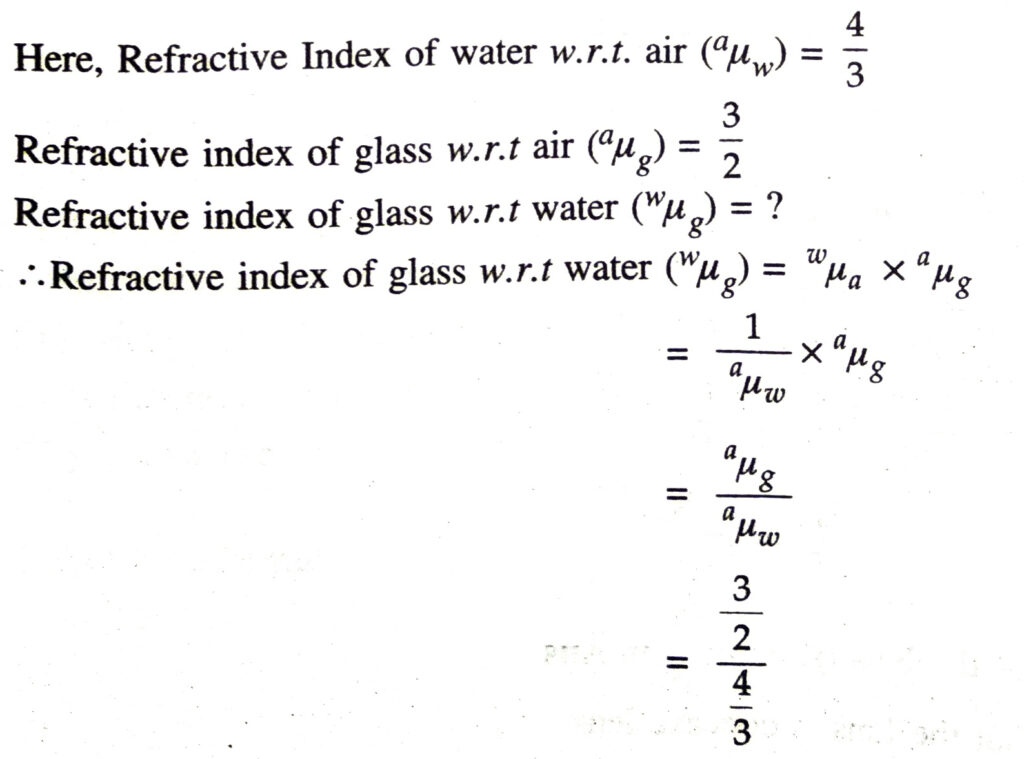
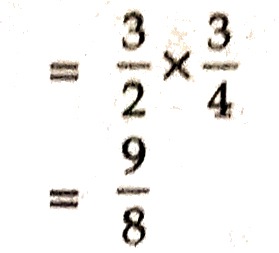
= 1.125 Ans.
Q. 10. The refractive index of dense flint glass is 1.65 and of alcohol it is 1.36 w.r.t air. What will be the refractive index of dense flint glass w.r.t alcohol?
Sol.
Given : Refractive index of dense flint glass w.r.t air (ªµg) = 1.65
= 1.21 Ans.
Q. 11. An object is 2m away from a lens, which forms an erect image 1/4th the size of the object. Determine the focal length of the lens. What type of the lens is this?
Sol.
Here, object distance (u) = – 2m
Negative sign indicates that the lens is concave lens.
Q. 12. A convex lens of focal length 20 cm is placed at a distance of 24 cm from the screen. How far from the lens should an object be placed so as to form a real image on the screen. Also find the nature and magnification of the image produced.
Sol.
Given: Focal length of the lens (ƒ) = 20 cm
Negative sign shows that the image formed is real and inverted.
Q. 13. A divergent lens has focal length of 20 cm. At what distance should the object from the lens be placed so that the image is formed 10 cm away from the lens ? What is the magnification produced by the lens ?
Sol.
Here, focal length of the lens (ƒ) = – 20 cm
Image distance from the lens (υ) = – 10 cm
Object distance (u) = ?
Q. 14. A concave lens has focal length of 15 cm. At what distance should the object from the lens be placed so that it forms an image at 10 cm from the lens ? Also find the magnification produced by the lens. (Text Book Example)
Sol.
Given Focal length of concave lens (ƒ) = – 15 cm
Image distance (υ) = – 10 cm –
(The image formed in a concave lens is virtual and erect and is formed on the same side of the lens, so it has negative (–) sign.)
Object distance (u) = ?
Negative sign suggests that the object should be placed at a distance of 30 cm to the left of the lens.
= – 0.33 Ans.
Negative sign shows that the image is virtual and erect and its size is 1/3rd the size of the object.
Q. 15. A 2.0 cm tall object is placed perpendicular to the principal axis of a convex lens of focal length 10 cm. The distance of the object from the lens is 15 cm. Find the nature, position and size of the image. Also find its magnification. (Text Book Example)
Sol.
Given: Height of the object (h) = + 2.0 cm (above the principal axis)
Focal length of convex lens (ƒ) = + 10 cm
Object distance from the lens (u) = – 15 cm
Image distance (υ) = ?
Height of the image (h’) = ?
The positive sign (+) shows that the image is formed at a distance of 30 cm on the other side of the lens. The image is real and inverted.
Q. 16. A convex lens of power 4 D is placed at a distance of 40 cm from a wall. At what distance from the lens should a candle be placed so that its image is formed on the wall?
Sol.
Given Power of convex lens (P) = + 4 D
Q. 17. A convex lens forms a real image four times magnified at a distance of 60 cm from the lens. Calculate the focal length and the power of the lens.
Sol.
Q. 18. Find the position, nature and size of the image formed by a convex lens of focal length 18 cm of an object 3 cm high placed at a distance of 27 cm from it.
Sol.
The positive sign shows that the image is formed at distance of 54 cm on the other side of the lens. Therefore the image is real and inverted.
∴ Height of the image (h’) = 6 cm which is greater than h
Hence, the image formed is real, inverted and greater than the size of the object.
NUMERICAL PROBLEMS FOR PRACTICE
Q. 1. Where should an object be placed in front of a concave miror of focal length 20 cm so as to obtain two times magnified real image ?
 (Ans. 30 cm in front of mirror)
(Ans. 30 cm in front of mirror)Q. 2. A concave mirror produces three times enlarged real image of an object placed at 12 cm in front of it. Calculate the radius of curvature.
Hint. m = – 3; u = – 12 cm. Apply m = – υ/u to find υ, then use mirror formula to calculate ‘ƒ’.
Q. 3. Find the focal length of a convex mirror whose radius of curvature is 20 cm.
Hint: Use R = 2ƒ (Ans. ƒ = 10 cm)
Q. 4. A real image 1/5th the size of an object, is formed at a distance of 18 cm from a mirror. What is the nature of the mirror ? Calculate its focal length.
Q. 5. An object is kept in front of a concave mirror of focal length 20 cm. The image is three times the size of the object. Calculate two possible distances of the object from the mirror.
(ii) m = + 3 and calculate u as before (Ans. u = 13.3 cm)
Q. 6. Light enters from air to sapphire which has refractive index of 1.77. Calculate the speed of light in diamond if speed of light in air is 3 × 108 m s-1
Q. 7. A 2 cm long pin is placed at a distance of 16 cm from a convex lens of focal length 12 cm. Find the position, size and nature of the image formed.
(Ans. Real, inverted and magnified image at a distance of 48 cm from the lens; size of the image = – 6 cm.)
Q. 8. A concave lens of focal length 20 cm forms an image 15 cm from the lens. How far is the object placed from the lens ? Draw the ray diagram.
Q. 9. A doctor has prescribed a corrective lens of power + 1.5 D. Find the focal length of the lens. Is the prescribed lens converging or diverging ?
Hint: P = 1/ƒ (in meters)
(Ans. ƒ = + 0.67 m, + sign shows lens is converging).
VERY SHORT ANSWER TYPE QUESTIONS
Q. 1. What is light ?
Ans.Light. It is a form of energy which causes in us the sensation of sight.
Q. 2. Can a plane mirror be called spherical mirror ?
Ans. Yes, a plane mirror is a spherical mirror of infinite radius.
Q. 3. Can a concave mirror give a virtual image ?
Ans.Yes, concave mirror forms virtual image of an object placed between pole and principal focus.
Q. 4. What is the nature of the mirror having focal length – 15 cm ?
Ans. It is a concave mirror having focal length – 15 cm and radius of curvature – 30 cm.
Q. 5. What does negative magnification stand for?
Ans. It tells us that the image is inverted.
Q. 6. A mirror has magnification 0.4, what type of the mirror is and what type of the image is formed ?
Ans.It is a convex mirror since the magnification is positive as well as less than one. Image is diminished and erect.
Q. 7. What is curvature of a mirror? What is its value for plane mirror ?
Ans.Curvature is reciprocal of focal length.
Radius of curvature of a plane mirror is infinity and hence its curvature is =

= zero.
Q. 8. A ray strikes the mirror normally, what is the angle of incidence ?
Ans. Zero degree. Angle of incidence is the angle which the incident ray makes with the normal.
Q. 9. What is pole of a mirror ?
Ans. It is a centre of a mirror.
Q. 10. If the image is inverted, what type of the image is it?
Ans. Image is real.
Q. 11. What is mirror formula ? Does this formula hold good for a plane mirror ?
Ans. Mirror formula. It is the relation between distance of the object from the mirror (u), the distance of the image from the mirror (υ) and focal length (ƒ) of the mirror.
Mirror formula holds good for plane mirror also.
Q. 12. What is the name given to the centre of the spherical mirror ?
Ans. The centre of the mirror is called its pole.
Q. 13. A ray is striking a slab subtending an angle of 40° with it. What is the angle of incidence ?
Ans. Angle of incidence = angle between incident ray and normal
∴ ∠i = 90° – 40° = 50°
Q. 14. Velocity of light in diamond is 1.2 x 108 m s-1 and in vacuum, it is 3 × 108 m s-1, what is refractive index of diamond ?
Ans. 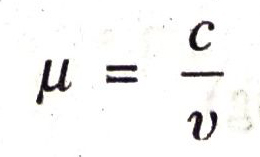
Q. 15. What is difference between denser and optically denser medium ?
Ans.Denser medium is one whose density (i.e., mass per unit volume) is more whereas optically denser is one whose refractive index is more.
Q. 16. How is focal length related to radius of curvature of the mirror ?
Ans. R = 2ƒ
Q. 17. What is the name given to wave travelling with a velocity of 3 × 108 m s-1 in vacuum ?
Ans. They are called electromagnetic waves. These waves contain γ-rays, X-rays, ultraviolet rays, visible light, infra red rays, microwaves, radio waves, T.V. waves etc.
Q. 18. What is the name given to change of path of light without any change of medium ?
Ans.Reflection.
Q. 19. Are laws of reflection different for different types of mirrors ?
Ans.No. Laws of reflection are same for plane as well as for spherical mirrors.
Q. 20. What is the name given to change of path of light with the change of medium ?
Ans. Refraction.
Q. 21. Define power of a lens.
Ans. Power of a lens. It is ability of the lens to converge or diverge the beam of rays. It is measured in dioptre.
Power of a lens is 1 dioptre, if its focal length is 1 m.
Q. 22. Define refractive index. Write refractive index of water.
Ans. Refractive index of a medium is the ratio of velocity of light in vacuum to the velocity of light in medium.
Refractive index of water is 1.33.
Q. 23. List two uses of convex lens.
Ans. Convex lens is used for correcting eye defect of hypermetropic person and also used in making telescope, microscope etc.
Q. 24. What is magnification of a lens ?
Ans. Magnification of lens. It is defined as the ratio of size of the image formed and size of the object.
Q. 25. State Snell’s law of refraction.
Ans. Snell’s Law. This law states that the ratio of sine of angle of incidence (sin i) to the sine of angle of refraction (sin r) is constant for a given colour and for the given pair of media.
Mathematically, sin i/sin r = constant (μ), where i stands for angle of incidence, r for angle of refraction and is the refractive index of the medium.
Q. 26. Which of the two mirrors is converging ? (Concave or convex)
Ans. Concave.
Q. 27. Which of the two mirrors is diverging? (Concave or convex)
Ans.Convex.
Q. 28. What is the angle of incidence when a ray falls normally on a mirror ?
Ans. It is zero degree i.e. (∠i = 0°).
Q. 29. The image formed by a concave mirror is virtual, erect and larger than the size of the object. What is the position of an object and where the image is formed ?
Ans. The object is placed between focus and pole of the mirror and image is formed behind the mirror.
Q. 30. Define principal axis of a spherical mirror.
Ans. Principal axis of spherical mirror. An imaginary line joining the pole and centre of curvature of spherical mirror is called its principal axis.
Q. 31. When light goes from one transparent medium to another, the direction of propagation of light changes. This phenomenon is called refraction of light. What the cause of this phenomenon ?
Ans. The cause of refraction of light is the change in speed of light when light enters from one medium to another medium.
Q. 32. Convex lens is also called a converging lens. Why ?
Ans. It is because a convex lens concentrates the light rays that are incident on it.
MULTIPLE CHOICE QUESTIONS
Select the correct answer out of the four alternatives :
1. Focal length of concave mirror is :
(A) always positive
(B) always negative
(C) positive when it forms a real image and negative when it forms virtual image
(D) positive for erect image and negative for virtual image.
Ans. (B) always negative
2. Focal length of plane mirror is :
(A) zero
(B) infinity
(C) dependent on its size
(D) None of these.
Ans. (B) infinity
3. Magnification of mirror is +2/3, the type of mirror is:
(A) concave
(B) plane
(C) convex
(D) combination of all.
Ans. (C) convex
4. Radius of curvature of a mirror is 20 cm, it is a:
(A) convex mirror
(B) concave mirror
(C) plane mirror
(D) Nothing can be said with certainty.
Ans. (A) convex mirror
5. Magnification produced by convex mirror is :
(A) always positive and greater than one
(B) always negative
(C) always positive and less than one
(D) zero.
Ans. (C) always positive and less than one
6. A concave mirror is a part of sphere of radius 20 cm, the focal length of concave mirror is :
(A) 10 cm
(B) 20 cm
(C) – 20 cm
(D) – 10 cm.
Ans. (D) – 10 cm.
7. Plane mirror is a part of sphere of radius:
(A) zero
(B) infinity
(C) nil since it is not a part of sphere
(D) any value depending upon its size.
Ans. (B) infinity
8. Image formed by plane mirror is :
(A) erect and perverted
(B) erect and inverted
(C) inverted and real
(D) inverted and virtual.
Ans. (A) erect and perverted
9. An object 20 cm high is placed at a distance of 90 cm from a plane mirror, the size of image will be:
(A) 20 cm
(B) 90 cm
(C) 180 cm
(D) 40 cm.
Ans. (A) 20 cm
10. A concave mirror gives a virtual, erect and magnified image of an object if the object is placed:
(A) at infinity
(B) between P and F
(C) beyond C
(D) between C and F.
Ans. (B) between P and F
11. A convergent lens is :
(A) same thickness throughout
(B) thicker in middle, thinner at edges
(C) thinner in middle, thicker at edges.
Ans. (B) thicker in middle, thinner at edges
12. Focal length of a plane glass is :
(A) zero
(B) infinity
(C) finite
(D) none.
Ans. (B) infinity
13. Image of an object formed by concave lens is :
(A) always real
(B) sometimes real, sometimes virtual
(C) always virtual.
Ans. (C) always virtual.
14. Optical centre is :
(A) necessarily at the centre of lens
(B) necessarily inside the lens
(C) necessarily on principal axis
(D) can be anywhere.
Ans. (C) necessarily on principal axis
15. If the object is at 2F in case of convex lens, image is necessarily at:
(A) F
(B) 2F
(C) infinity
(D) 3F.
Ans. (B) 2F
16. Erect and enlarged image is produced by convex lens when the object is placed :
(A) beyond 2F
(B) between F and 2F
(C) at F
(D) between F and optical centre.
Ans. (D) between F and optical centre.
17. Magnifying power of a convex lens is :
(A) always > 1
(B) always < 1
(C) always 1
(D) can have any value.
Ans. (D) can have any value.
18. Curvature of a plane glass is :
(A) infinity
(B) zero
(C) finite
(D) of any value.
Ans. (B) zero
19. Power of a lens is – 5D, its focal length is :
(A) 20 cm
(B) – 20 cm
(C) – 0.2 m
(D) 5 cm.
Ans. (C) – 0.2 m
20. Which of the following lenses would you prefer to use while reading small letters found in dictionary ?
(A) a convex lens of focal length 50 cm
(B) a concave lens of focal length 50 cm
(C) a convex lens of focal length 5 cm
(D) a concave lens of focal length 5 cm
Ans. (C) a convex lens of focal length 5 cm
21. A lens of power-2D is combined with a lens of power 3D, the focal length of the combination is :
(A) – 1 m.
(B) + 2 m
(C) – 5 m
(D) none of three.
Ans. (D) none of three.
22. Shaving mirrors are:
(A) Convex mirrors
(B) Plane mirrors
(C) Concave mirrors
(D) Parabolic mirrors.
Ans. (C) Concave mirrors
23. Which of the following is the property of light ?
(A) Reflection
(B) Refraction
(C) Rectilinear propagation
(D) all of these.
Ans. (D) all of these.
24. Twinkling of stars is due to atmospheric :
(A) Reflection of light
(B) Dispersion of light
(C) Interference of light
(D) Refraction of light.
Ans. (D) Refraction of light.
25. Defect of vision that cannot be corrected by spectacles is:
(A) Myopia
(B) Presbyopia
(C) Cataract
(D) Hypermetropia.
Ans. (C) Cataract
26. Which one of the following material cannot be used to make a lens ?
(A) Clay
(B) Glass
(C) Water
(D) Plastic.
Ans. (A) Clay
27. Where should object be placed in front of a convex lens to get real image of the size of object?
(A) At principal focus of lens
(B) At twice the focal length
(C) At infinity
(D) Between optical centre of lens and its principal focus.
Ans. (B) At twice the focal length
28. A spherical mirror and a thin spherical lens have each a focal length -15 cm. The mirror and lens are likely to be :
(A) both are convex
(B) both are concave
(C) mirror is concave but lens is convex
(D) mirror is convex and lens is concave.
Ans. (B) both are concave
29. No matter how far you stand from a mirror, your image appear erect. The mirror is likely to be:
(A) Plane
(B) Concave
(C) Concavo-convex
(D) Convex.
Ans. (D) Convex.
30. The refractive index of diamond is :
(A) 2.42
(B) 2.43
(C) 2.45
(D) 2.40.
Ans. (A) 2.42
31. A ray of light travelling in a glass merges into air, it will bend :
(A) Towards the normal
(B) Away from the normal
(C) Goes along the normal
(D) All of these.
Ans. (B) Away from the normal
32. In case of concave mirror, when object is at infinity, the position of image will be at :
(A) Focus
(B) Beyond C
(C) Infinity
(D) Behind the mirror.
Ans. (A) Focus
33. The Refractive Index of Air is :
(A) 1.0003
(B) 1.31
(C) 0.0003
(D) 1.003.
Ans. (A) 1.0003
34. The driver of a vehicle can view larger area behind him/her with a :
(A) Concave Mirror
(B) Convex Mirror
(C) Plane Mirror
(D) Concave Lens.
Ans. (B) Convex Mirror
35. Which of the following has a higher Refractive Index?
(A) Ice
(B) Air
(C) Kerosene
(D) Water.
Ans. (C) Kerosene
36. The Mirror usually used by a Dentist is :
(A) Concave
(B) Convex
(C) Plane
(D) None of the above.
Ans. (A) Concave
37. The refractive index of one of the following is lower than others :
(A) Diamond
(B) Rock Salt
(C) Water
(D) Air.
Ans. (D) Air.
38. The commonly used Shaving Mirror is a :
(A) Convex Mirror
(B) Concave Mirror
(C) Plane Mirror
(D) None of the above.
Ans. (B) Concave Mirror
39. 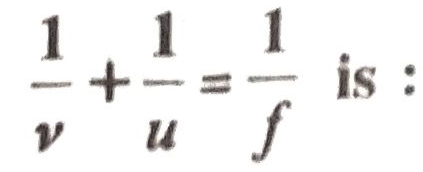
(A) Mirror formula
(B) Lens formula
(C) Both mirror and lens formula
(D) All of these.
Ans. (A) Mirror formula
40. 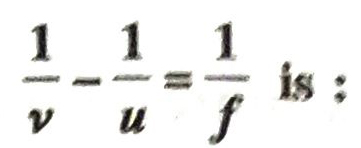
(A) Mirror formula
(B) Lens formula
(C) Both mirror and lens formula
(D) None of these.
Ans. (B) Lens formula
41. The speed of light is maximum in :
(A) Glass
(B) Vacuum
(C) Water
(D) Air.
Ans. (A) Glass
42. The convex mirror is used in/by:
(A) Head light of vehicles
(B) Solar furnaces
(C) Side/rear view mirror of vehicles
(D) Doctors/Dentists.
Ans. (C) Side/rear view mirror of vehicles
Follow on Facebook page – Click Here
Google News join in – Click Here
Read More Asia News – Click Here
Read More Sports News – Click Here
Read More Crypto News – Click Here
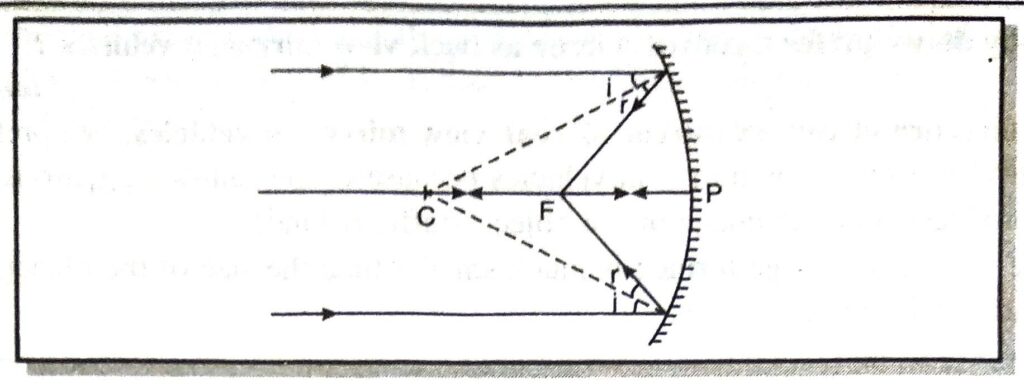
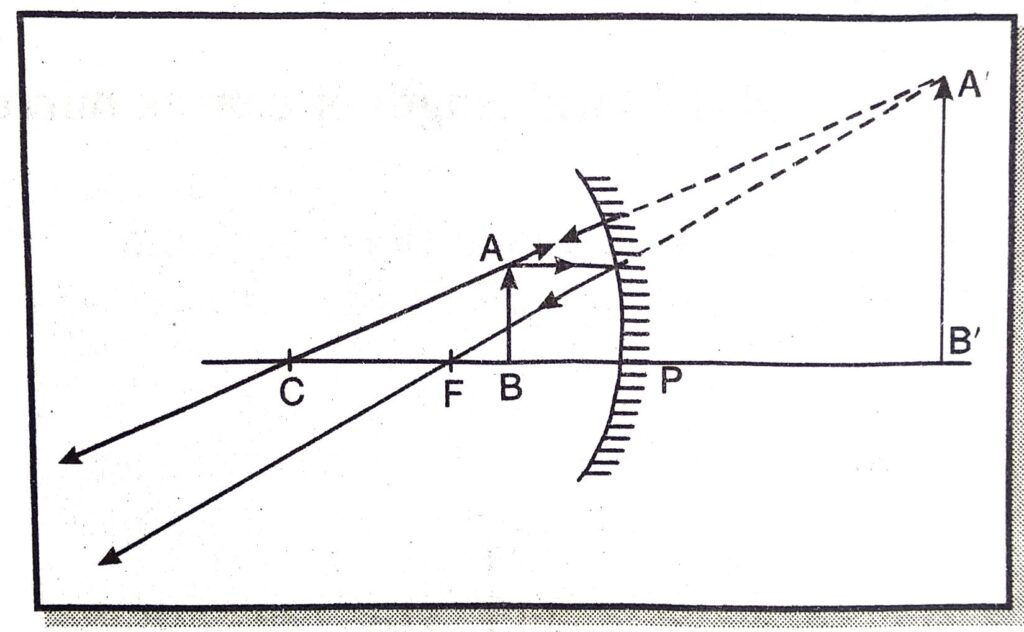
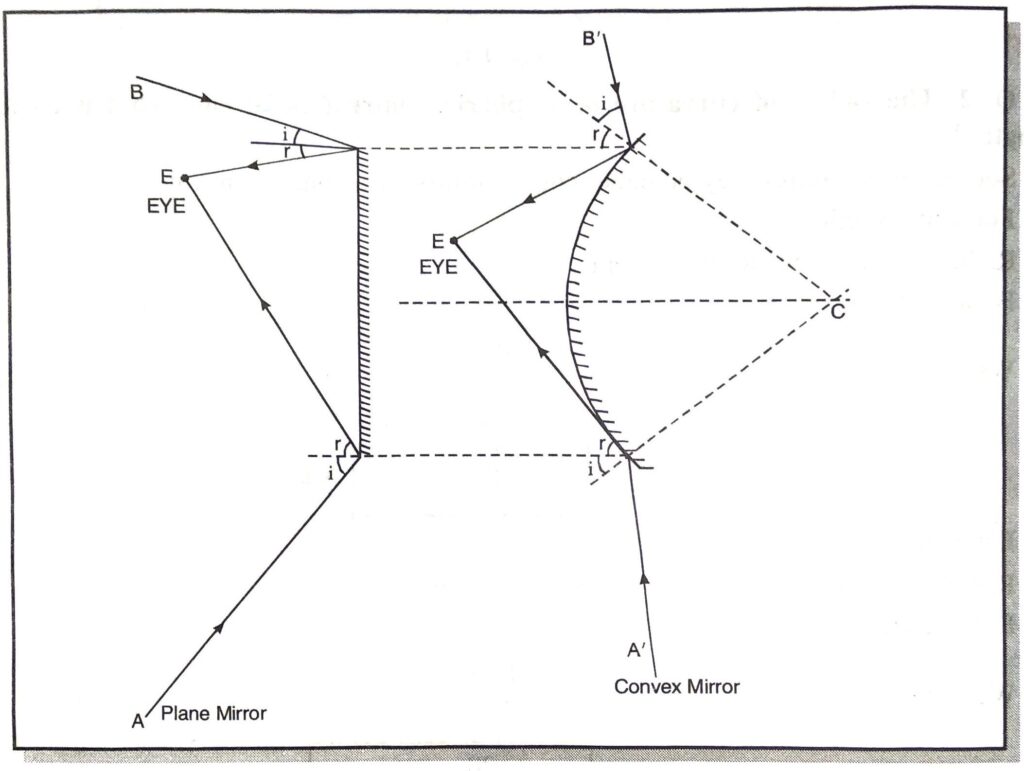
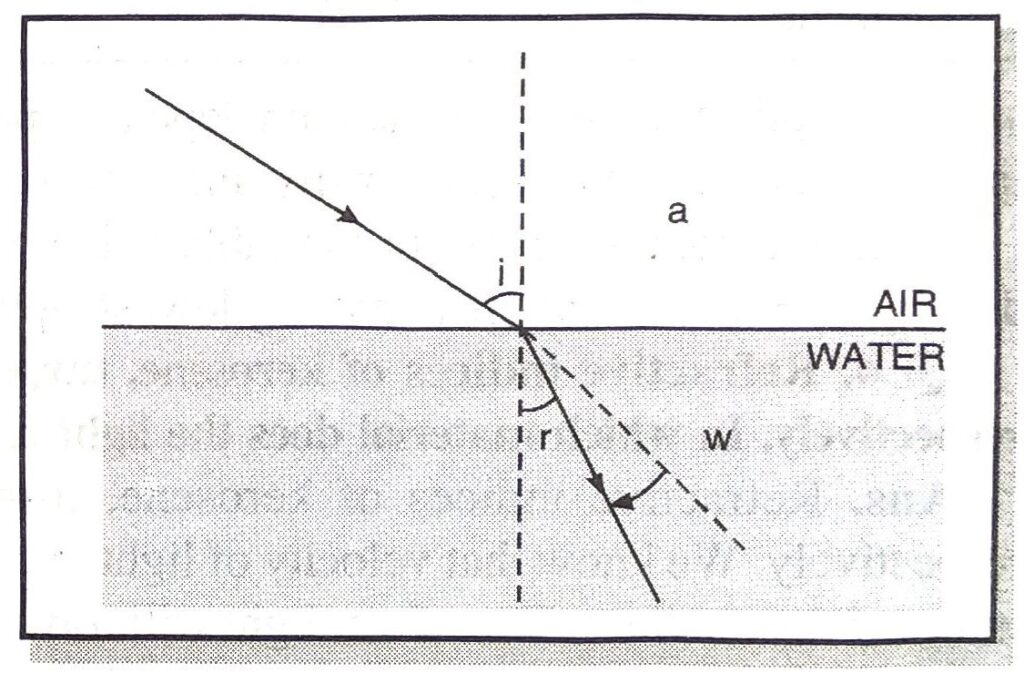
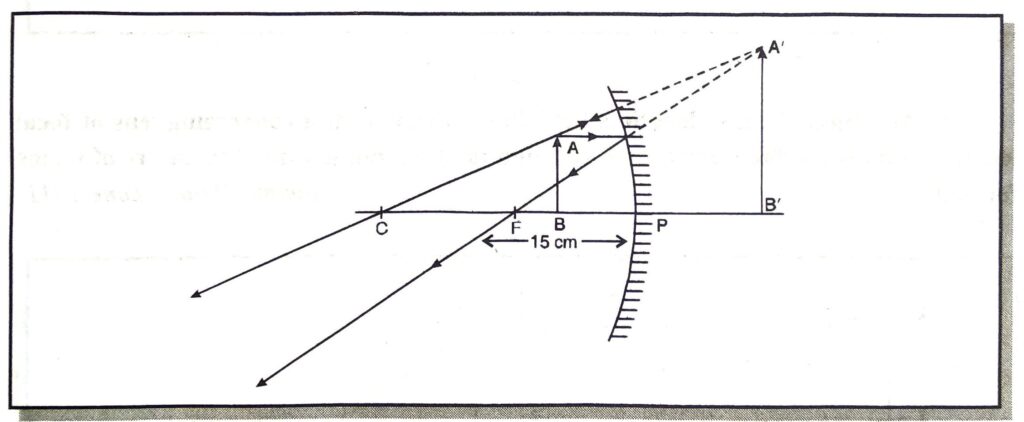

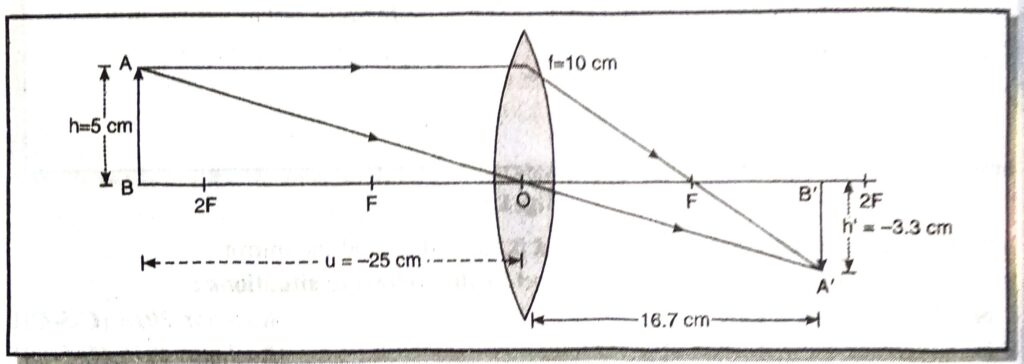
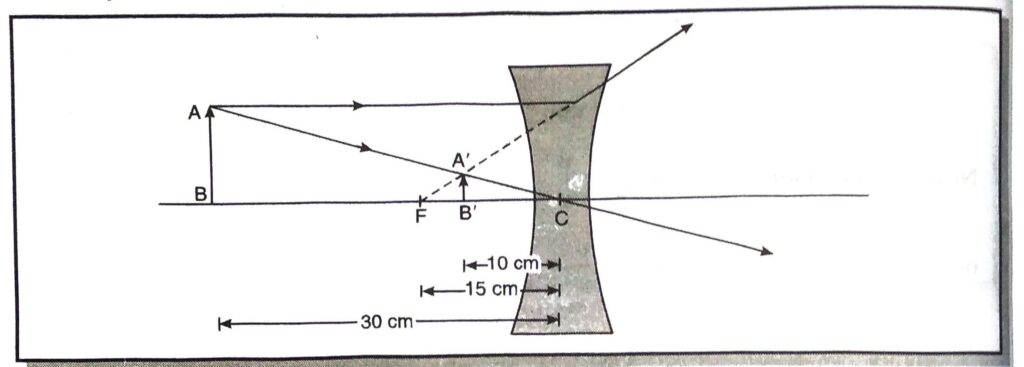
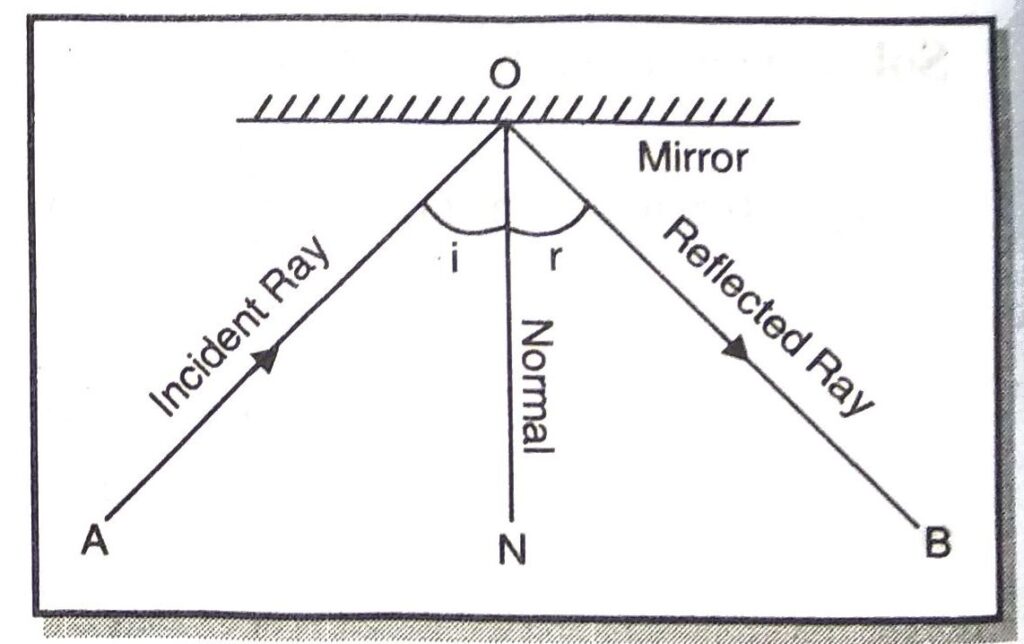
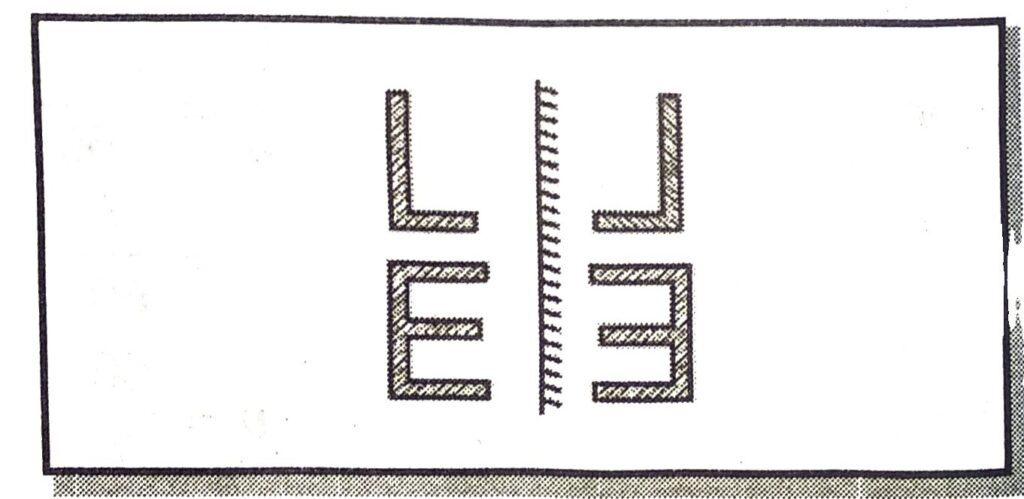

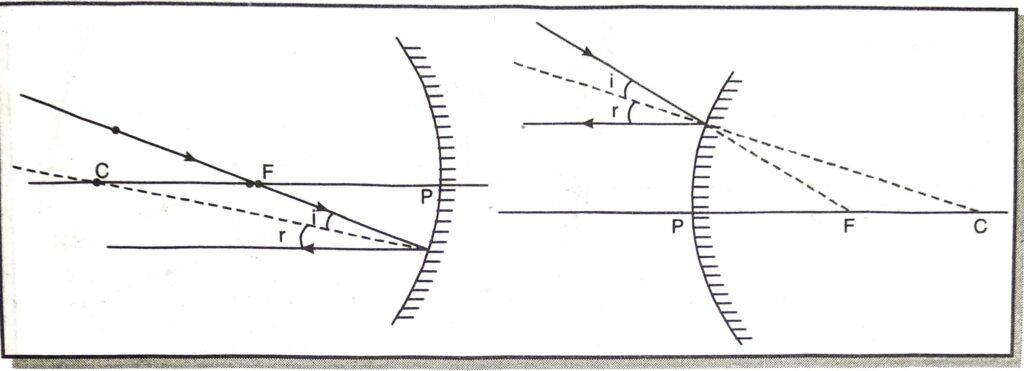

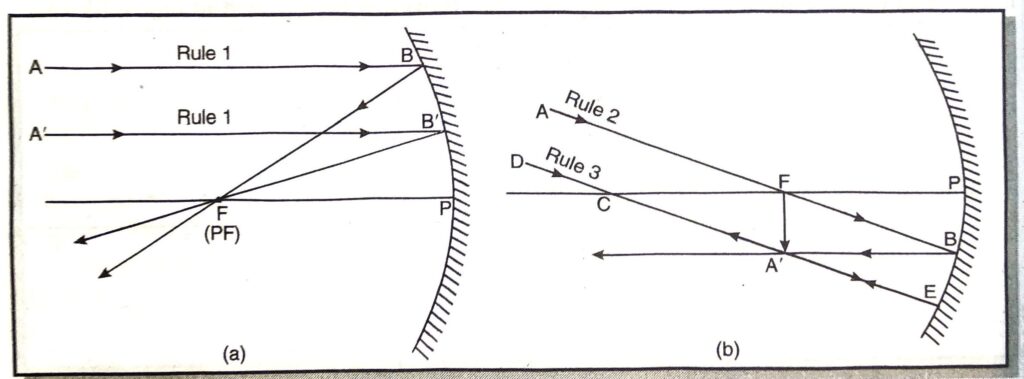
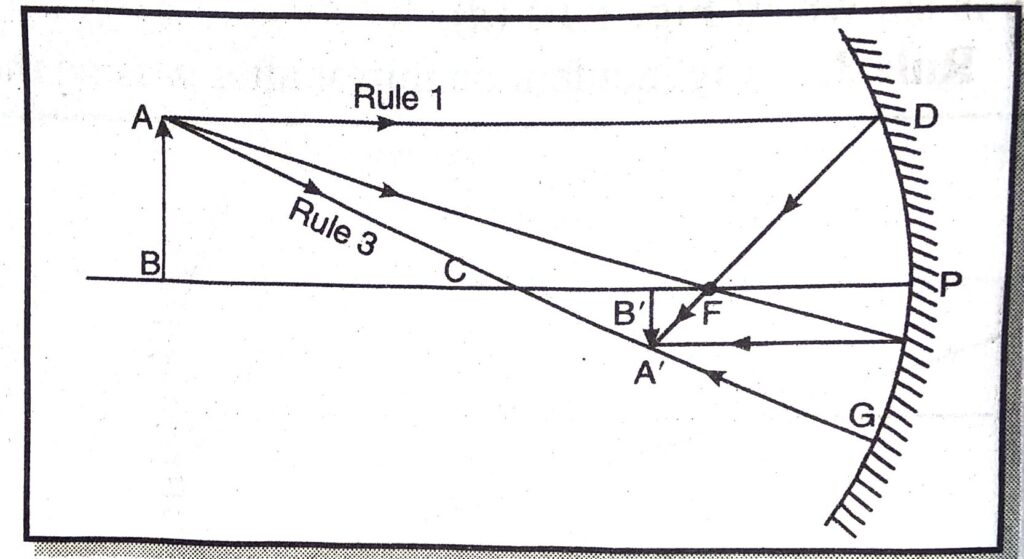
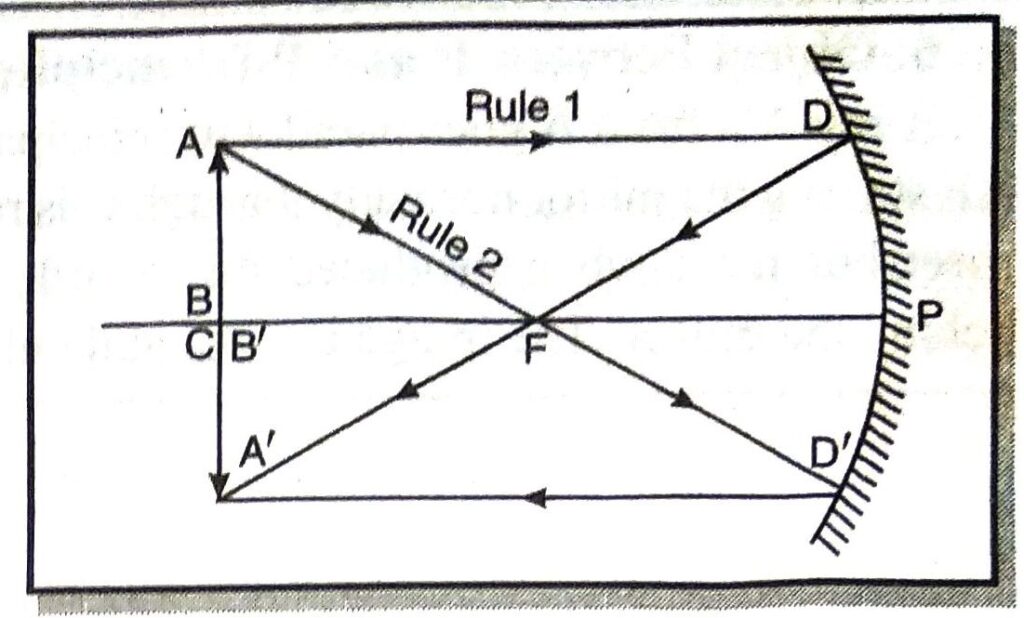
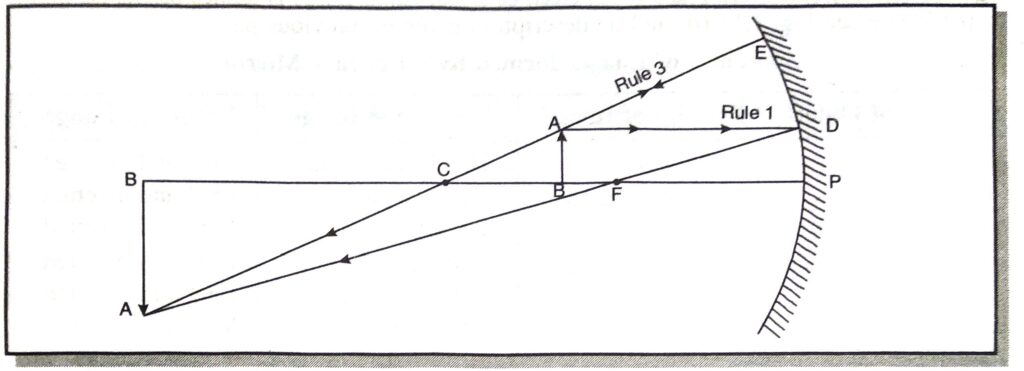
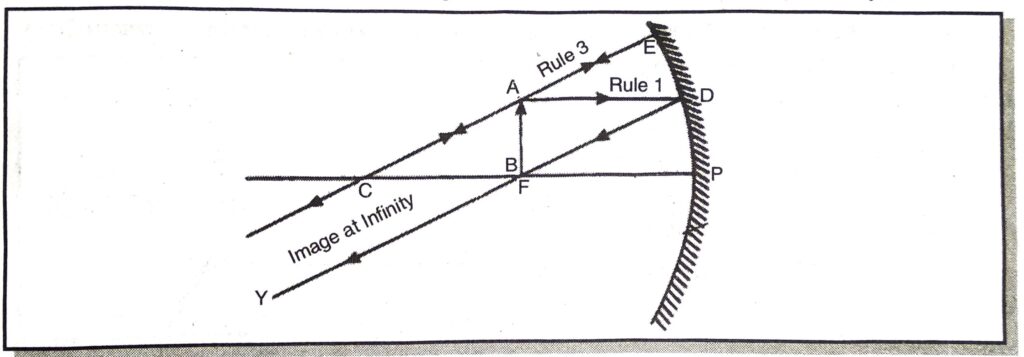

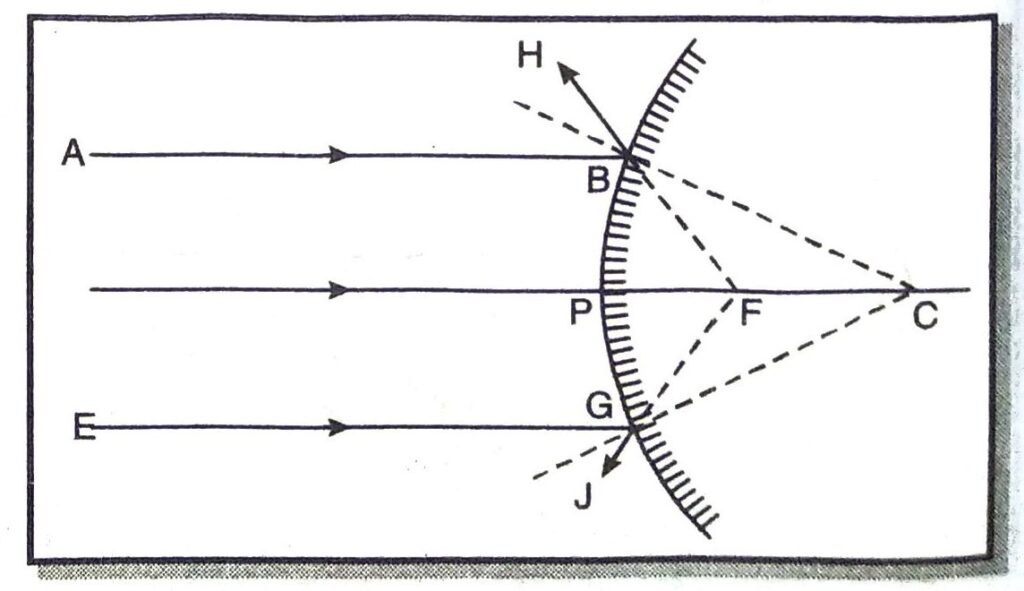
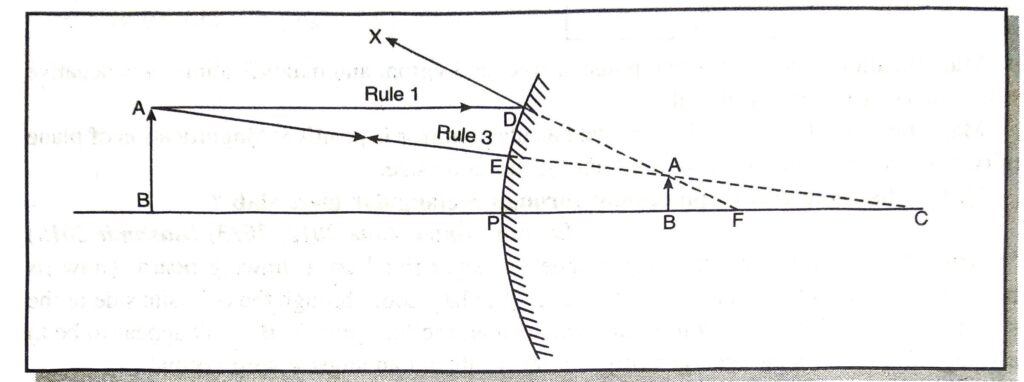
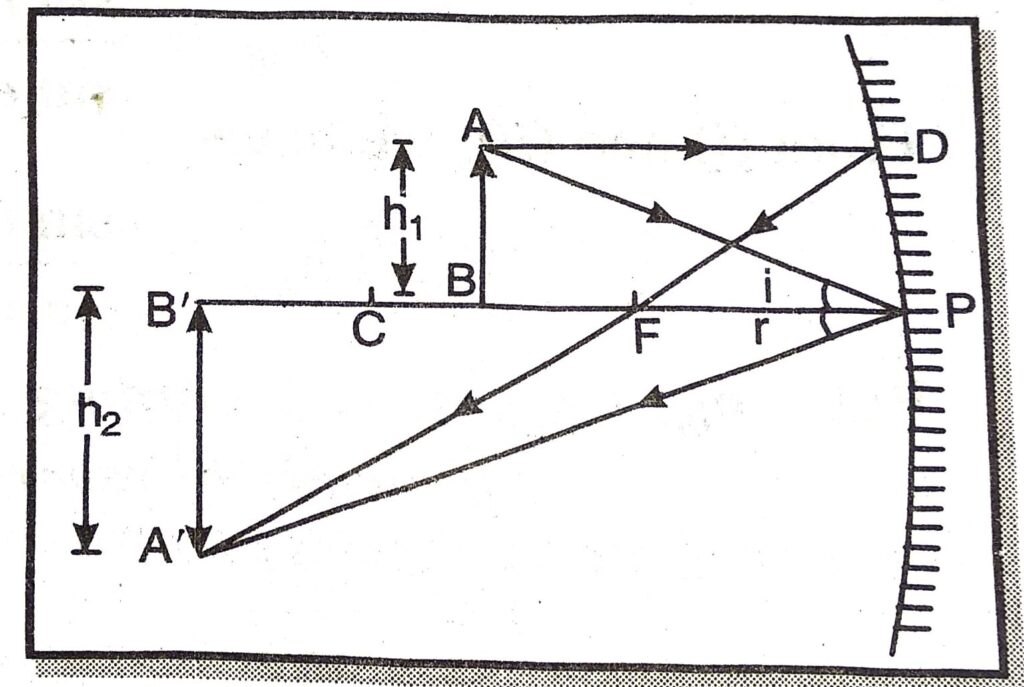
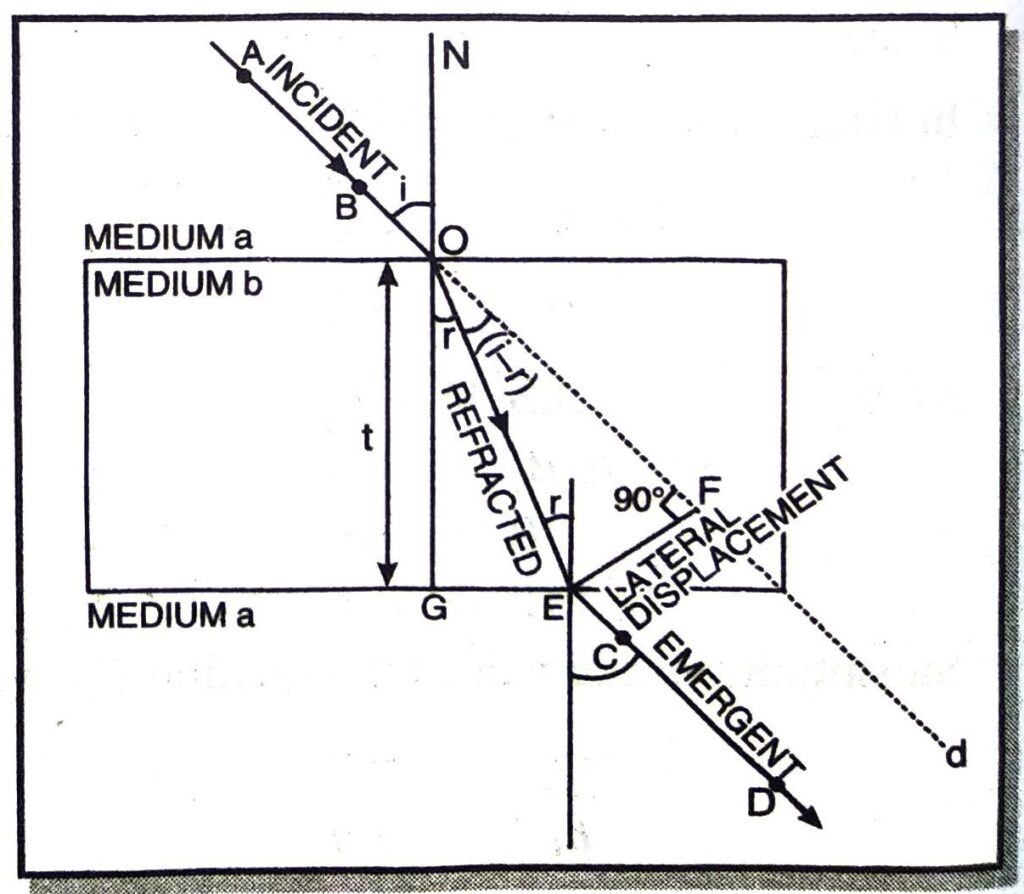
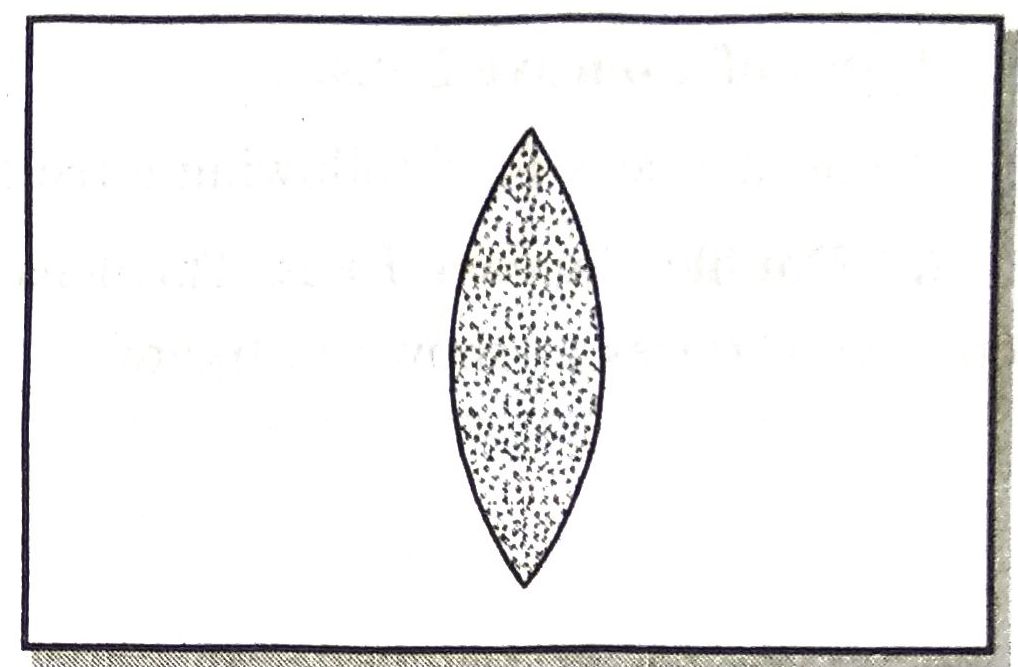
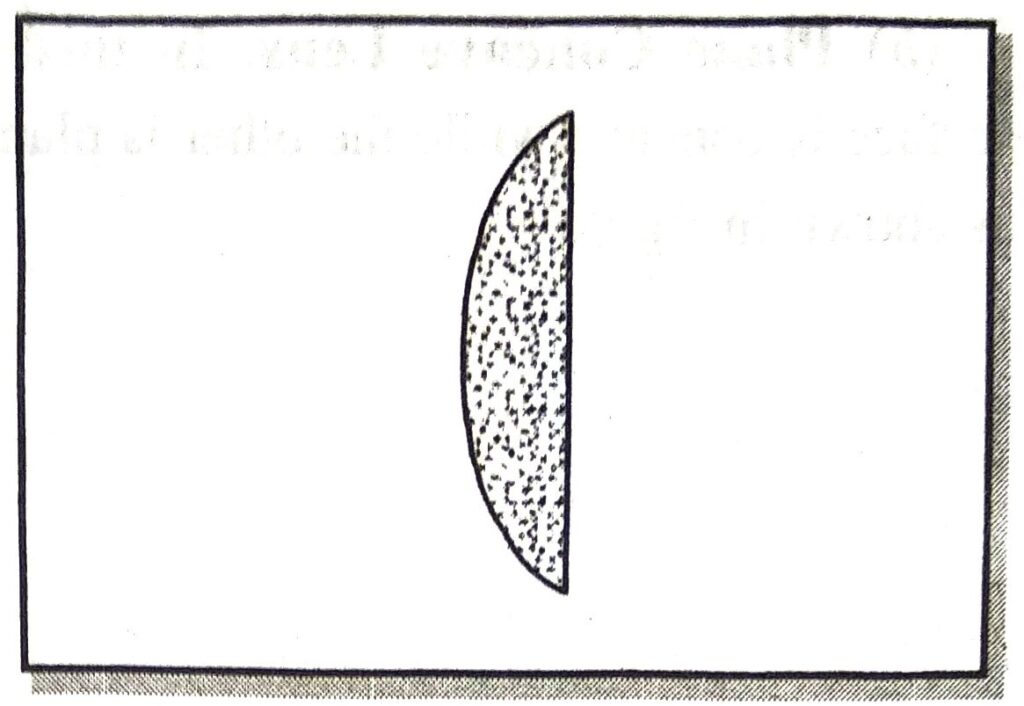
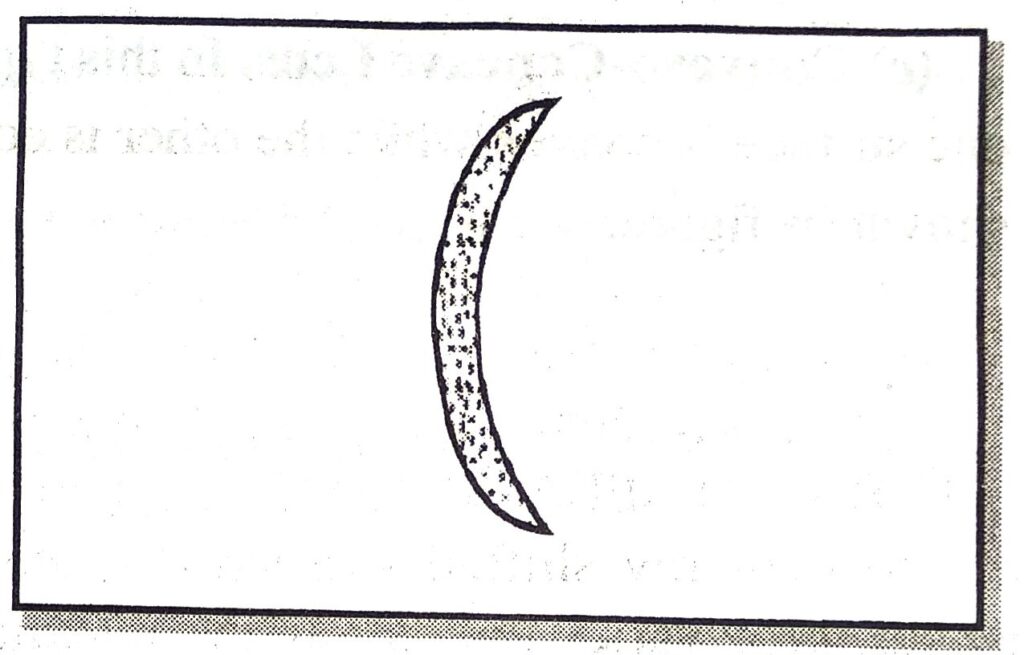
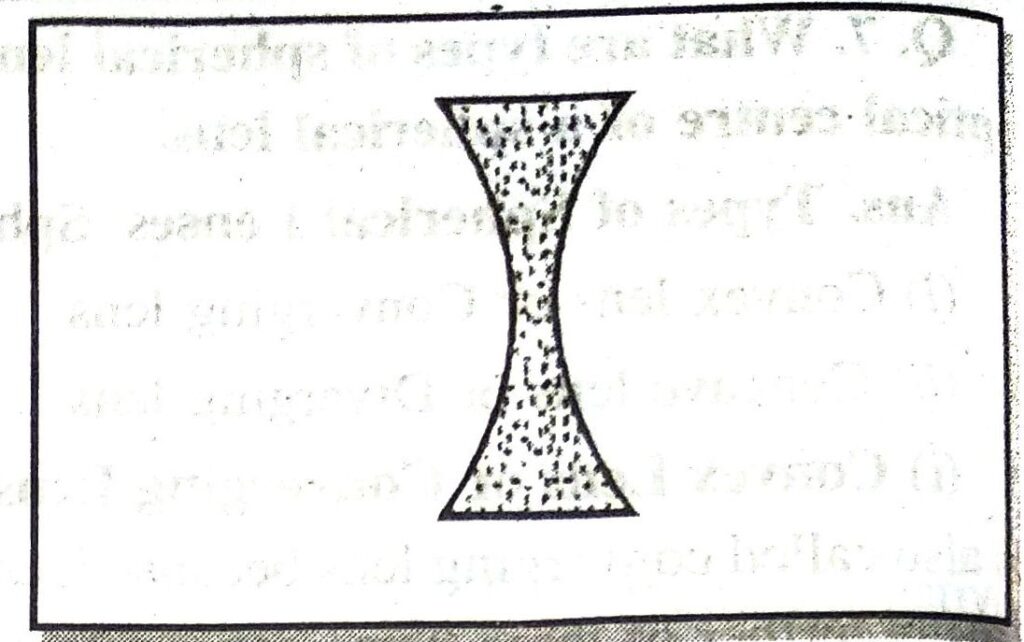
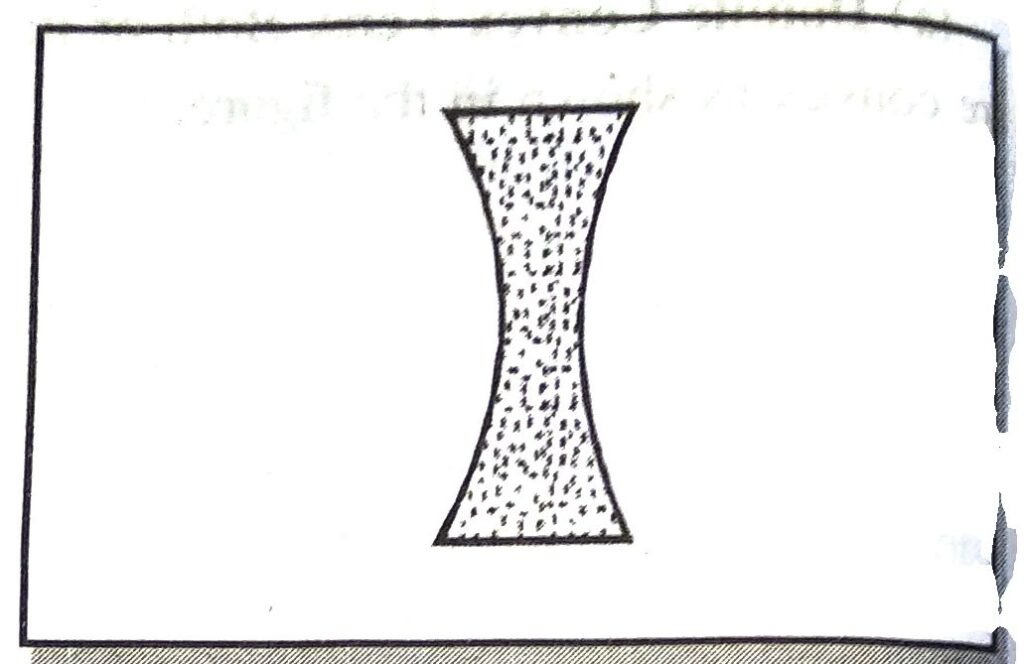
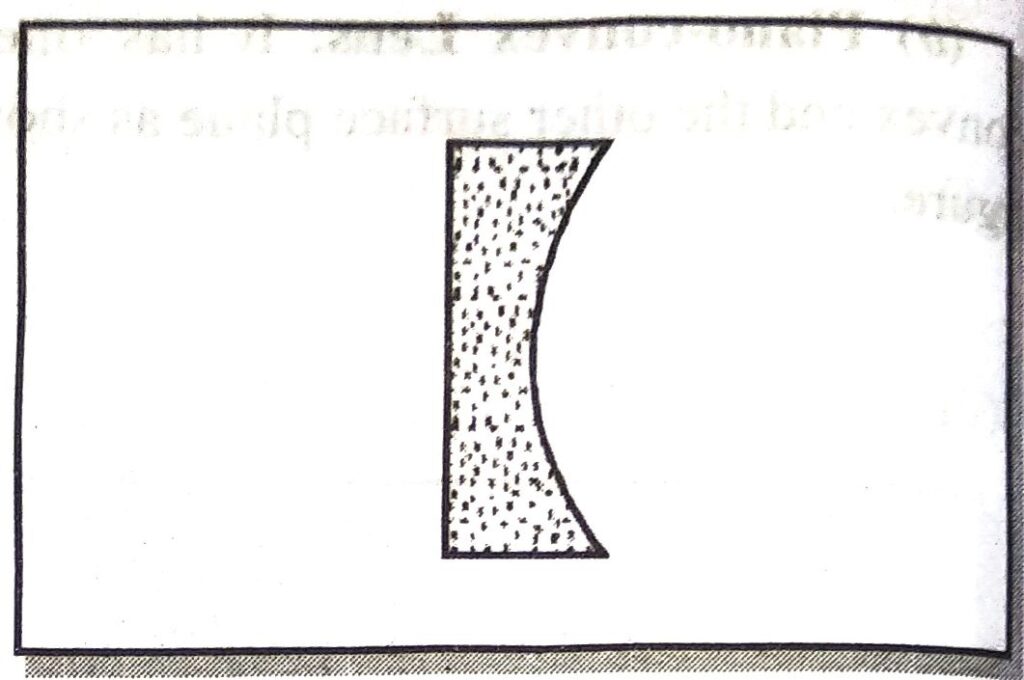
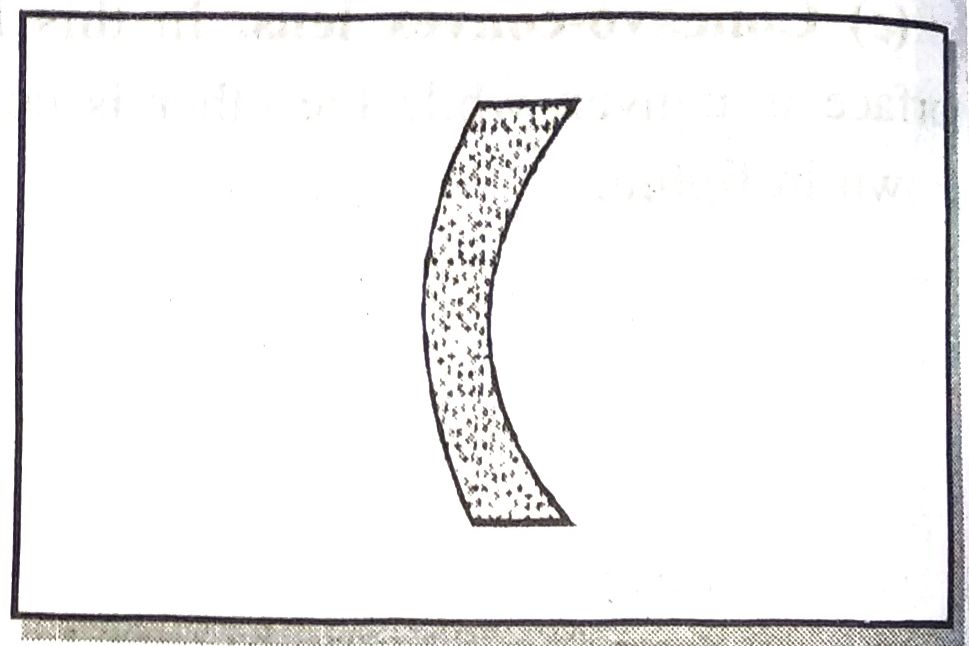
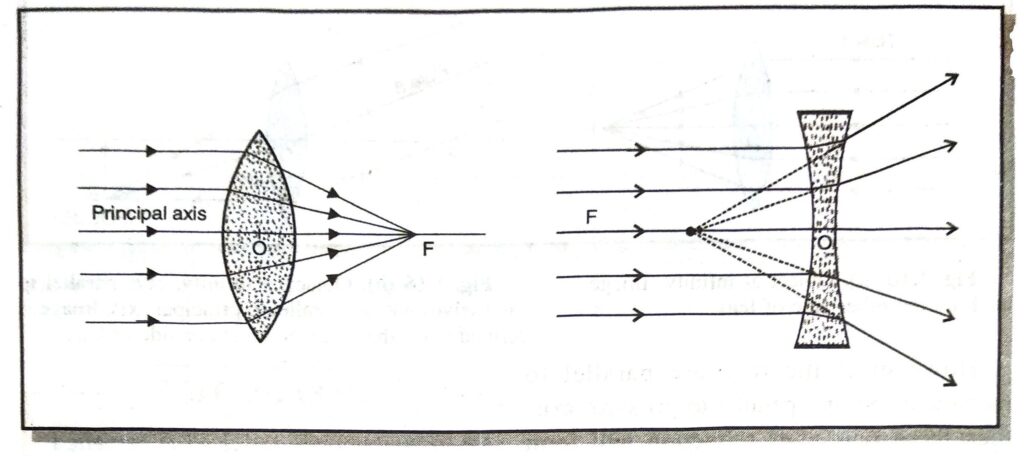
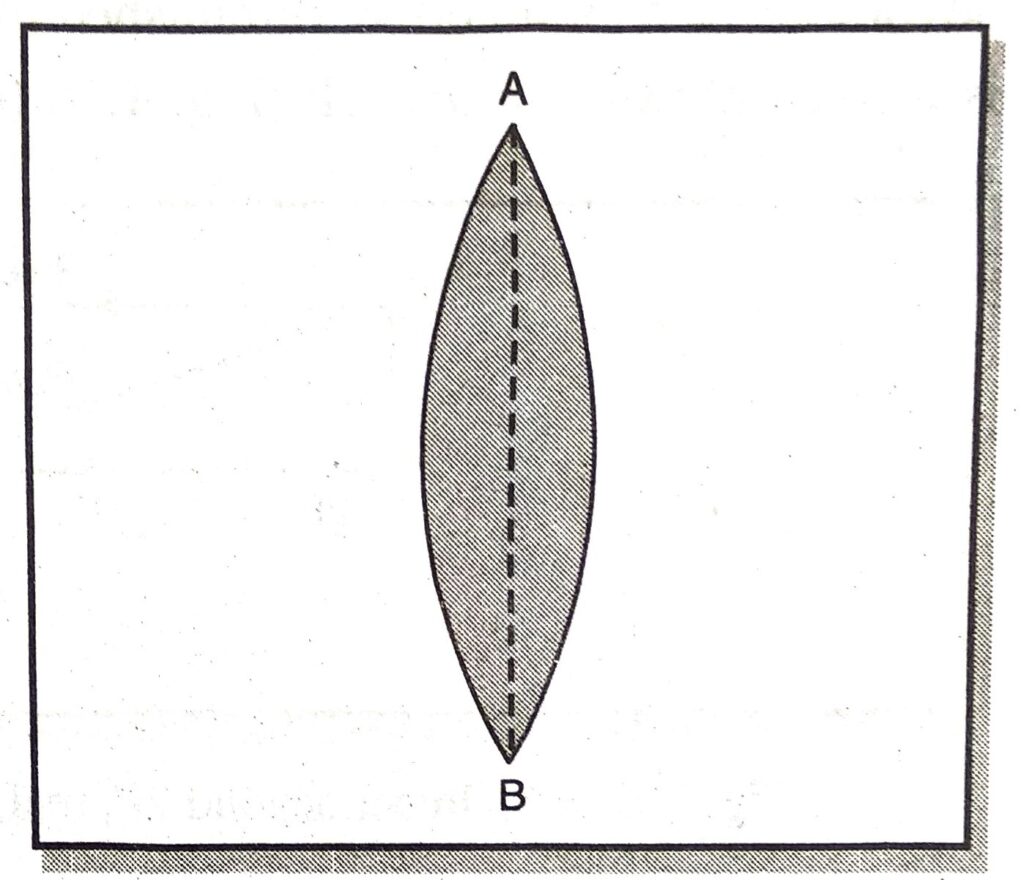






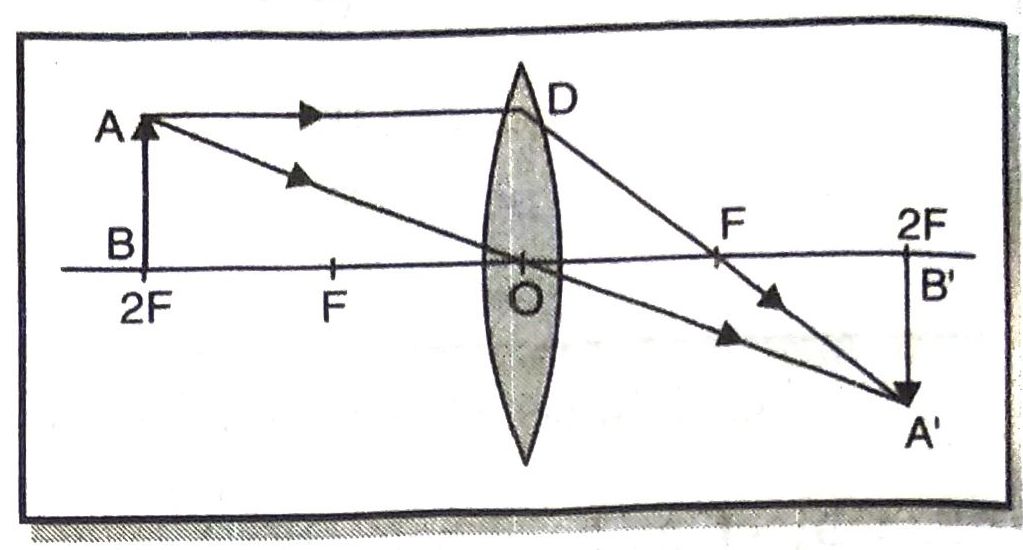
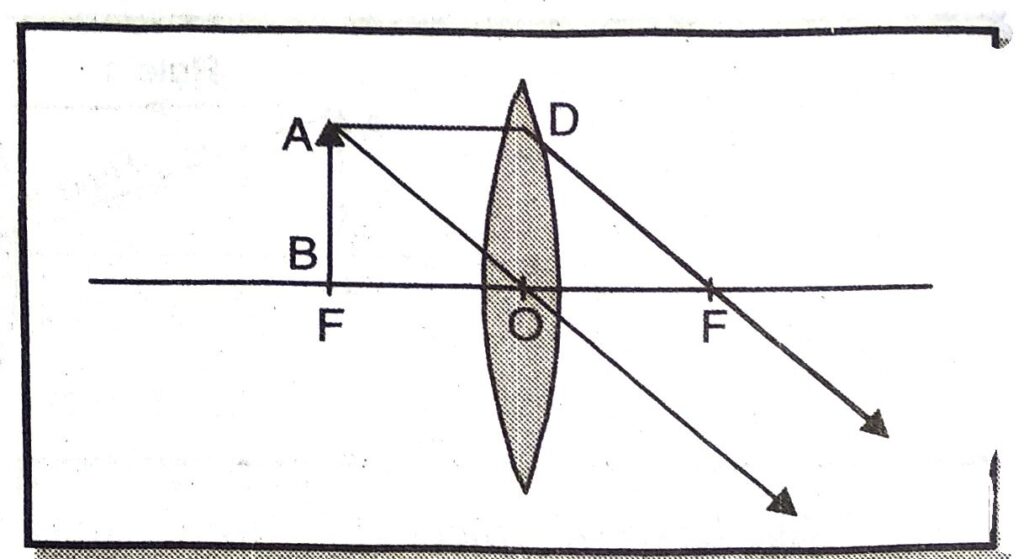
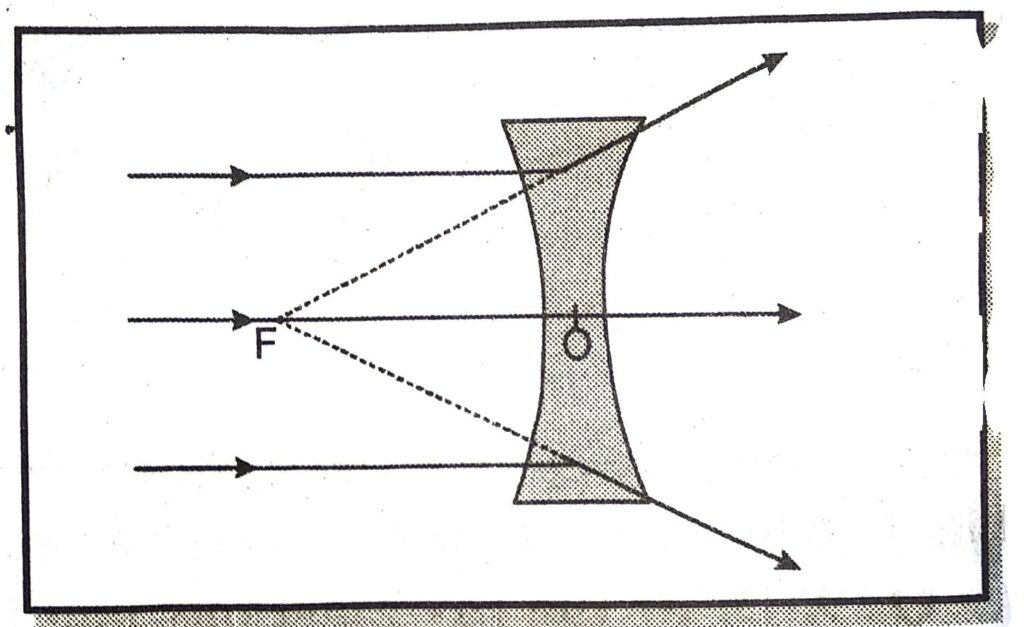
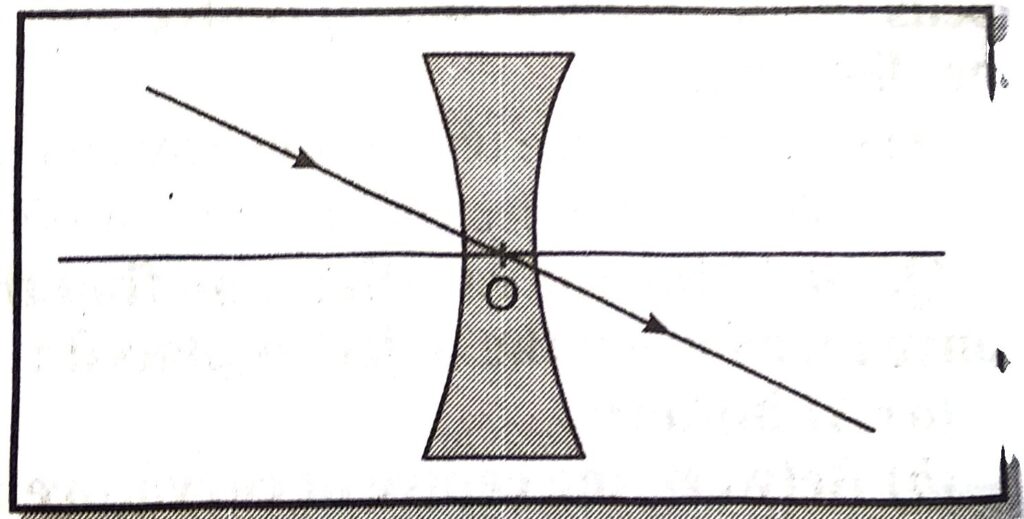

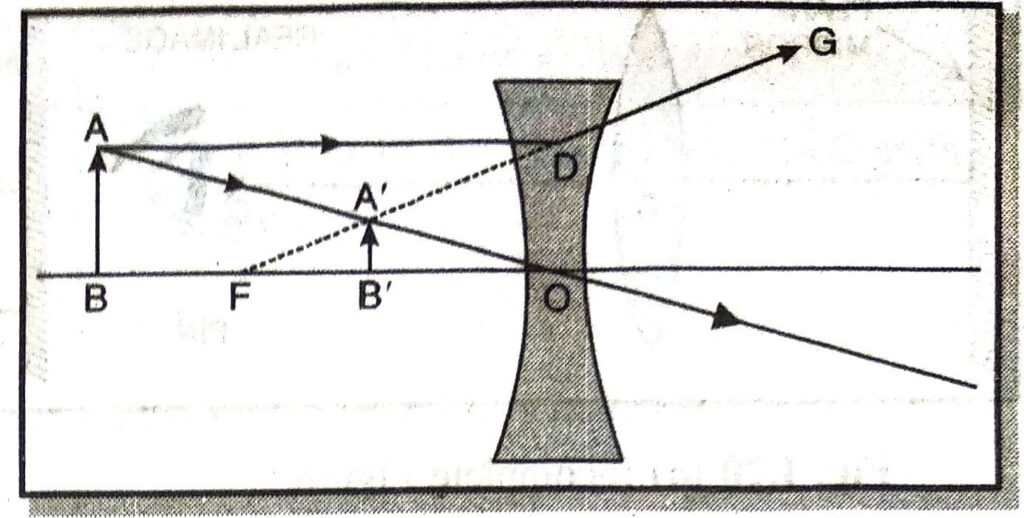



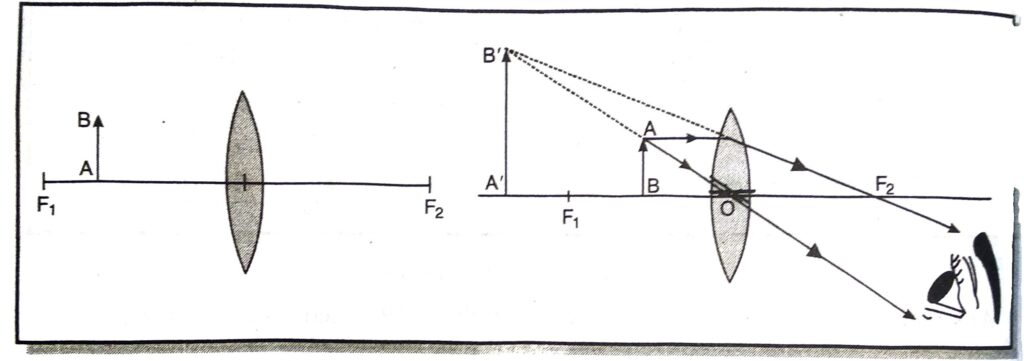
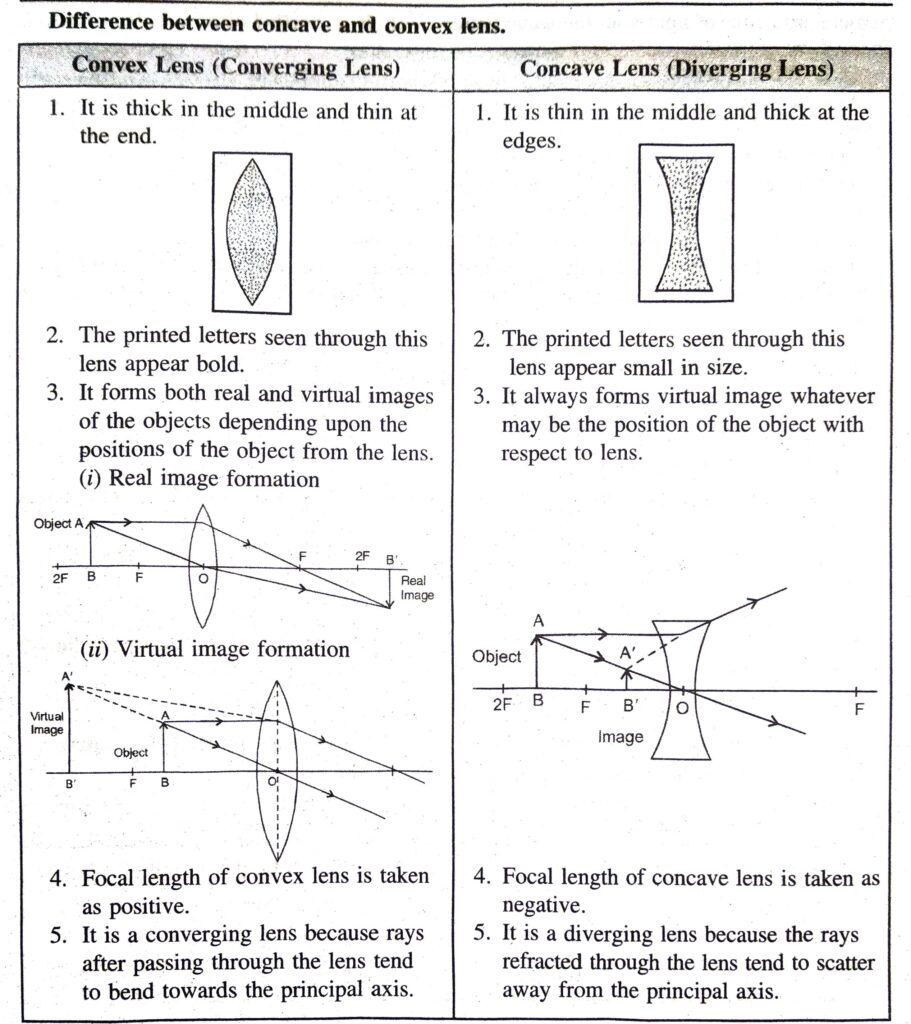
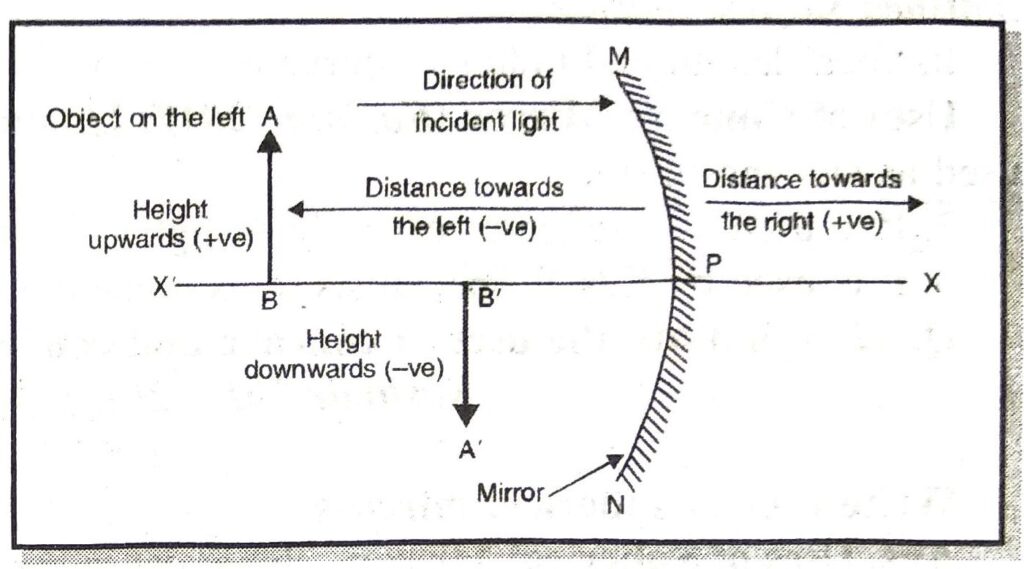
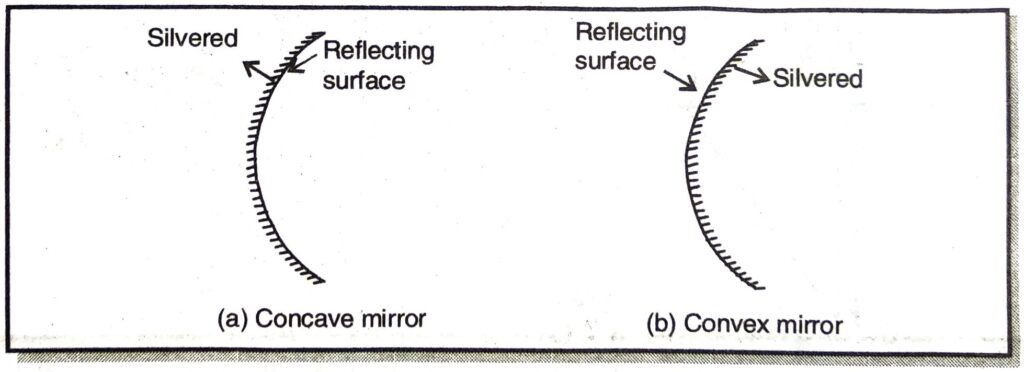
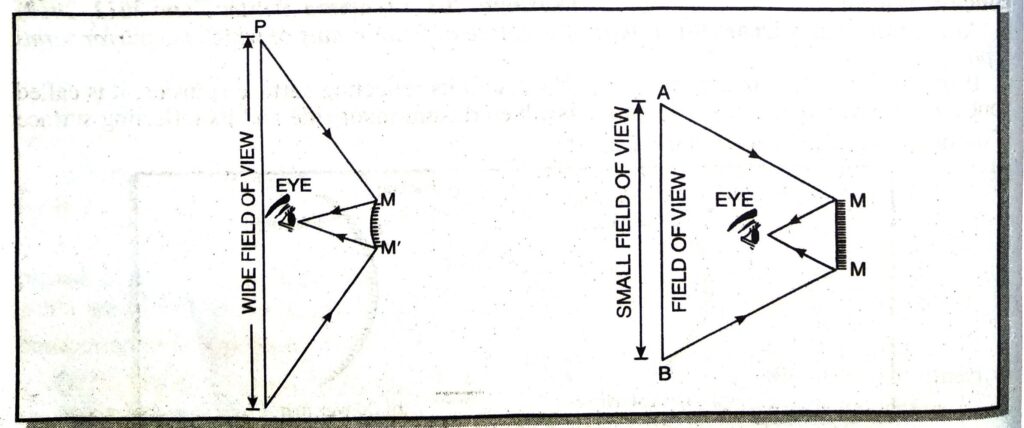
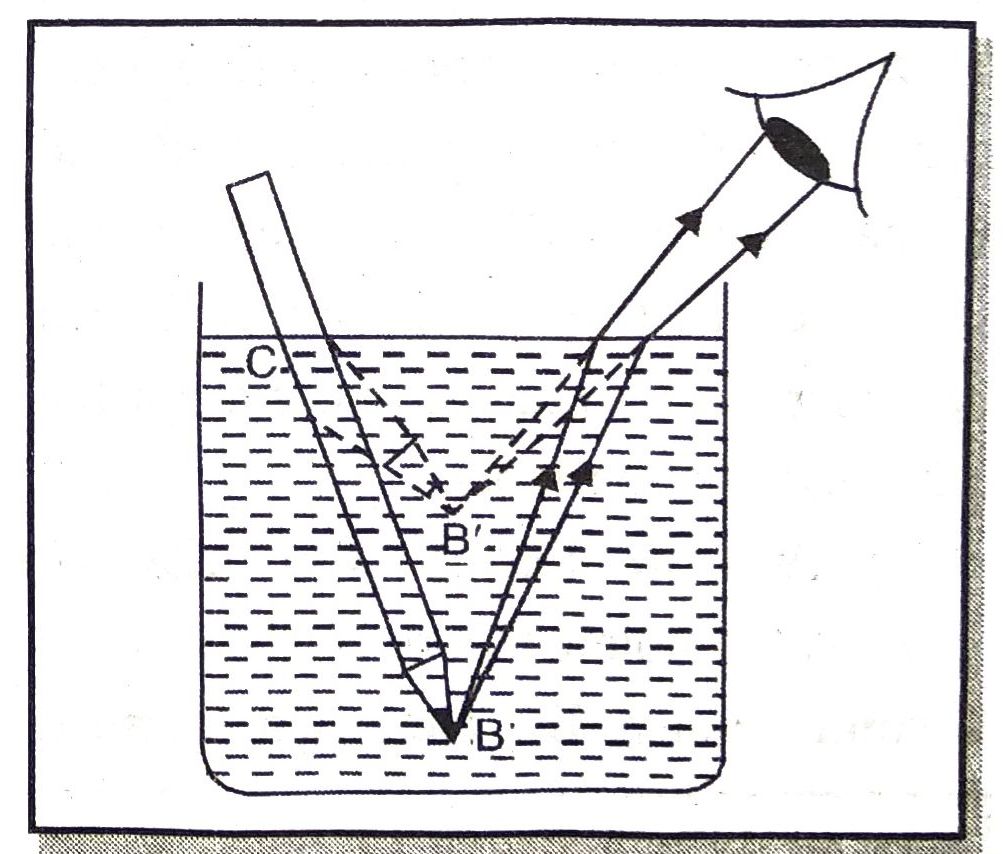
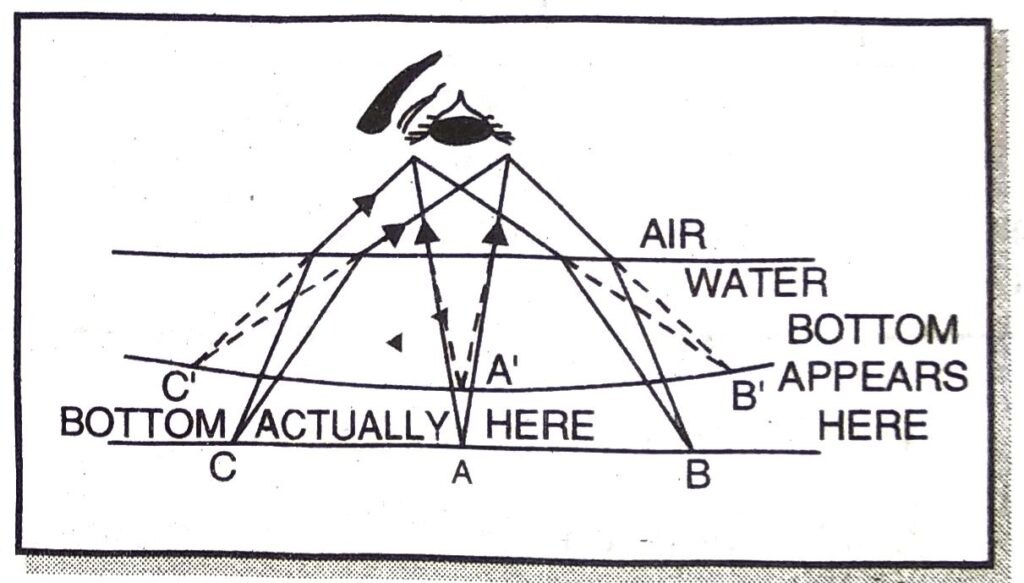
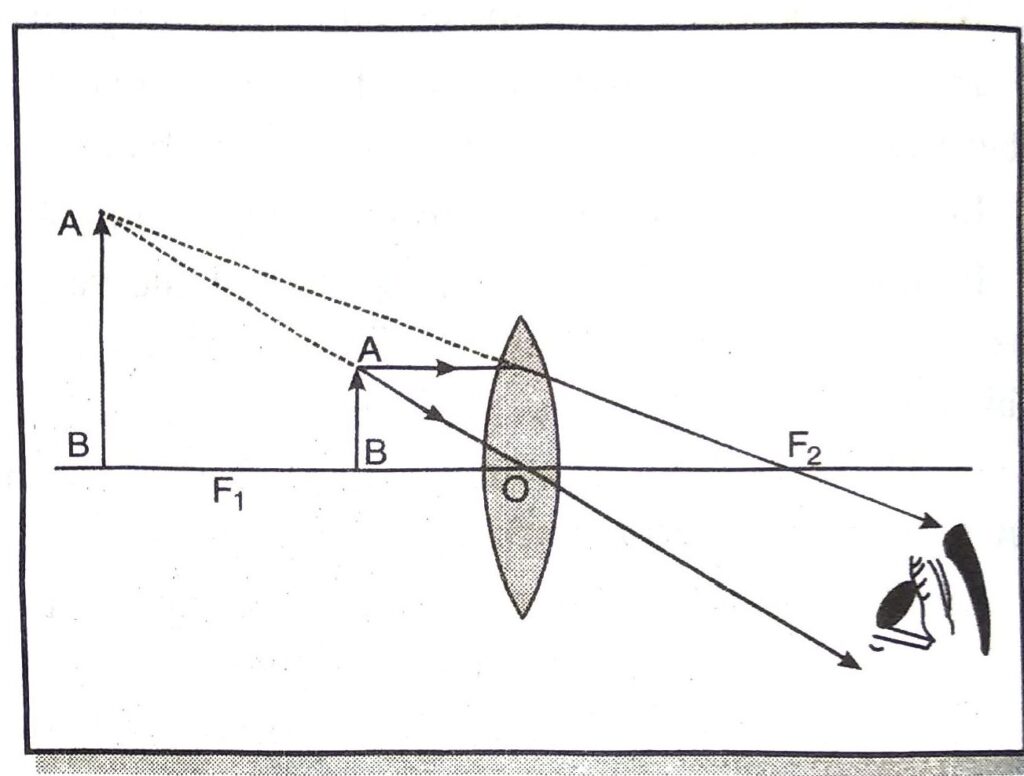


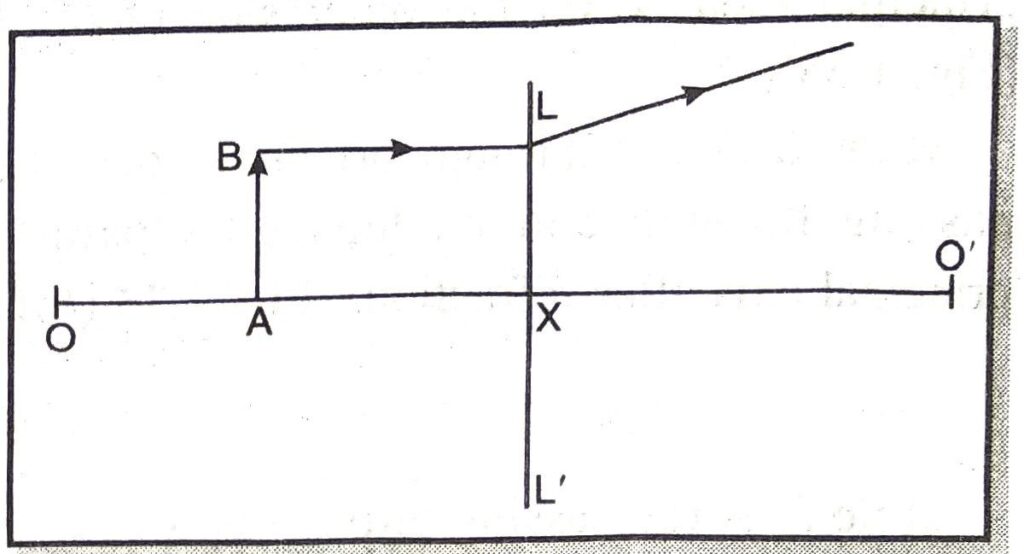
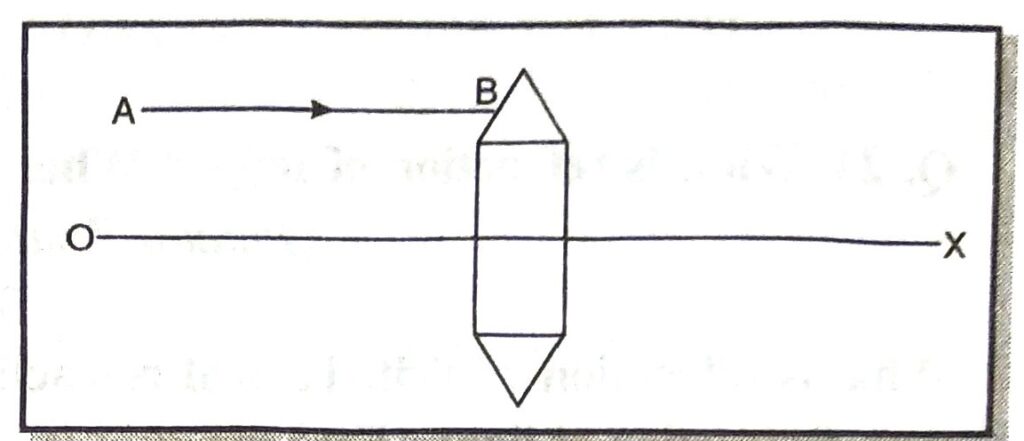

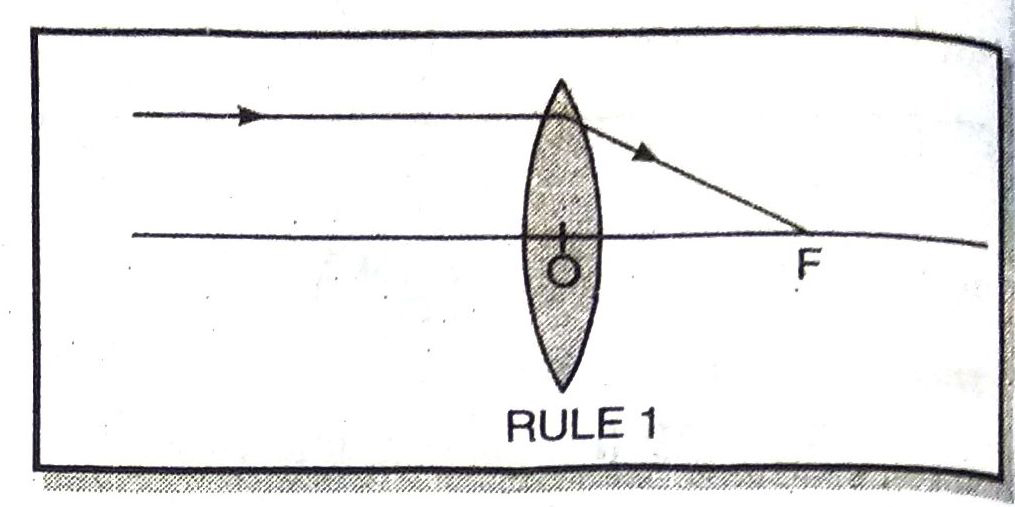
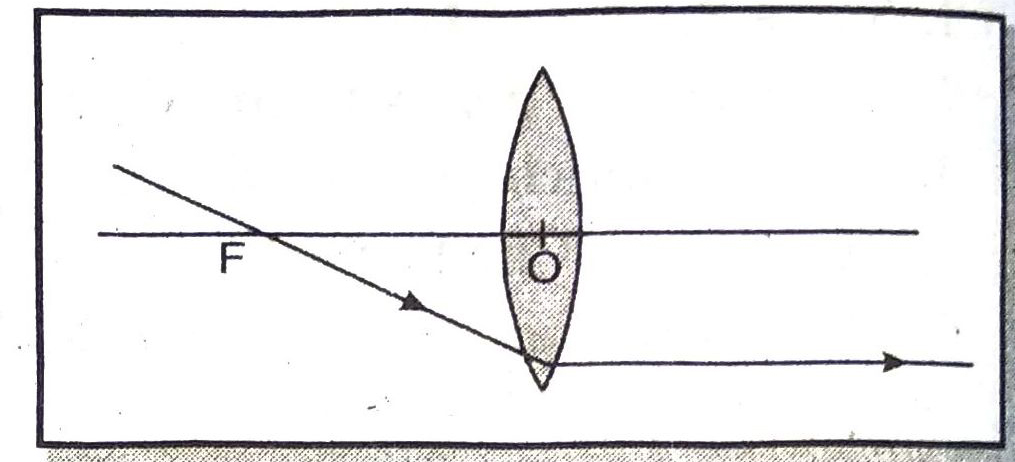
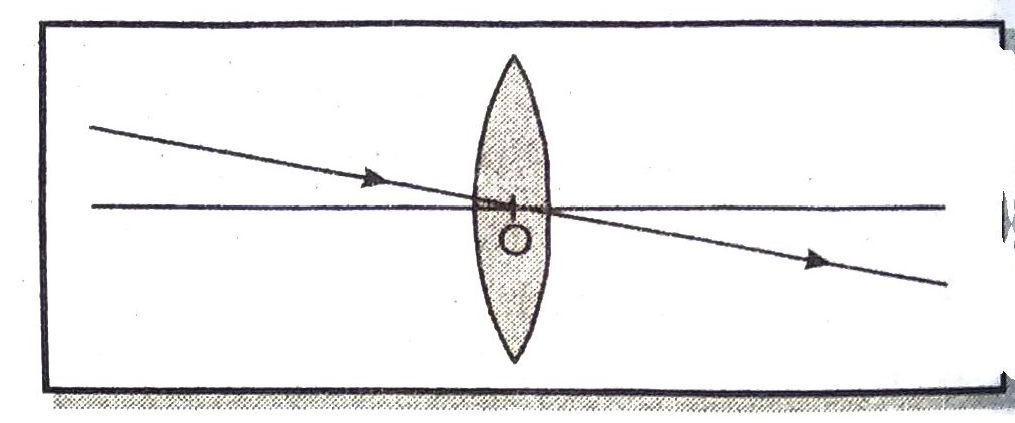
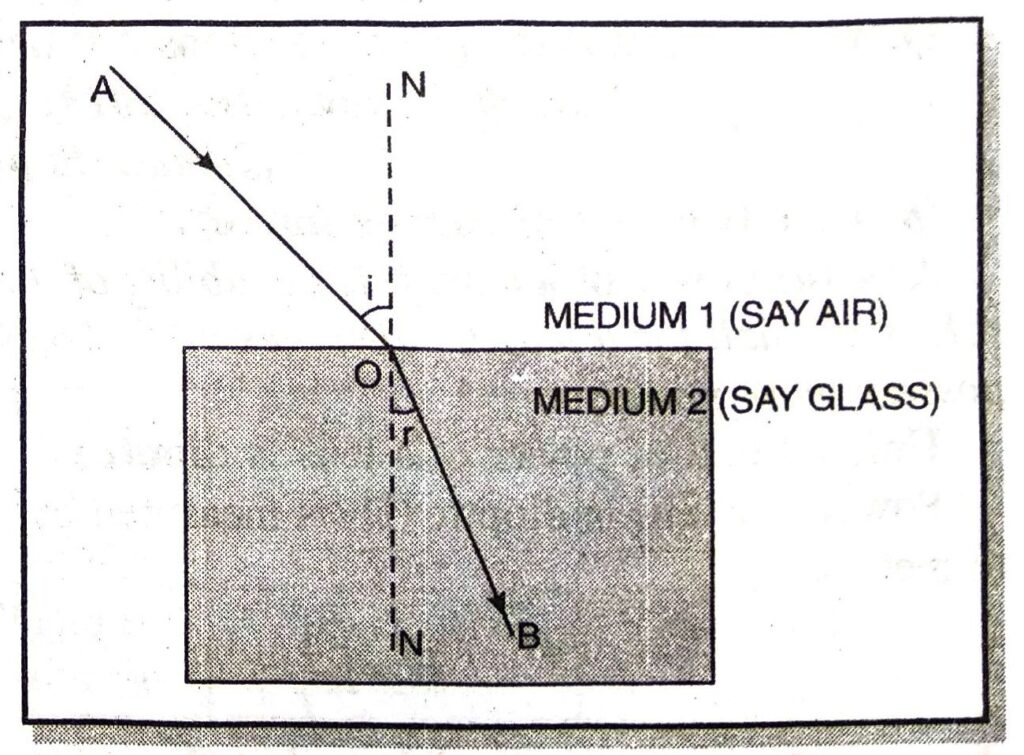
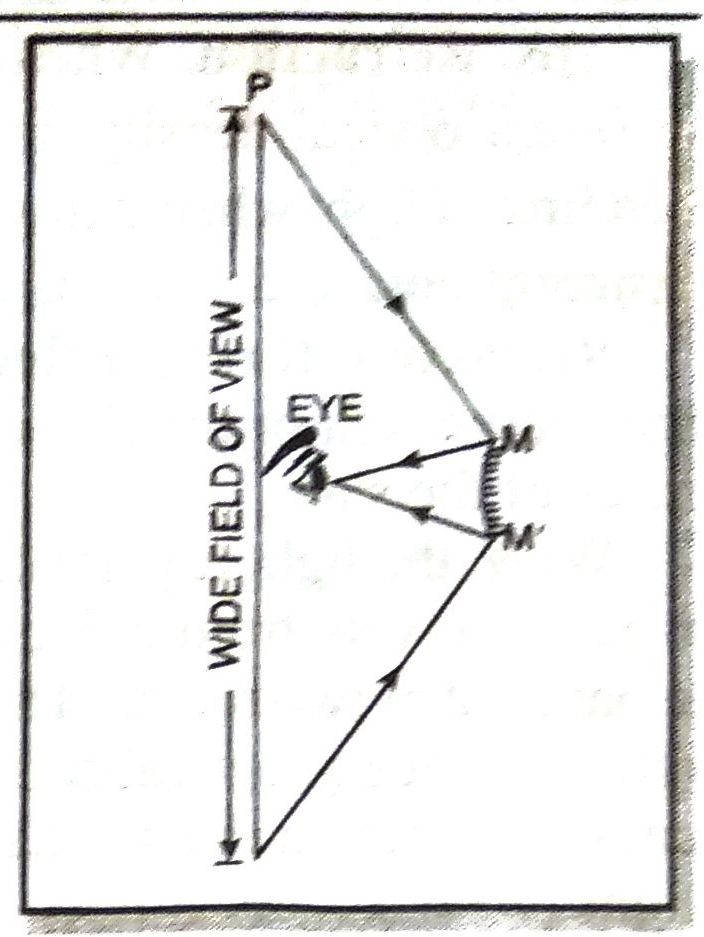

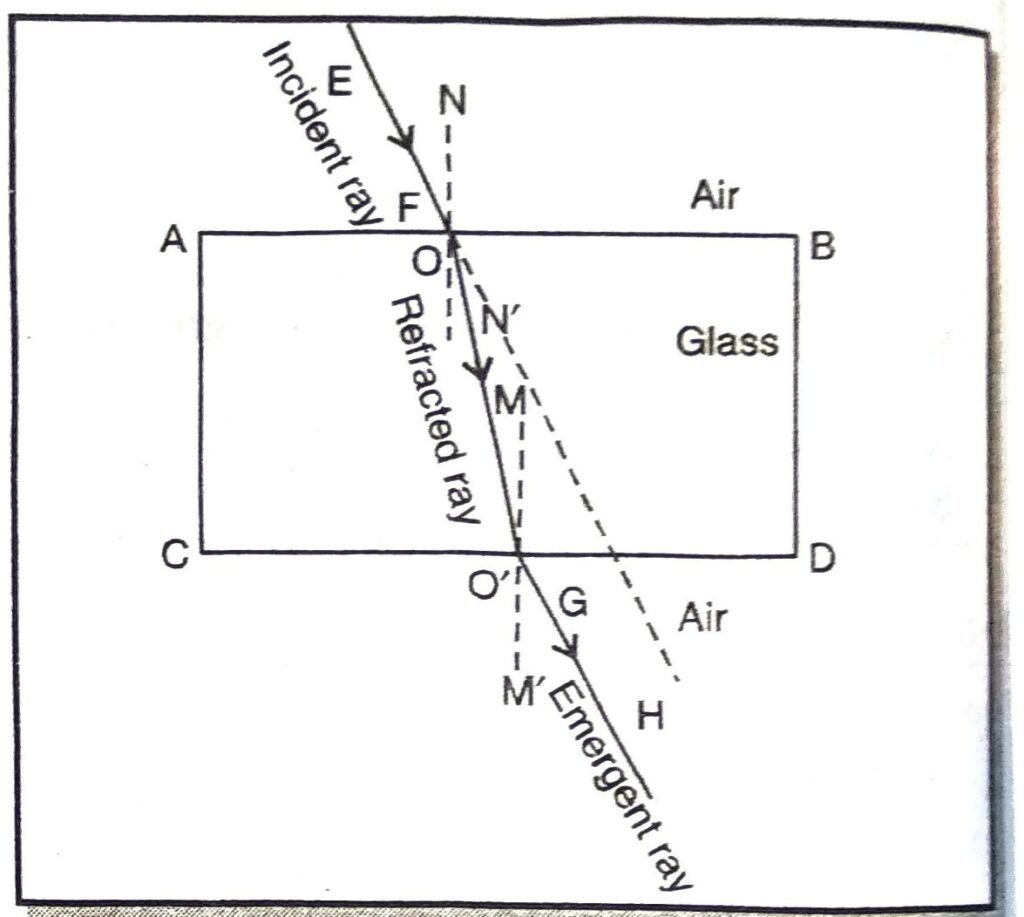
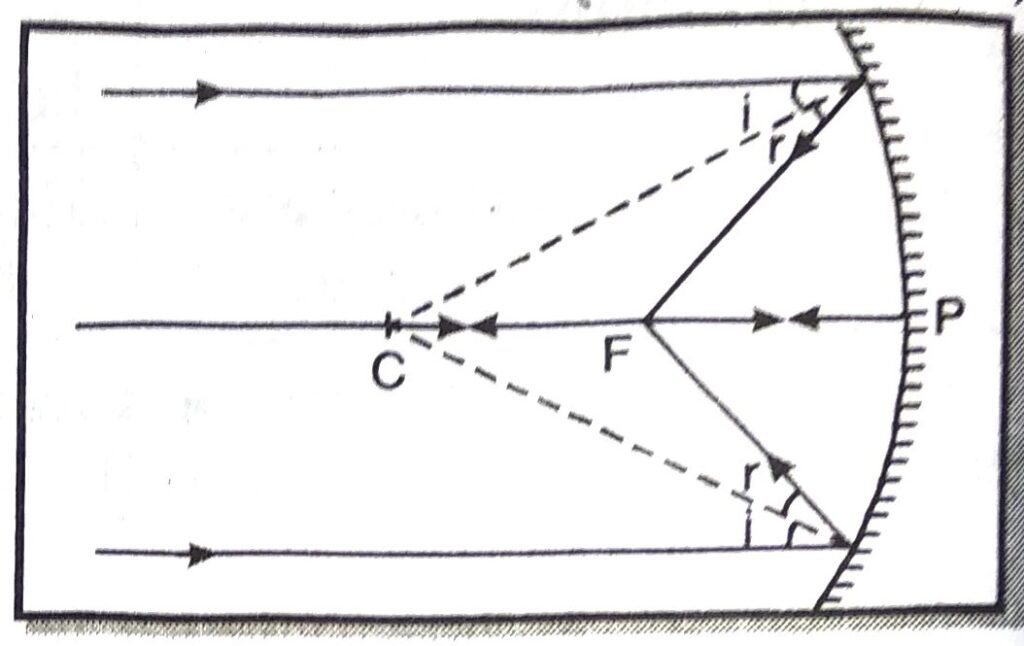
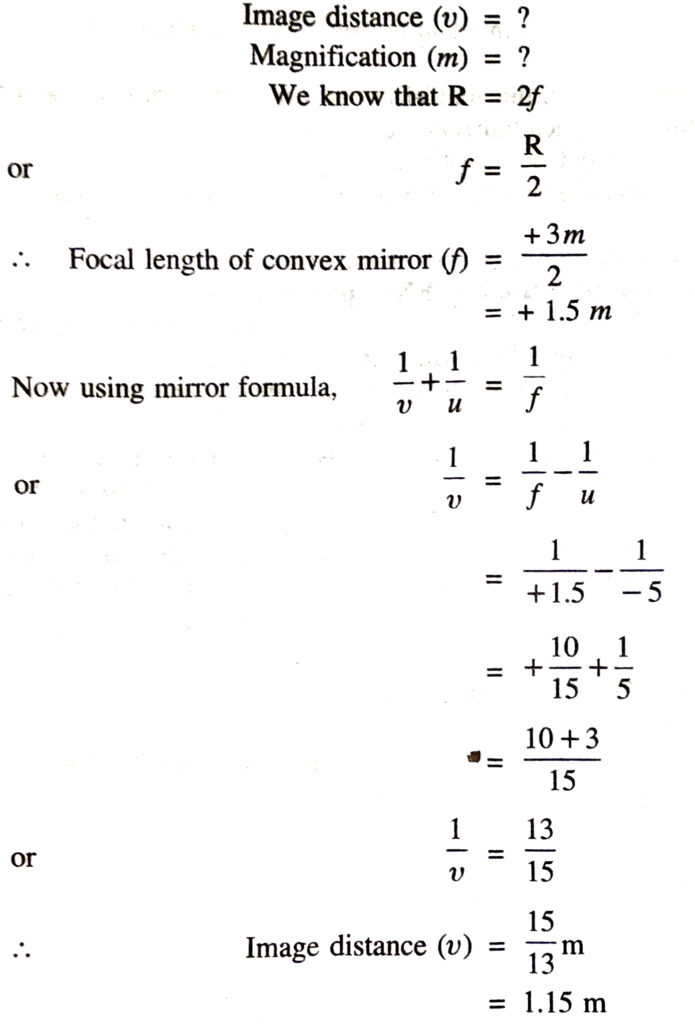
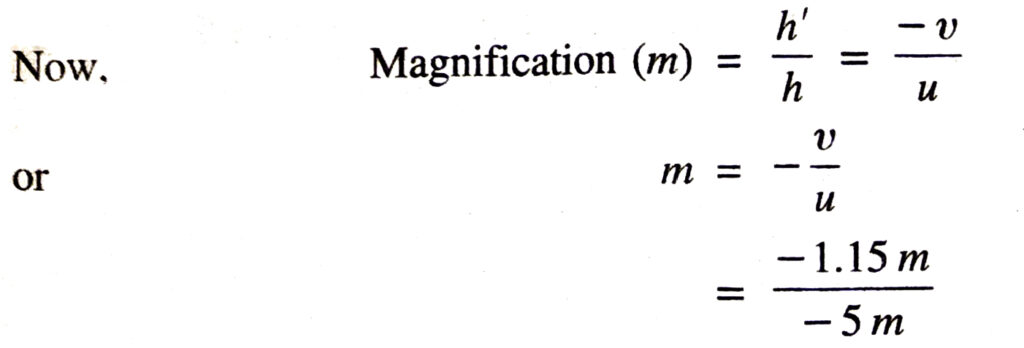
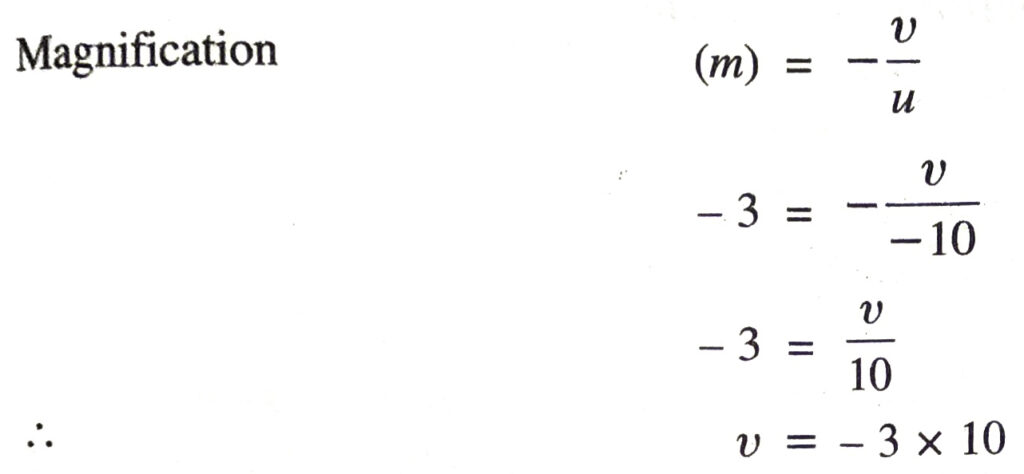
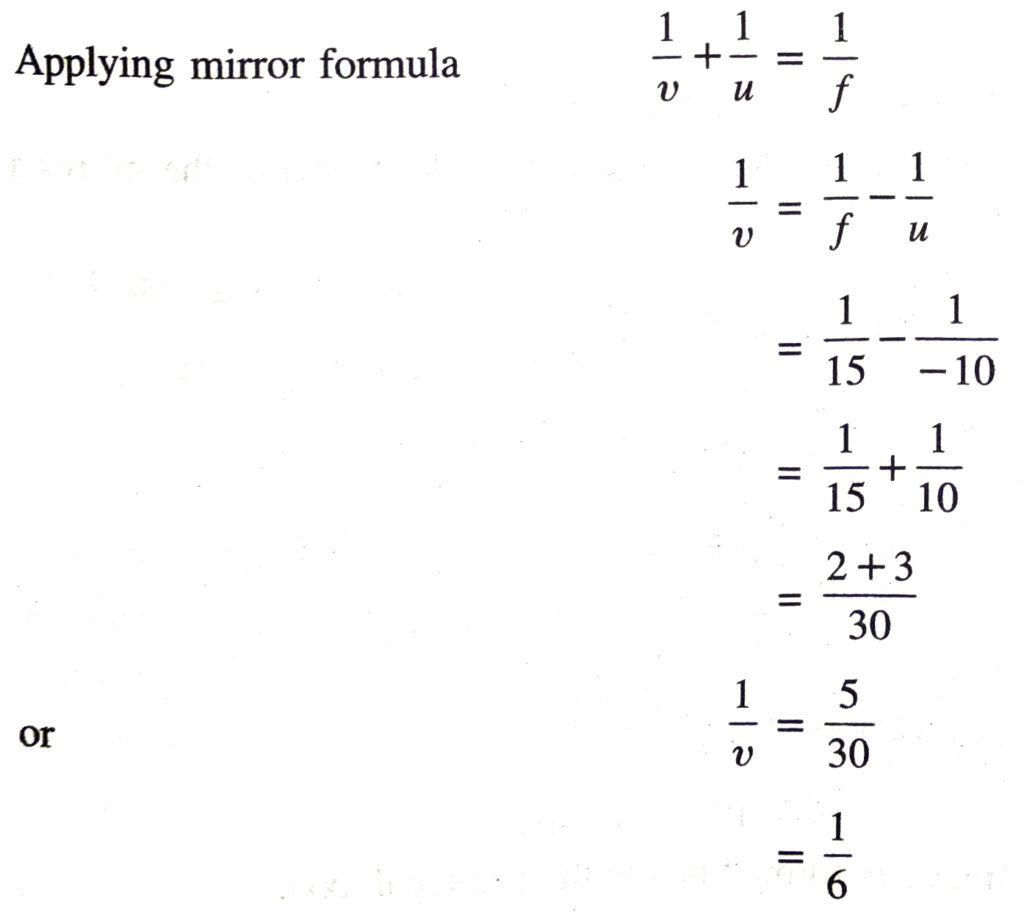
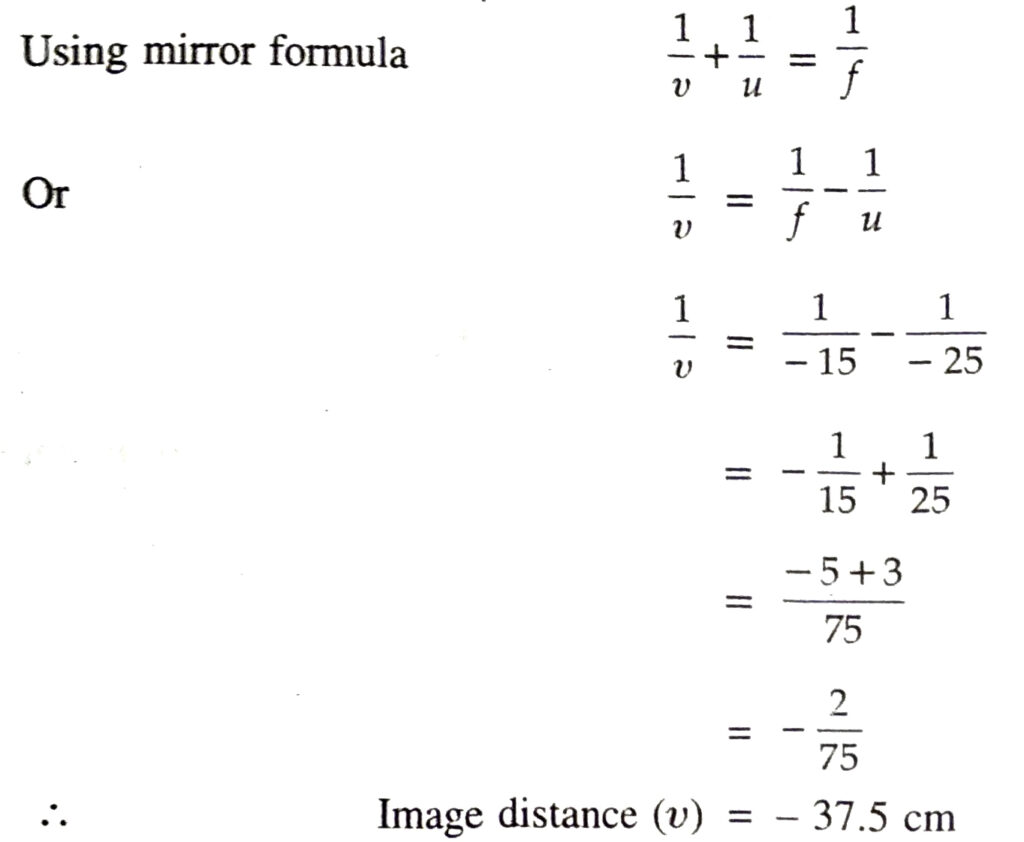
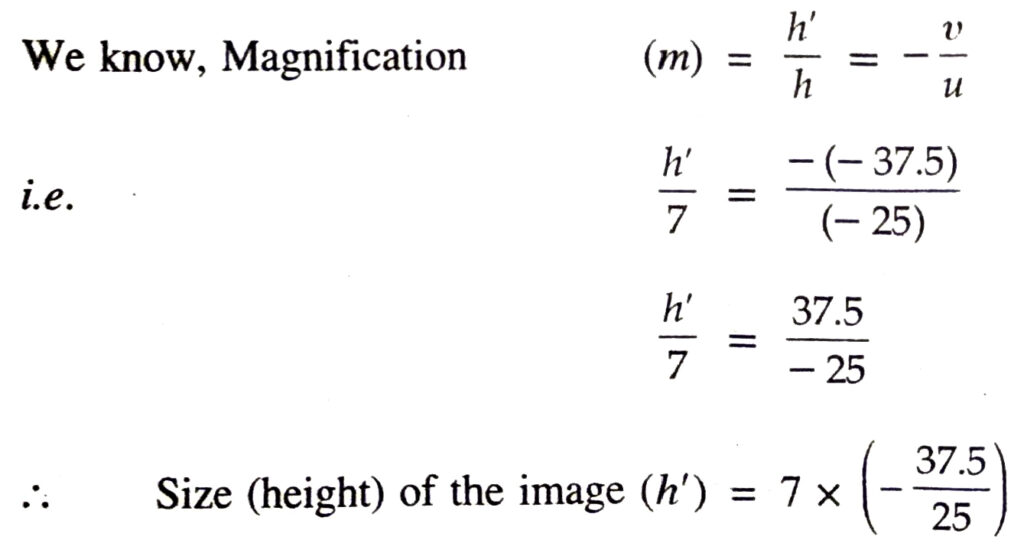
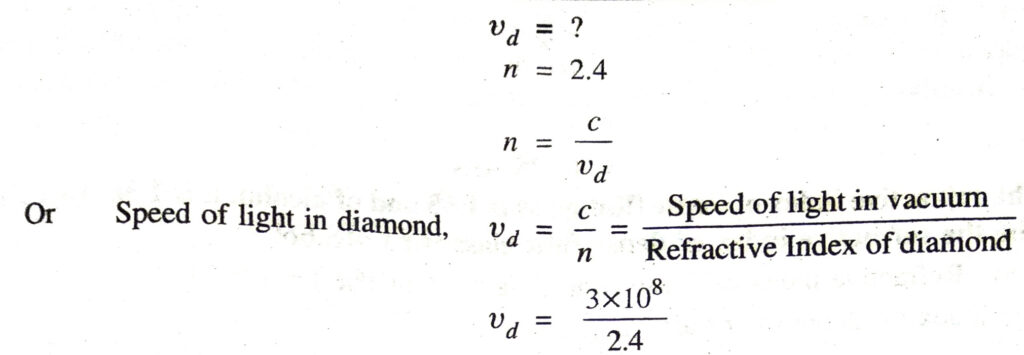
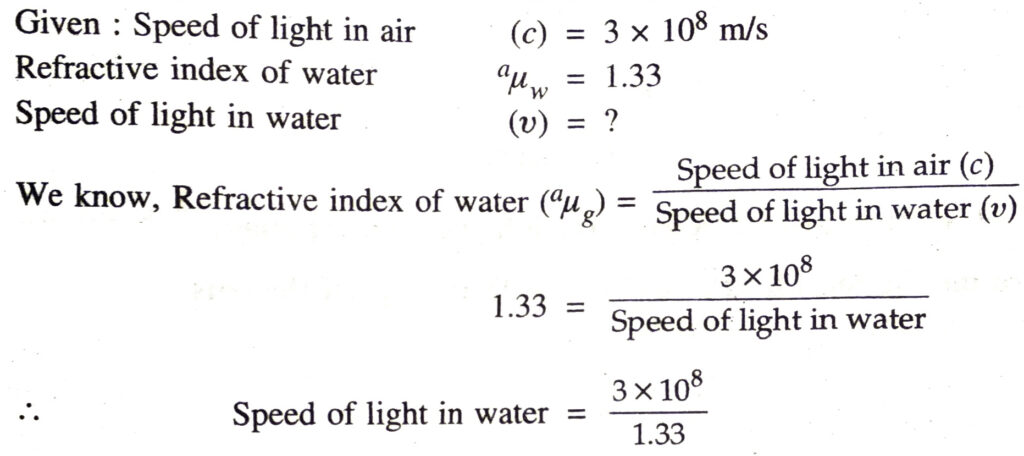


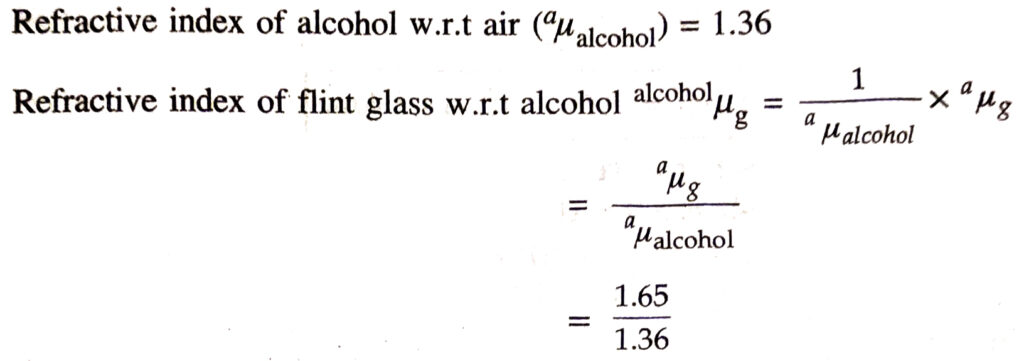
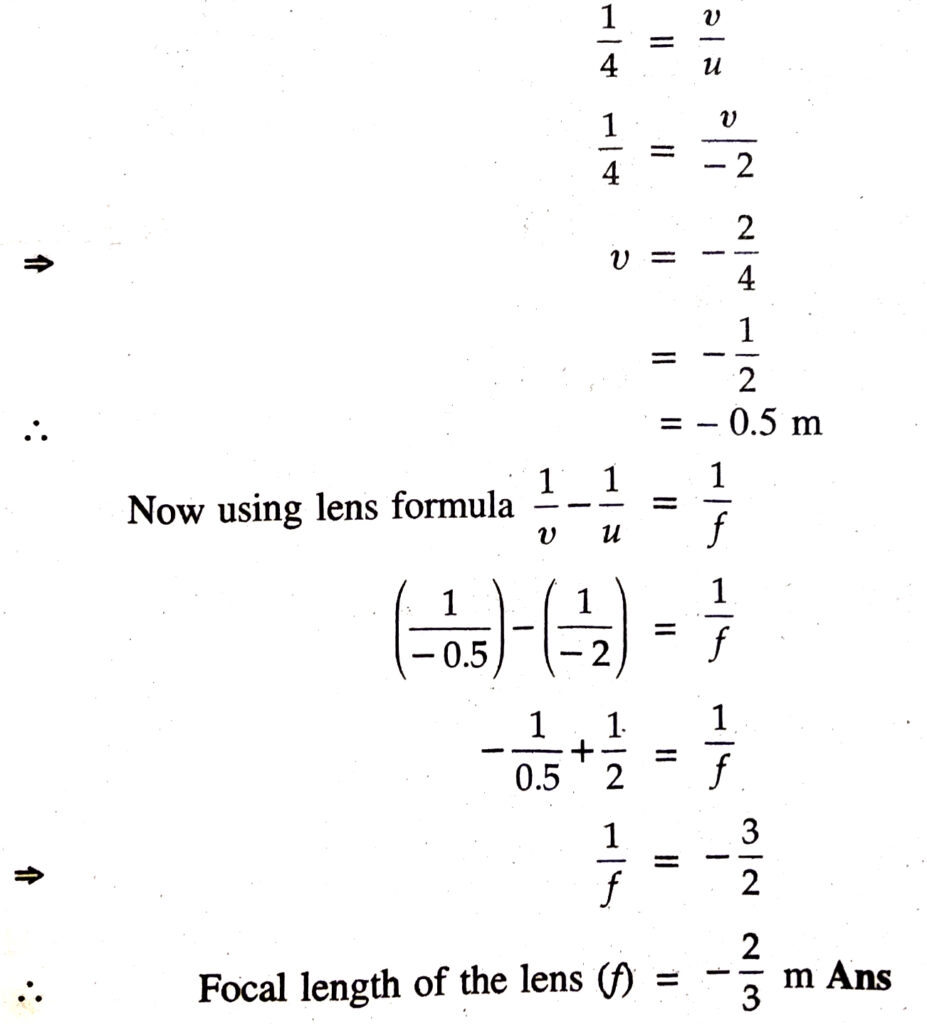
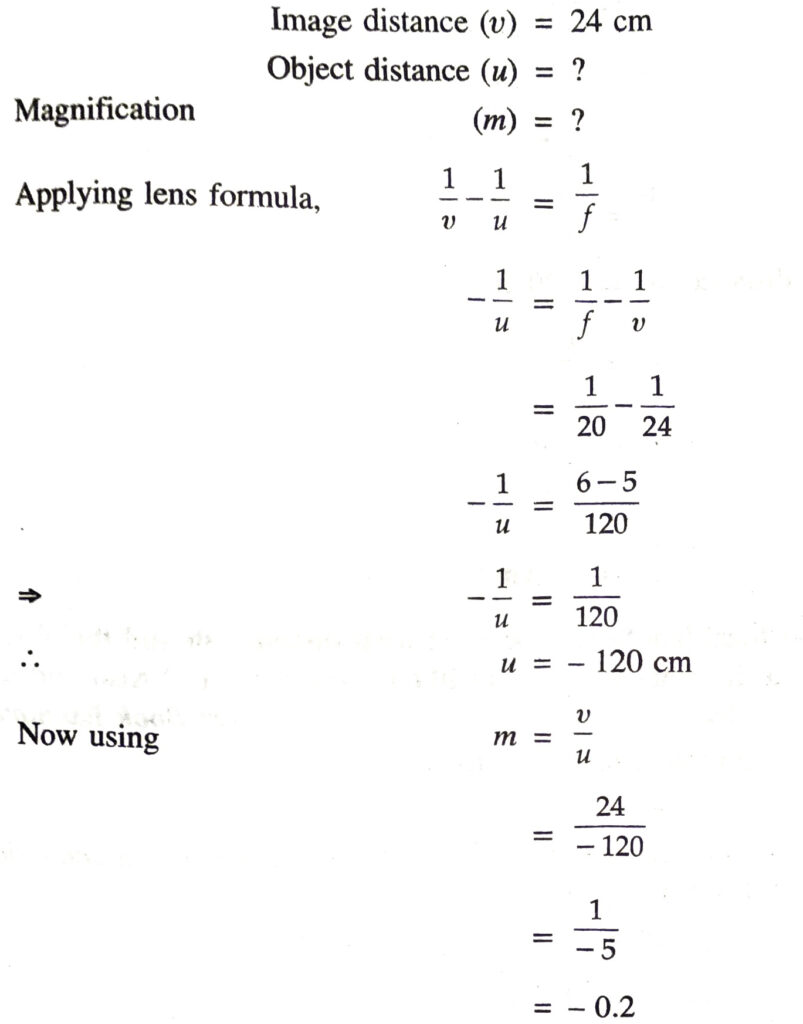

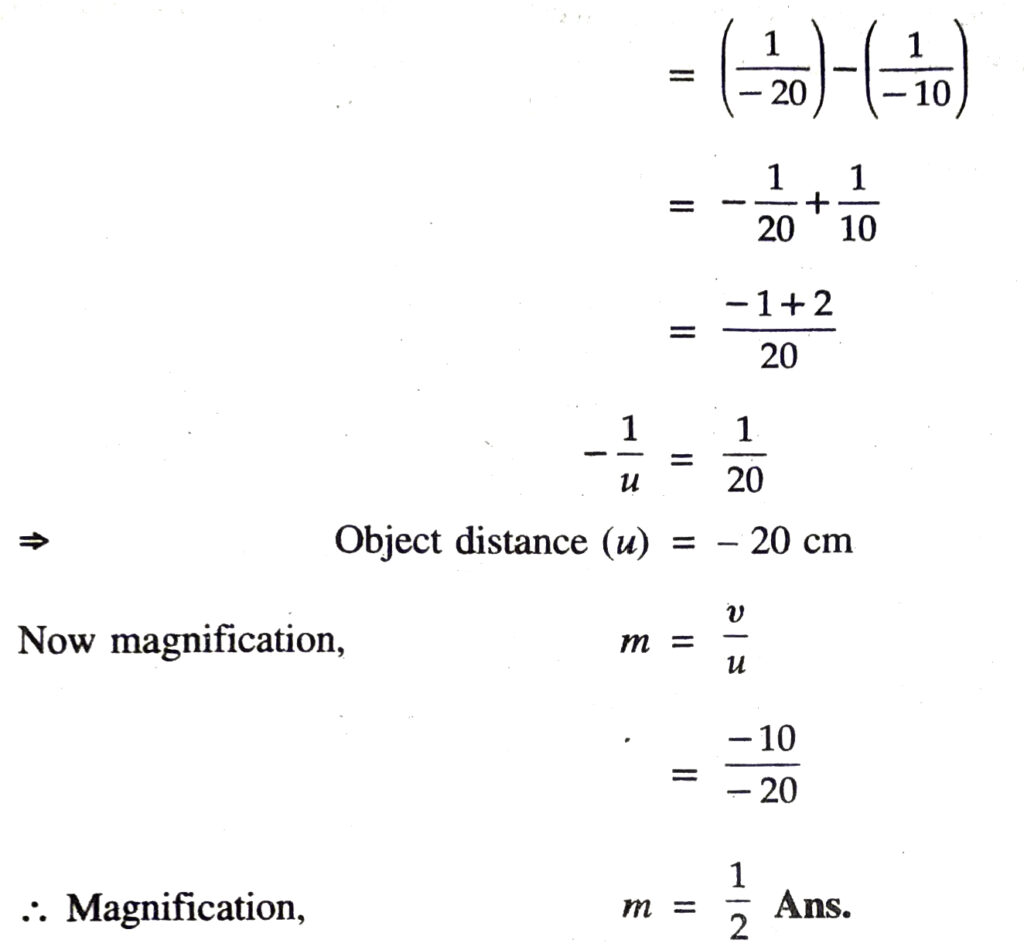
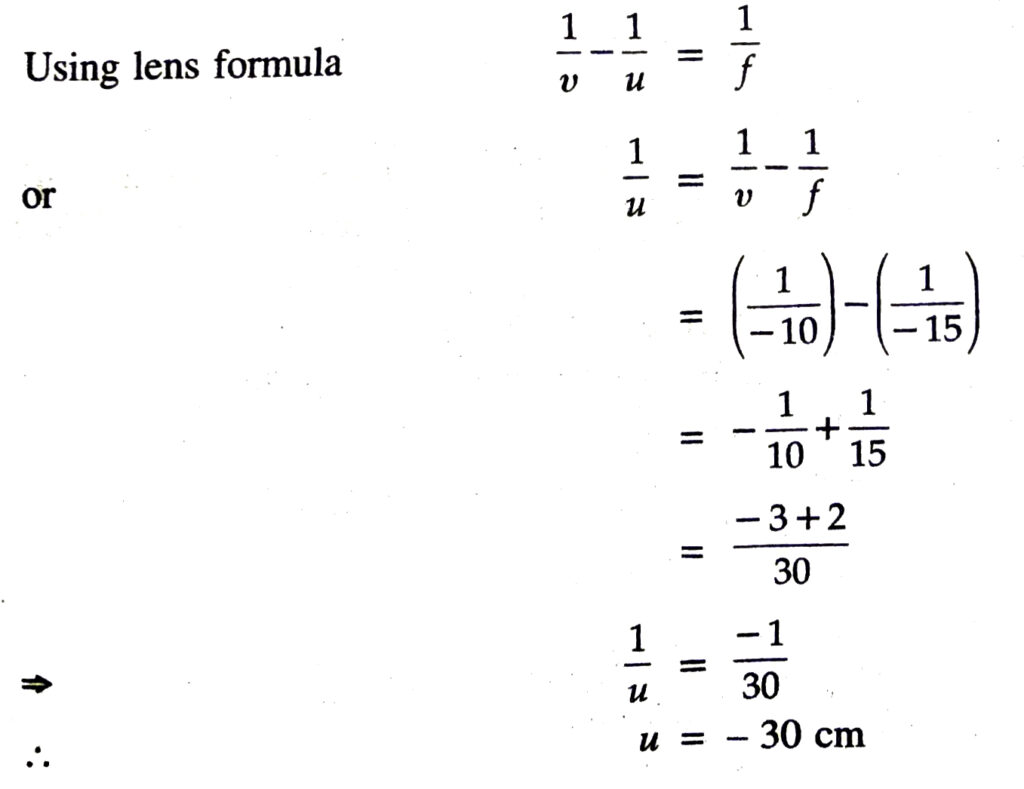
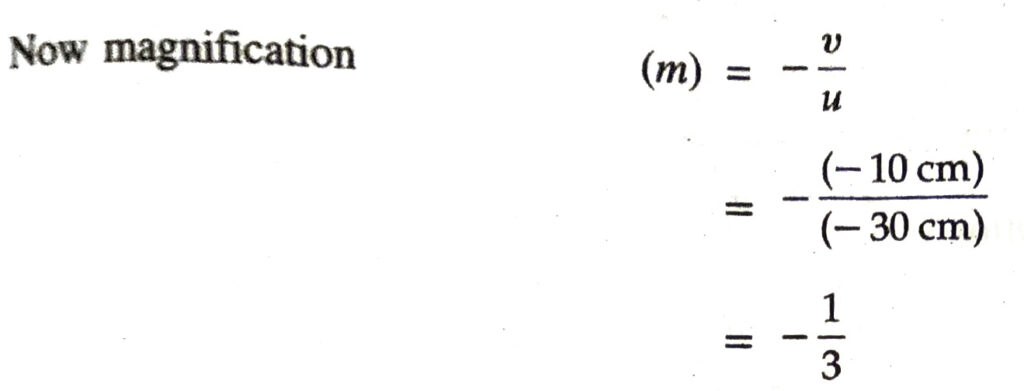
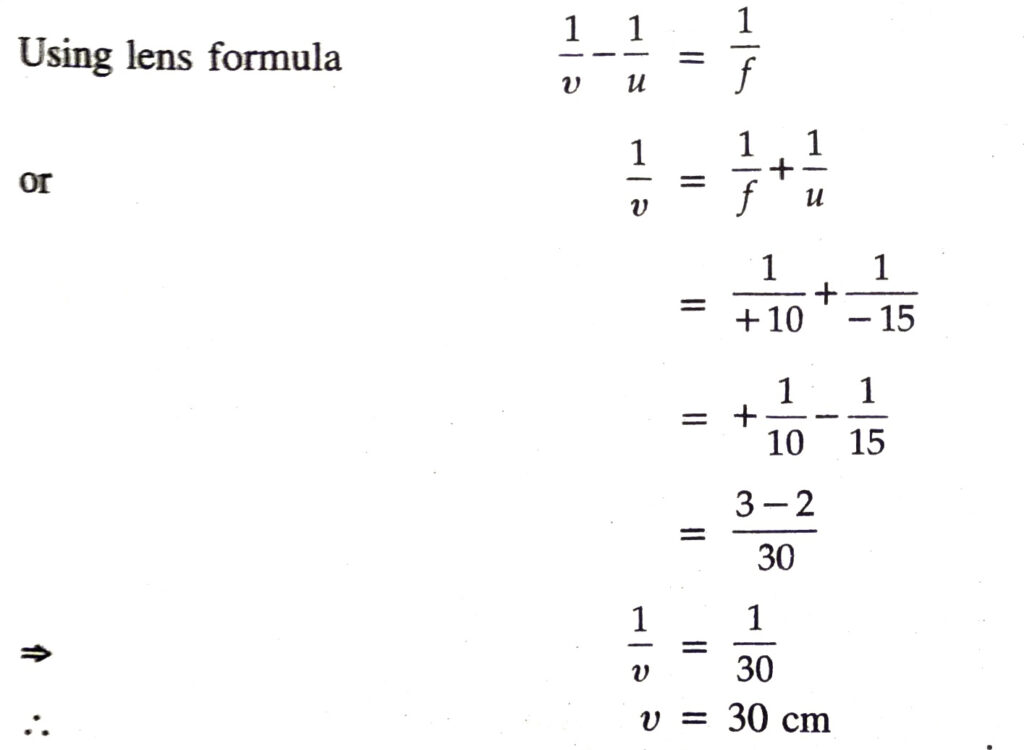

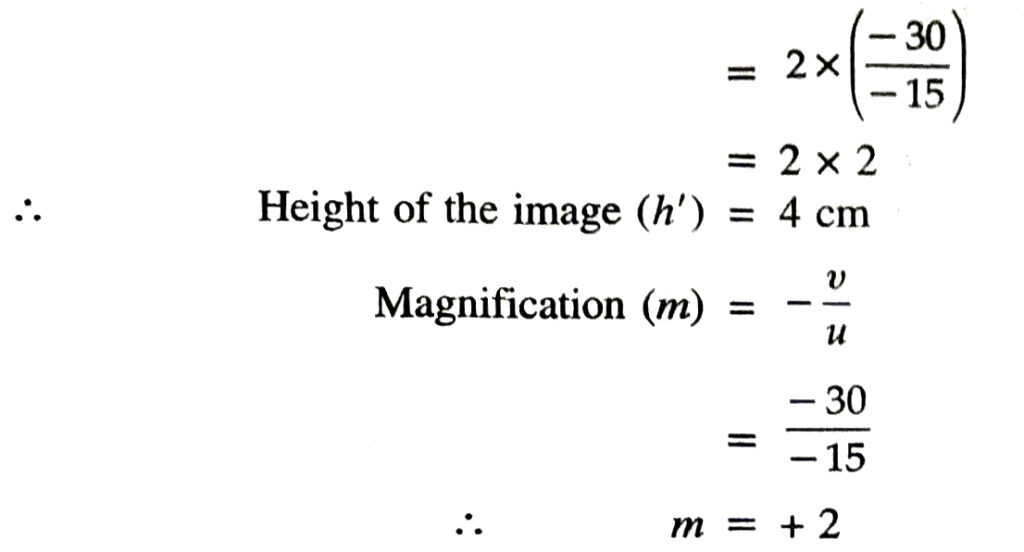
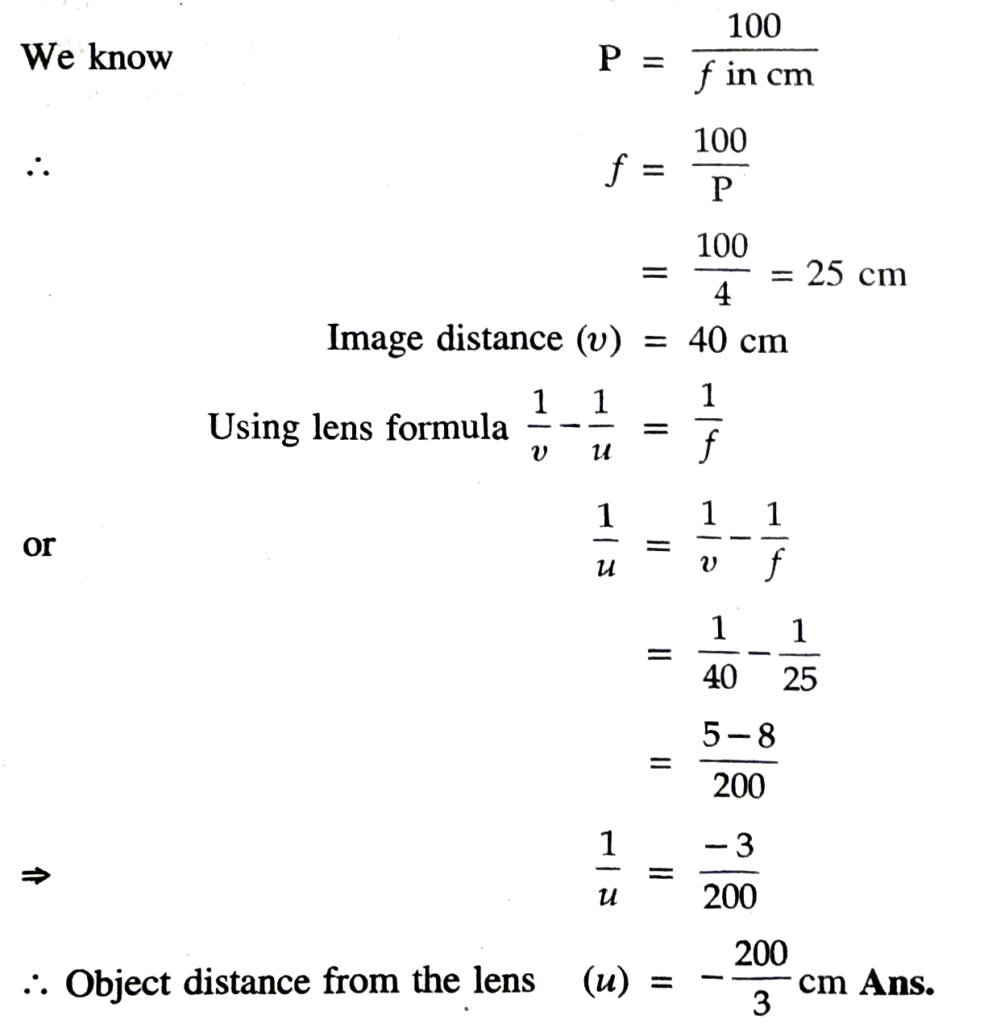

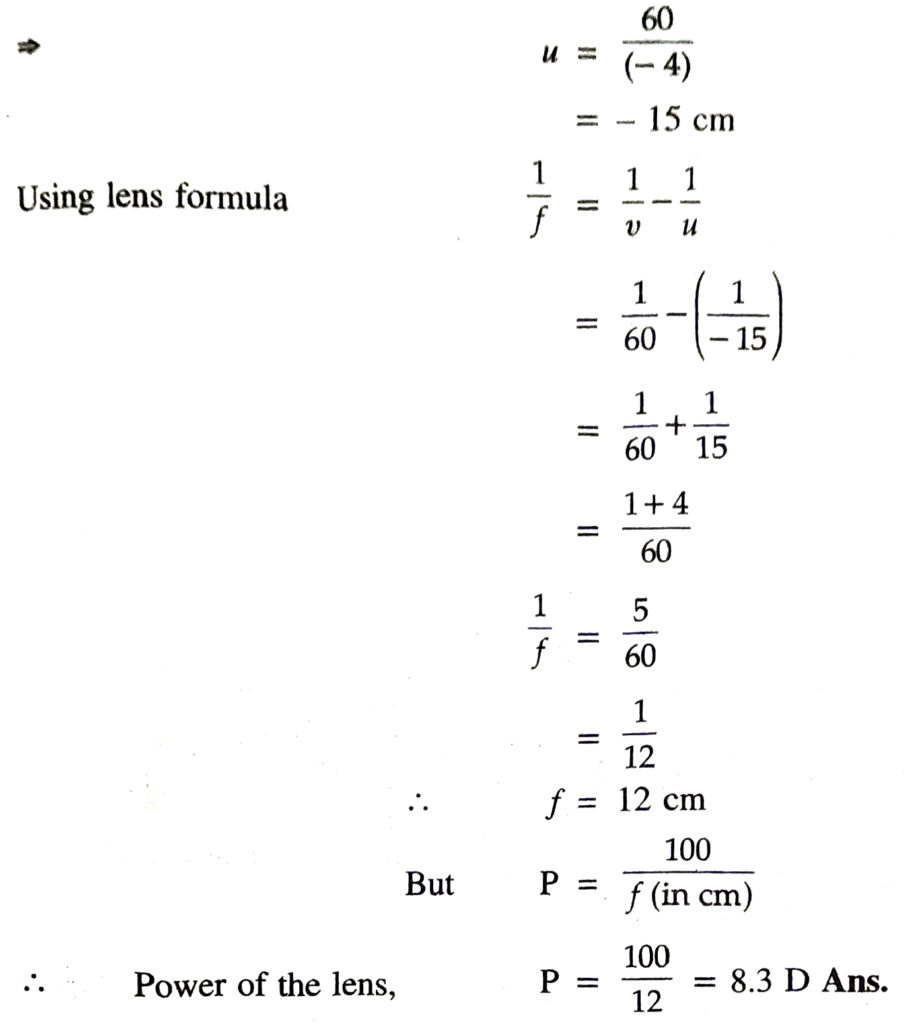
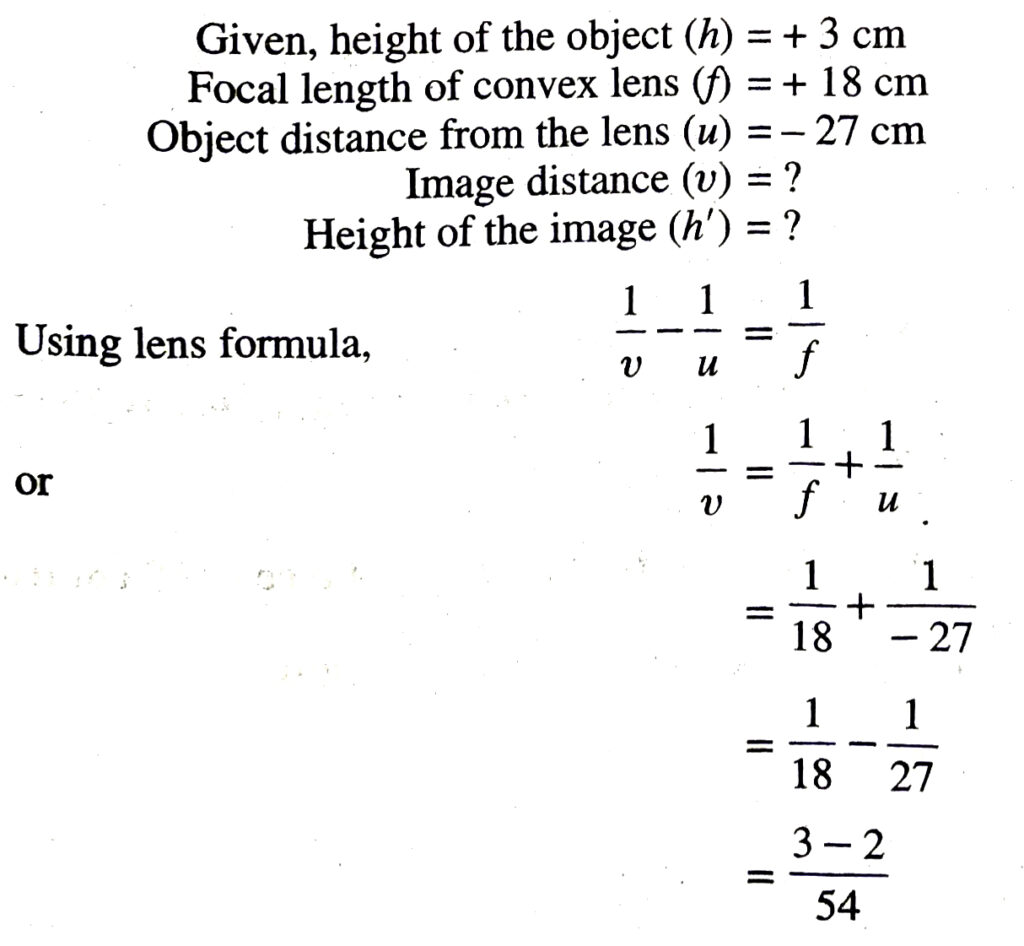

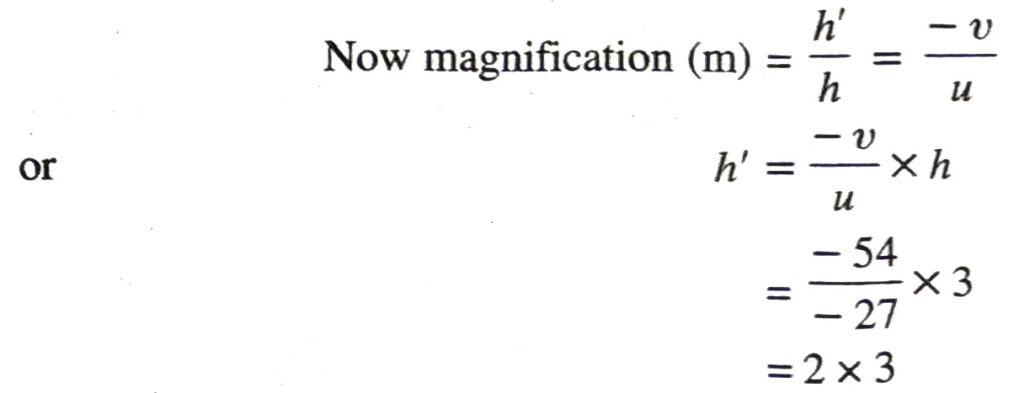
 (Ans. 30 cm in front of mirror)
(Ans. 30 cm in front of mirror)



